Anxiety gnaws at climbers on K2 and Broad Peak; conditions are still bad, rope-fixing work is seriously delayed, and the season is approaching its end.
This means that, for another year, there will be little or no chance to space out summit pushes. Instead, everyone on the mountain will probably go up at the same time. Fortunately, there are not that many climbers this year.
No-oxygen climbers may need to make some hard choices, particularly if the summit push timing finds them short of acclimatization.
Why the delay?
These days, the normal Abruzzi Spur route on K2 is climbed in commercial style, and Nepalese Sherpas complete the rope-fixing work, hired by international expeditions. The Sherpas are usually supported by Pakistani climbers. This year, bad conditions -- rain, snow, high winds, and rockfall -- have delayed the work.

Mingma David Sherpa, leader of the Elite Exped team, reported that he was stuck in Camp 1 for three days last week. He had stopped there because, contrary to the weather forecasts, there were storms and high winds on the mountain every afternoon. He reached as far as Camp 2 before retreating to Base Camp.
Last weekend, Mingma G and his Imagine Nepal team linked up with Madison Mountaineering's Sherpa staff and managed to get a little higher. "We fixed the rope to 7,200m, crossing the rocky section below Camp 3. Next will be the summit push on K2, depending on weather conditions."
Summit push or return home
The question is whether a summit push is a sensible option for those climbers who need more acclimatization.
"We could discuss why the damned ropes have not been fixed yet, but that is not going to solve the problem," wrote Serge Hardy of France, one of those who planned to climb without oxygen, but using the ropes and trails.
Hardy reported that he has done two trips to 7,000m (probably to the end of the ropes) across the Black Pyramid. "The fact remains that without at least one night at Camp 3 (7,300m) and a descent to recover, it's going to be pretty tough to even consider an ascent without oxygen," Hardy concluded.
Late July push
"Base Camp has split into two: those who leave and those who stay," Hardy said.
Madison Mountaineering reported a warm, sunny day in K2 Base Camp on Tuesday, but clouds are gathering again, and the forecasts show more bad weather coming. Lukasz Supergan (currently on neighboring Broad Peak) recently wrote that the next possible weather window is not expected until July 27-30.
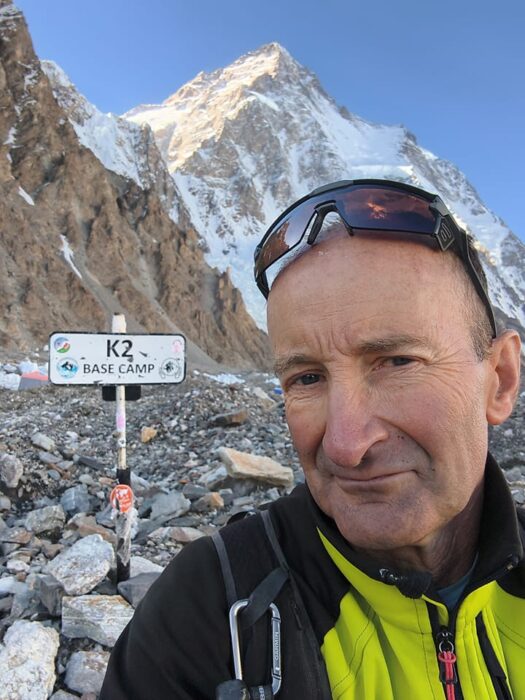
As for Hardy, he's among those ready to stay. "If the prospect of a last-ditch push looms, while treading carefully on loose rocks and putting my brain into 'avalanche detector' mode, I'll give it a try," he said. "It's a question of principles...because that's what we're here for."
We are waiting for news about other K2 climbers planning no-oxygen ascents, such as Israfil Ashurli of Azerbaijan and Csaba Varga of Hungary.
Several teams summited Gasherbrum I on Sunday from 11 am local time. Some climbers reached the top without supplementary oxygen, as this peak has traditionally been climbed, while others used bottled gas.
According to reports, 8K Expeditions placed Pavlo Sydorenko of Ukraine and Magdalena Arcimowicz of Poland on top, supported by Migma Dorchi Sherpa and Pem Lakpa Sherpa. The Nepalese climbers did not use supplementary oxygen.
Seven Summit Treks reported that Marco Confortola of Italy summited without supplementary oxygen, but was supported by Pasang Ngima Sherpa and Lakpa Tashi.
Two climbers outfitted by Active Adventure Holidays summited without supplementary oxygen: Marie Saame of Estonia and Abid Baig from Hunza, Pakistan. Baig summited Nanga Parbat and Broad Peak last year.
Imagine Nepal also reported summits, including Sashko Kedev, who has become the first Macedonian climber to complete the 14x8,000'ers. Wang Zhong of China and Nepalese climbers Dawa Gyalje Sherpa and Ngima Nuru Sherpa also topped out.
Gasherbrum I (8,080m), also known as Hidden Peak, is the first Karakoram 8,000'er summited this year. The teams in place may attempt Gasherbrum II next.
K2's somber face
On K2 and Broad Peak, bad conditions have stopped any progress by the rope-fixing teams. Expedition leaders are starting to show some concern about the lack of remaining time and possible weather windows.
Last Friday, an avalanche hit a team of four climbers who were descending from Camp 2, killing one of them. Rescue teams could not save Iftekhair Hussain Sadpara, an experienced local climber who had previously summited K2 twice, Broad Peak, and Gasherbrum II. He leaves a wife, two daughters, and a son, Ali Saltoro of Alpine Adventure Guides Pakistan told ExplorersWeb.
Trango Towers
Conditions this year may be better at lower altitudes, such as on the rocky spires of the Karakoram. An Indonesian team will try their luck on Trango's Nameless Tower (6,239m). The six-member team, led by Iqbal Kamal Fasya, will climb the Eternal Flame route to celebrate the 80th anniversary of Indonesia's independence. They will reach Base Camp today.

The forecast promises better weather, but climbers cannot afford to fully trust predictions that have failed often over the last two weeks. Despite this, climbers are cautiously ascending with summit hopes on Gasherbrum I and Broad Peak.
Fortunately, the skies have cleared enough for rescue services to airlift Waldemar Kowalewski to the hospital after a few agonizing days waiting in Base Camp with a broken leg.
Gasherbrum I
"The Gasherbrum I team climbed to Camp 2 today, planning to go further up and hoping for a summit chance," Sakhawat Hussain of Summit Karakoram said. "The weather seems to be OK between July 19 and July 22, but conditions are proving unpredictable. We can only hope for the best."

Broad Peak
On Broad Peak, everyone is still in Base Camp, but a significant number of climbers will move up tomorrow, toward Camp 2. The plan is to go to Camp 3 if the avalanche risk is acceptable, and then wait there until the weather allows a summit push. As mentioned in previous updates, there are no ropes from Camp 3, so the guides will have to fix the route as they move along the long summit ridge.
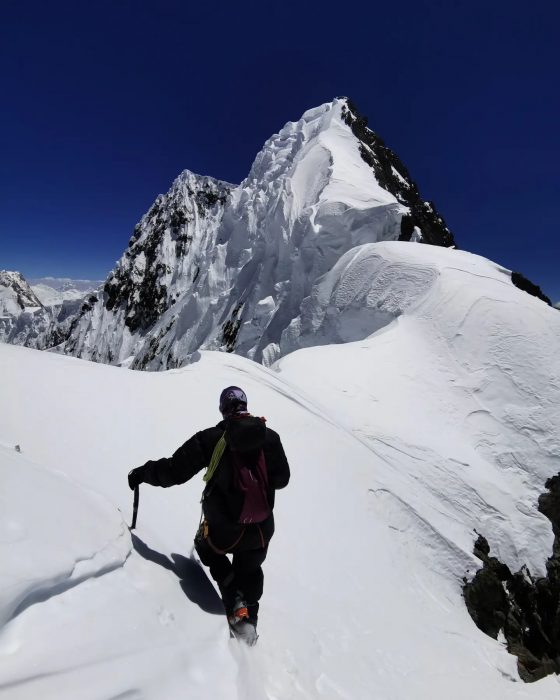
Kowalewski Airlifted
A helicopter has finally airlifted Waldemar Kowalewski to a hospital, one week after he broke his leg in an avalanche. Bad weather kept helicopters grounded until today. Rescue services admitted Kowalewski to the Kuwait Medical Complex (KMC) in Skardu.
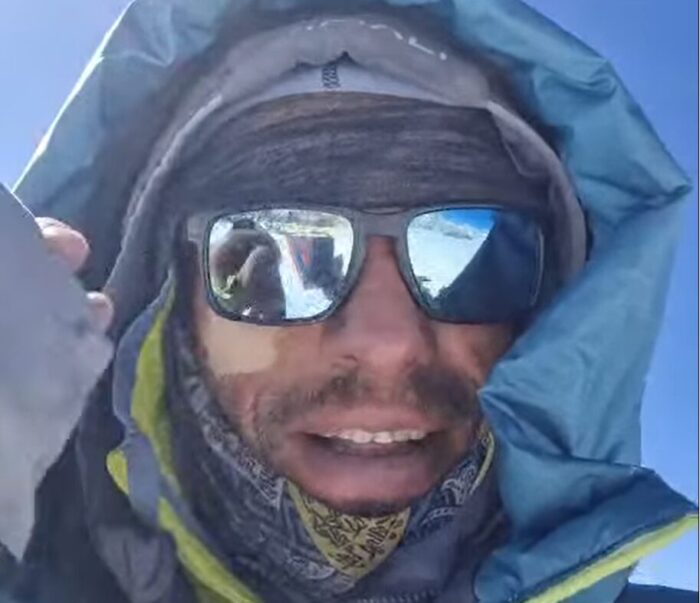
K2
On K2, there is no news of any progress beyond Camp 2. However, Mingma G of Imagine Nepal mentioned his team would try to open the way to Camp 3 this weekend.
Yakshin Gardan Sar
The Italian Alpine Club has published Stefano Ragazzo's expedition report on their Facebook page, where they provide further information about Chris Wright's accident, which put an end to the team's expedition. According to the report, Wright had a foot injury:
During an acclimatization climb at approximately 6,100m, Wright suffered a foot injury that prevented him from continuing. His climbing partners immediately took action to rescue him, rigging approximately 500m of abseils on abalakov ropes to lower him to Camp 1 at 5,500m. There, after approximately 24 hours, a Pakistani Army helicopter was able to evacuate Wright and transport him to Skardu Hospital, where he is currently in a stable condition.
You can read the report in Italian here.
With the rope-fixing work stalled on K2 and Broad Peak, the next summit news might come from the Gasherbrums. Climbers have been in Camp 1, ready to go, all week. Finally, they have a summit plan.
Gasherbrum I weekend summits?
"Forecasts are not optimistic until at least July 19, but the wind is expected to drop to 20-25kmph (which is okay for a summit push) on July 18-19," Sakhawat Hussain, Managing Director of Summit Karakoram, told ExplorersWeb. "Therefore, we have scheduled the summit push on Gasherbrum I for between July 19 and July 20, if everything goes well. Then we will go for Gasherbrum II."
Hussain described weather conditions today as "manageable, but they might change at any moment."
At the beginning of this week, the expedition leaders hoped to attempt one of the Gasherbrums on July 17-18, but the weather halted that plan.
Summit Karakoram, a Pakistani agency, is outfitting a team from Nepal-based company 8K Expeditions, led by Saila Sherpa. However, apparently, all the commercial teams are moving at the same pace. Nirmal Purja is there, aiming to bag his 51st and 52nd 8,000'er summits.
Specific tactics
Both Gasherbrum I and II provide a slightly shorter climb than other 8,000'ers in Pakistan. The key is to take positions on the top of the tricky Gasherbrum glacier, which has become the most exposed section of the climb to both peaks. Warm conditions cause slushy snow with hard ice underneath and many open crevasses. This is why teams leave Base Camp and settle at Camp 1 to wait for the right time to launch summit pushes.
A lack of ropes on the upper sections can be solved with the same tactic used on Nanga Parbat some weeks ago: Sherpa guides will lay ropes as they go, with the commercial climbers following.
French and Italians
There are also some small groups aiming for the summit without Sherpa support. Among them are French climbers Charles Dubouloz and Symon Welfringer, who abandoned their plans to climb the highly difficult West Face of Gasherbrum IV because of a lack of ice on the wall. Mathieu Ruffray has also joined the team as a filmmaker.
"The dryness of these immense fortresses caught us off guard and pushed us to reconsider the location of our base camp for the coming month," Dubouloz reported yesterday.
The team headed for the common Base Camp for Gasherbrum I and Gasherbrum II, but has not made their next goal clear. They have, however, been able to acclimatize by climbing up to 6,414m and spending two nights at 5,700m and then 6,000m. They still need a second rotation before heading for a summit.
There is at least one other French team eyeing an alpine-style ascent, and an Italian expedition whose original goal was also Gasherbrum IV, which they hoped to climb from its north side.
Broad Peak
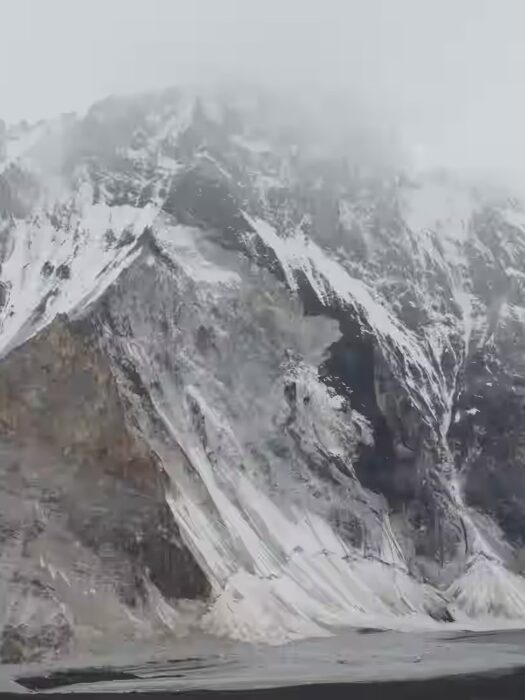
The situation is similar on Broad Peak. An optimistic forecast motivated some climbers to go up at the beginning of this week, but the prediction proved wrong. The weather is still bad, with snowfall on the upper part of the mountain and -- even worse -- rain in Base Camp and on the lower sections.
"Our mountain is melting before our eyes," Lukasz Supergan of Poland wrote.
Kim Chang-ho was a South Korean mountaineer who summited the 14x8,000'ers without supplemental oxygen in record time. He pioneered numerous new routes and first ascents on 6,000m and 7,000m peaks. Today, we revisit his most notable climbs.
Early years
Most sources list Kim's birthday as September 15, 1969, but mountaineering historian Bob A. Schelfhout Aubertijn confirmed that Kim was born on July 13, with confusion arising from the Korean age system.
In 1988, Kim began studying International Trade at the University of Seoul. Inspired by Alexander the Great's exploits, Kim started climbing with the university’s Alpine Club.
His frequent expeditions delayed his academic progress, and he didn’t earn his Business Administration degree until 2013. Kim viewed his humanities studies as a way to enrich his climbing. He believed that understanding culture and history deepened his connection to the mountains.
By the 1990s, he was already tackling rock-climbing routes up to 5.12. Early expeditions to the Karakoram, including attempts on 6,286m Great Trango in 1993, and 7,925m Gasherbrum IV in 1996, revealed his bold -- sometimes reckless -- ambition. On Gasherbrum IV, he reached 7,450m but faced a sheer rock face without protection, instructing his partner to release the rope if he fell.
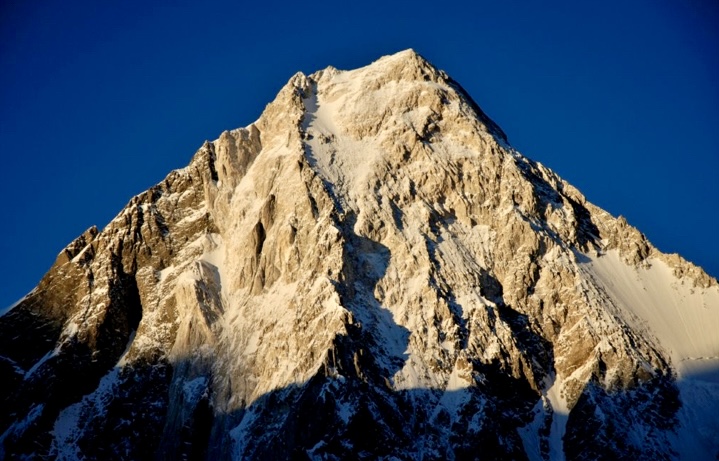
Exploration of northern Pakistan
Between 2000 and 2004, Kim embarked on solo trips in northern Pakistan’s Karakoram, Hindu Kush, and Pamir ranges, prioritizing discovery over summits. As detailed in the 2023 American Alpine Journal, he surveyed glacial valleys, documented hundreds of unclimbed peaks, and built relationships with local farmers and herders. These solitary treks were driven by a desire to understand the geography, culture, and history of the regions.
Kim’s journals reveal a meticulous approach, with photographs and descriptions of potential routes forming a database that remains a valuable resource for climbers. His interactions with locals shaped his climbing decisions, ensuring cultural sensitivity in his choice of peaks. This period of exploration laid the groundwork for his later ascents, blending adventure with respect for the human and natural contexts of the mountains.
Photo: Kim Chang-ho
Four first ascents of 6,000m peaks
Kim’s explorations in Pakistan led to a series of remarkable solo first ascents in 2003, when he was 33. The American Alpine Journal documents four solo climbs of 6,000m peaks in the Hindu Raj and Karakoram ranges.
He carried out the first ascent of 6,105mm Haiz Kor in the Thui Range of the Hindu Raj, by a challenging route via the southeast face and south ridge through a complex icefall.
Kim also made first ascents of 6,225m Dehli Sang-i-Sar in the Little Pamir, 6,189m Atar Kor in the Hindu Raj, and 6,200m Bakma Brakk in the Masherbrums.
Dehli Sang-i Sar from the southwest, showing the general line of Kim Chang-ho's solo ascent along the upper east ridge in 2003. Photo: Kim Chang-ho
Mastering 7,000’ers
In 2008, he led the first ascent of 7,762m Batura II, though the expedition’s use of fixed ropes drew criticism, prompting him to refine his lightweight approach.
In 2012, Kim and An Chi-young made the first ascent of 7,092m Himjung in Nepal, climbing via its southwest face. The expedition earned them the Piolet d’Or Asia Award.
In 2016, Kim and two partners opened a new 3,800m alpine route on the south face of 7,455m Gangapurna in Nepal. Described by the 2017 Piolet d’Or committee as "bold and lightweight," it earned an Honorable Mention, marking a historic recognition for Korean climbers.
During the Gangapurna expedition, Kim and his partners also attempted the south face of unclimbed Gangapurna West, where they reached the summit ridge.
One year after Gangapurna, the tireless Kim led an expedition to Himachal Pradesh in India, aimed at fostering a younger generation of Korean climbers and developing their skills and experience. The team made the second ascent of 6,446m Dharamsura, and climbed 6,451m Papsura via a direct route on the south face.
Choi Seok-mun and Park Joung-yong, climbing partners of Kim Chang-ho, approach the summit of Gangapurna. Photo: Korean Way Project
Summiting 8,000'ers
Kim summited all 14 of the world’s 8,000m peaks without supplemental oxygen, in record time.
Starting in 2006 with the Busan Alpine Federation’s Dynamic Hope Expedition (led by Hong Bo-Sung), Kim and a small team relied on minimal support, avoiding Sherpas and oxygen. Kim studied geography and history to learn more about his routes.
Kim completed the 14x8,000'ers in 7 years, 10 months, and 6 days, setting a record for the fastest completion without oxygen at the time. He surpassed Jerzy Kukuczka's record by one month.
Kim didn't set out with the explicit goal of climbing the 8,000'ers so quickly. His pursuit was primarily driven by his passion for mountaineering and a desire to climb these peaks in a pure, lightweight style.
Kim ascended three 8,000m peaks twice: Nanga Parbat, Gasherbrum I, and Gasherbrum II.
Among his 8,000m climbs, his south-north traverse of Nanga Parbat in 2005 and his sea-to-summit ascent of Everest in 2013 deserve special mention.
The south face of Gangapurna, showing (in red) the Canadian Route (1981), and (yellow) the Korean Way (2016). Photo: Korean Way Project
Nanga Parbat, 2005
In 2005, Kim climbed Nanga Parbat’s massive Rupal Face. The Korean Nanga Parbat Rupal Expedition lasted 109 days. They arrived at Base Camp on April 20 after a heavy snowstorm. Over the next 12 days, the team set up Camp 1 at 5,280m and Camp 2 at 6,090m, following a line close to the 1970 Messner Route.
The weather was brutal, with snow falling daily in May, destroying seven tents and burying Camp 2 under fresh snow. Despite these setbacks, by June 14, after 43 days of effort, the team established Camp 3 at 6,850m. Near the end of June, the team prepared for a summit attempt, and on June 26, Kim and three other climbers started their push. However, at 7,550m on the Merkl Icefield, a rock hit team member Kim Mi-gon in the leg, forcing the group to abort.
Undeterred, Kim and climbing partner Lee Hyun-jo made another attempt on July 13, starting from Camp 4 at 7,125m. They faced constant danger, dodging falling rocks and ice. After a 24-hour climb, they reached the summit of Nanga Parbat.
Kim Chang-ho. Photo: Abbas Ali
A difficult descent
Kim and Lee chose to go down the Diamir Face via the Kinshofer Route, unroped, to save time. In the middle of the descent, they triggered a wind slab avalanche. Lee was buried, and Kim was swept 50m downhill, scraping his face and losing his headlamp. Both managed to free themselves and continued down, exhausted and hallucinating, believing another climber was ahead of them. They reached another expedition’s tents at 7,100m but decided against stopping, fearing they might not wake up if they rested. After an incredible 68 hours from Camp 4, they arrived at the Diamir Base Camp, impressing others with their speed and resilience. Lee appeared remarkably fresh despite the ordeal.
This expedition was a turning point for Kim. The climb was a tactical, siege-style effort, relying on fixed ropes and a larger team, very different from the lightweight, alpine-style climbs he later became known for. During the descent, Lee’s emotional radio call to a teammate at Base Camp, expressing regret that they weren’t together, deeply affected Kim.
Kim reflected on his selfishness, realizing that reaching the summit meant little without returning safely with his team. This experience shaped his philosophy moving forward, which would emphasize teamwork, respect for the mountains, and survival over personal glory.
Views of Everest from neighboring Lhotse. Photo: Kadyr Saydilkan
Everest, 2013: Starting from sea level
Kim’s 2013 Everest ascent was the final step in his quest to climb the 8,000m peaks without supplemental oxygen, making him the first Korean to do so. But his Everest climb was not just about reaching the top; it was a unique adventure.
Kim’s journey to Everest’s summit began far from the mountain itself. He wanted to make the climb special by starting at sea level and traveling to Base Camp without using motorized transport.
On March 20, 2013, he began his expedition from Sagar Island near Kolkata, India. From there, he kayaked 156km on the River Ganges, cycled 893km through northern India to Tumlingtar in Nepal, and then trekked 162km to Everest Base Camp. This sea-to-summit approach was rare and challenging, inspired by earlier climbers like Tim Macartney-Snape and Goran Kropp, but Kim added a twist by kayaking part of the way.
Once at Everest Base Camp, Kim prepared to climb the mountain via the standard Southeast Ridge route from the Nepal side without oxygen. He moved steadily up the mountain, navigating the Khumbu Icefall, the Western Cwm, and the steep slopes leading to the South Col. On May 20, Kim reached the summit.
Sadly, Kim’s climbing partner, Seo Sung-ho, died during the descent. This loss cast a shadow over the triumph, but Kim’s accomplishment remained a mountaineering landmark.
Kim Chang-ho and his team near the Sara Umga La at 5,020m, west of Dharamsura and Pasura peaks, in 2017. Photo: Korean Way Project
Mountaineering philosophy
Kim’s mountaineering philosophy viewed climbing as a means of learning and coexistence, not conquest. He avoided treating peaks as mere challenges, instead choosing routes with historical or cultural significance. After losing his partner Seo Sung-ho on Everest in 2013, Kim founded the Korean Himalayan Fund to support young climbers in creative ascents. His database, preserved by his wife Kim Youn-kyoung, includes detailed notes on geography and local names.
Kim’s death
Kim’s life ended on October 11, 2018, when an avalanche, possibly triggered by a serac collapse, destroyed his team’s Base Camp beneath 7,193m Gurja Himal, located south of Dhaulagiri VI, in Nepal. The Korean Way Project expedition, aiming for a new route on the south face, included five South Korean climbers and four Nepali guides, all of whom perished.
Kim’s journal, ending on October 10, suggests the tragedy struck overnight. By the time of his death, he was recognized as South Korea’s most accomplished climber. Kim was 49 years old.
His legacy endures through his database, the Korean Himalayan Fund, climbers like Oh Young-hoon who carry forward his vision, Kim’s daughter (Danah, born in 2016), his wife, and through the international mountaineering community, who preserve his memory.
Kim Chang-ho. Photo: En.namu.wiki
Naila Kiani is on her way to becoming the first Pakistani woman to complete the 14x8,000'ers, but her impact goes beyond summits. Kiani is driving change in her country's mountaineering scene, speaking up for those without a voice and making more than a few enemies along the way.
During her 14x8,000m quest, Kiani has been a reliable, outspoken witness in the usually secretive commercial climbing industry. She was the one who denounced how climber Ali Akbar Sakhi of Afghanistan was abandoned close to Camp 3 on K2, and faced threats when she accused Sakhi's outfitter of negligence.
Kiani also reported what happened on Shisha Pangma in 2023, when a race to become the first American woman to finish the 8,000m list ended with both women's deaths, alongside their Sherpas. After porter Ali Muhammad Hassan died at K2's Bottleneck, and a hundred climbers passed him on their way to the summit, Kiani coordinated a team of local climbers to return his body in the highest retrieval operation ever performed on K2. She has also led cleaning campaigns on the mountain.
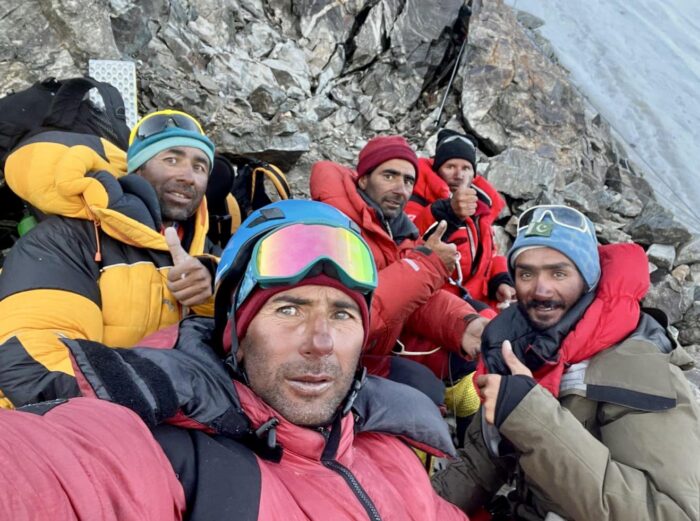
This year, Kiani has spoken out on behalf of a group of local porters whose outfitter had not paid them. She knew the porters were too vulnerable to protest by themselves and that the loss of income might mean misery and hunger for their families.
Changes in aerial rescues
In the last few weeks, Kiani also made two promising announcements: the establishment of a mobile medical dispensary in the Karakoram and a change in helicopter protocols for mountain rescues in Pakistan. Until now, army pilots have managed helicopter rescues, flying in two helicopter patrols that charged $26,000 per flight -- the most expensive fee in the world.
"Last year, I spoke out against the extremely high prices that sick and injured climbers were being charged for helicopter evacuations," Kiani said. "Many told me to stay quiet, and that no one would listen."
Instead, she wrote letters and contacted high-ranking army officials directly. Kiani provided lists of prices comparing aerial rescue services and their costs in several mountain ranges around the world.
"I clearly explained that climbers evacuated in Pakistan were paying way, way too much," Kiani told ExplorersWeb.
To the surprise of the skeptics, the military listened. The new president of the Alpine Club of Pakistan (and Army General), Irfan Arshad, supported Kiani in this quest. The protocols have now changed, and, if applied, the impact will be huge.
Rescues 60% cheaper
Now, the helicopters don't need to fly in pairs.
"Only one helicopter is being sent for rescues, bringing the cost down to under $9,900 on average, nearly one-third of what climbers were paying before," Naila explained.
The change will also double the rescue capacity of the Pakistani air force, as each helicopter may attend to a different rescue at the same time.
Kiani has also insisted on a stricter account of the rescue charges, as the previous cost (calculated per hour of flight time) was sometimes inaccurate.
Finally, Kiani hopes the new protocols will prioritize serious medical cases without insurance companies agreeing to foot the bill first. This would greatly benefit many local porters, who either lack insurance or have limited coverage.
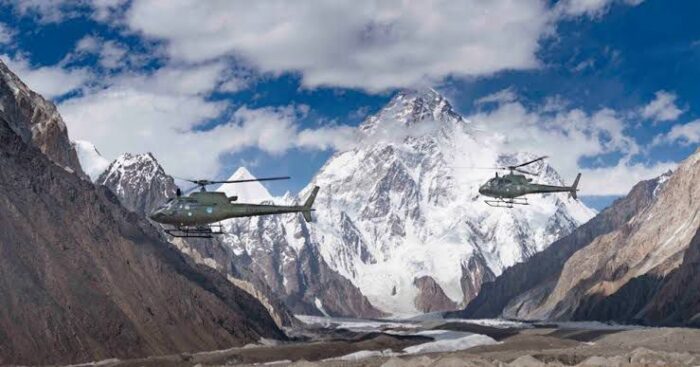
Kiani is hopeful costs will decrease immediately, but she also foresees further improvements. She told Explorersweb that the situation will improve when Pakistan allows private helicopter companies to operate rescues (as they can in Nepal), which Kiani is confident will happen in the future. In her opinion, private companies will lower costs and may be more flexible regarding altitude and weather conditions for rescues.
These improvements may seem logical, but in a country like Pakistan, where the army is incredibly powerful and rarely influenced by external forces, what Kiani has achieved is more extraordinary than any of her climbs.
Dispensaries in the Karakoram
Kiani has also lobbied for (and helped finance) the installation of two paramedical dispensaries along the Baltoro during the summer season. One is already operating at Concordia, one day from K2 Base Camp, and another is ready to start operating in Urdukas, as soon as the assigned nurse gets there.
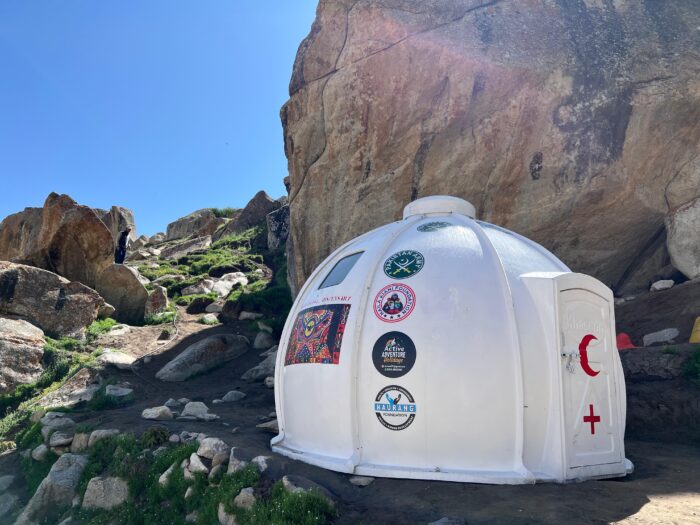
"They will treat everybody for free: trekkers, climbers, and locals working in the area," Kiani said. "Finally, there is a semi-permanent facility to provide sanitary care during the Baltoro trek: igloos prepared to endure harsh weather."
The lack of facilities was a serious problem, particularly for local porters who had nothing to treat their injuries and disinfect wounds. With no help, even small health issues rapidly developed into serious medical conditions.
"We don't have a doctor yet, but the nurse managing each dispensary can treat a wide range of issues," Kiani said.
Kiani will pay the nurse's salary while Pakistan's Alpine Club will cover the rest.
Not just words, actions
These changes come after years of very little progress to improve the welfare of climbers and, most of all, local communities working in the climbing industry.
"I am not the only one who speaks up," Kiani said. "Other climbers also make their voices heard, but it is one thing to speak about something we think is wrong, and another to take action to change it. I strongly believe that if you want things to change, you need to take action."
Kiani's campaign for change has made enemies, but it has also received important support, such as from the Alpine Club of Pakistan and Green Tourism, a private institution that works closely with the country's government. "Without their help, I couldn’t have achieved what I did this year," Kiani explained.
Yet speaking up takes a toll, especially in the close-knit Pakistani climbing community. When Kiani pointed a finger at the negligence of some local operators, she faced harsh criticism and accusations of jealousy or courting controversy.
But Kiani insists that these negative aspects impact the entire Pakistani tourism industry.
"I can't help thinking that Pakistan has such huge potential for mountain tourism, and that mountain tourism can make a life-changing impact on local communities."

In addition to her determination, Kiani has something else in her favor: She is well-educated, with experience making a case, with plenty of proof and documentation, to draw the attention of senior officials. She is a Dubai-based engineer who has worked as a banker, although she quit her full-time job to pursue climbing in 2023.
Breaking social boundaries through climbing
Kiani summited Kangchenjunga, her 12th 8,000'er, last spring. While she has not confirmed her plans for fall, she intends to climb Shisha Pangma and Dhaulagiri to complete the 14x8,000m challenge.
"I get some criticism because I use oxygen and Sherpa support, but climbing has given me a voice and I’m using that voice to try to make a difference," Kiani told ExplorersWeb.
Kiani has become an influential figure for young Pakistani women.
"Gender equality is a real issue. Women here sometimes don’t have confidence and self-belief, so I wanted to inspire Pakistani women," she explained. "If I can do things that are not associated with Pakistani women, and if I can speak up about things that others won’t even dare, then hopefully others can do the same."
Pakistan ranked last (148th out of 148 countries) in the World Economic Forum's Global Gender Gap Index in 2025, with a score of 56.7%. Dawn.com cited data from the Human Rights Commission of Pakistan (HRCP) showing that in 2024, "honor" killings continued to be a serious issue across Pakistan. That year, 346 people (nearly all women) were victims of these so-called honor crimes.
On July 11, 1985, Pierre Gevaux made the first paragliding descent from the summit of an 8,000m peak, soaring down from 8,034m Gasherbrum II. This groundbreaking feat opened a new chapter in mountaineering history.
Gevaux was part of a French expedition to Pakistan led by Claude Jaccoux. It included clients, three guides, and two high-altitude porters. They shared Base Camp with another French team led by well-known mountaineer and extreme adventurer Jean-Marc Boivin.
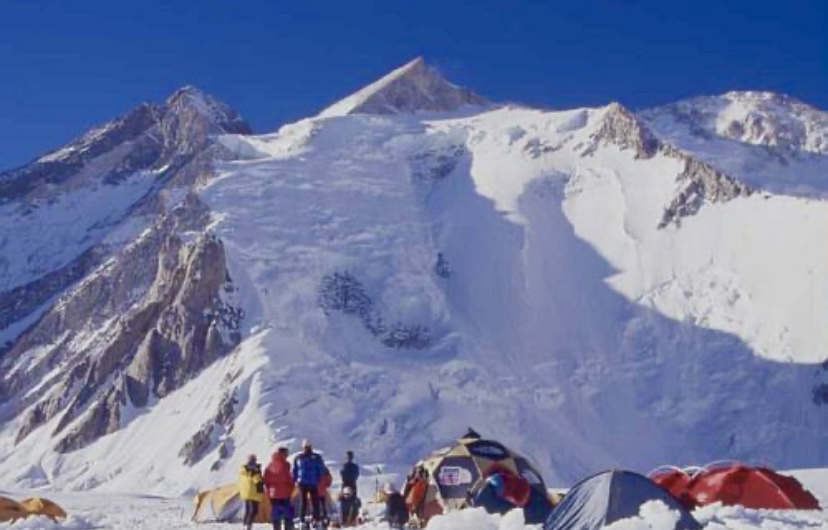
The expedition began in early July, with climbers establishing camps along the standard route. On July 11, Gevaux and the other team members topped out. The summit day featured clear weather, offering a rare window for his paragliding descent.
Paragliding technology was in its infancy, and Gevaux’s paraglider was likely a basic or parachute-like canopy. It required significant skill to control, especially in the thin air and unpredictable winds at such an extreme altitude.
According to Xavier Murillo, Gevaux's first two attempts to fly from the summit failed. Each time he had to climb back up, catch his breath, gather his thoughts, and tell himself that he would be able to do it. The third time was the charm.
The descent covered a vertical drop of several thousand meters to Camp 1 at 6,000m. He reached it in 5 minutes and 45 seconds. It had taken him five months of preparation, two months on the expedition, and four days of climbing.
Gevaux’s feat impressed other mountaineers who were on Gasherbrum II that day, including Jean-Marc Boivin.
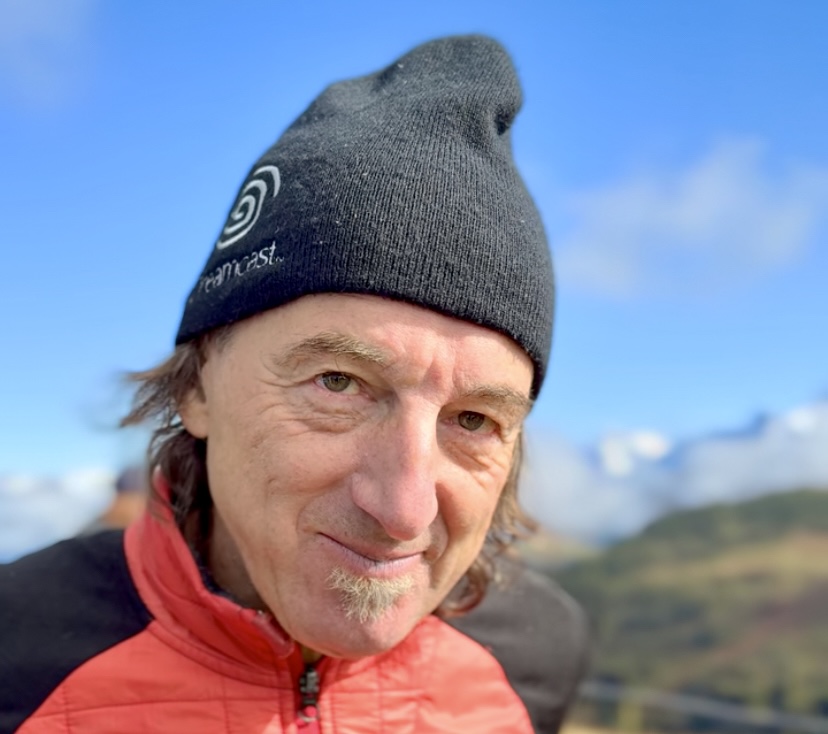
Boivin paraglides down Everest
Boivin was an adventurer known for his first ascents, ski descents, and pioneering hang gliding and paragliding. He was reportedly inspired by Gevaux’s paragliding descent from Gasherbrum II. On that expedition, Boivin broke a hang glider altitude record when he successfully launched from the summit. Previously, in 1979, Boivin had set a hang glider altitude record when he flew from nearly 8,000m after climbing K2.
Three years after Gevaux’s flight, on Sept. 26, 1988, Boivin achieved the first paragliding descent from just below the summit of Everest. The thin air at 8,848m made launching difficult, and gusty winds required precise timing to ensure a safe takeoff. Boivin’s success cemented his reputation as a pioneer of extreme sports, though he tragically died two years later while BASE jumping off Angel Falls in Venezuela.
You can read more about Everest’s paragliding and hang gliding history here.
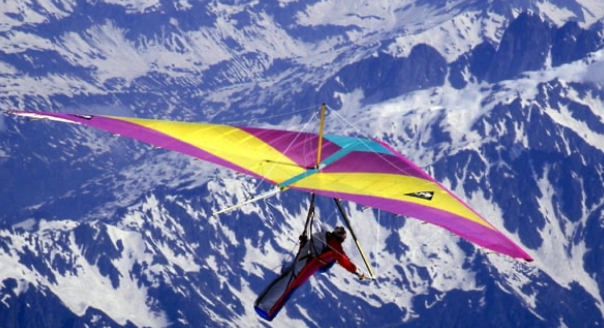
Paragliding descents from other 8,000’ers
Gevaux’s 1985 flight and Boivin’s 1988 flight pointed the way for others.
In 1994, Australian Ken Hutt paraglided down from 7,200m on Cho Oyu.
In July 2019, Austrian climber Max Berger paraglided from the shoulder of 8,051m Broad Peak, landing in Base Camp 17 minutes later. Though not from the summit, this descent was a significant high-altitude feat.
On July 19, 2022, French climber Benjamin Vedrines paraglided from Broad Peak’s summit ridge after a speed ascent without supplemental oxygen, landing at Base Camp in about an hour.
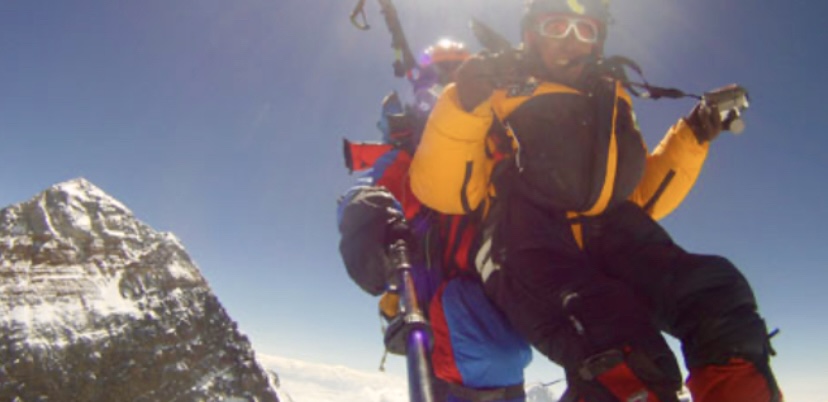
On July 28, 2024, French climbers Benjamin Vedrines, Jean-Yves Fredriksen, Zeb Roche, and Liv Sansoz paraglided from the summit of K2 despite a Pakistani paragliding ban. All four had summited without bottled oxygen.
Vedrines -- after claiming a climbing speed record of 10 hours, 59 minutes, and 59 seconds -- launched first, landing at Base Camp in 30 minutes. Fredriksen landed at 6,600m after struggling for 90 minutes to take off, and Roche and Sansoz achieved the first tandem paragliding descent from an 8,000m summit.
Most recently, on June 24 of this year, David Goettler paraglided from 7,700m after summiting Nanga Parbat via the Schell Route on the Rupal Face without bottled oxygen.
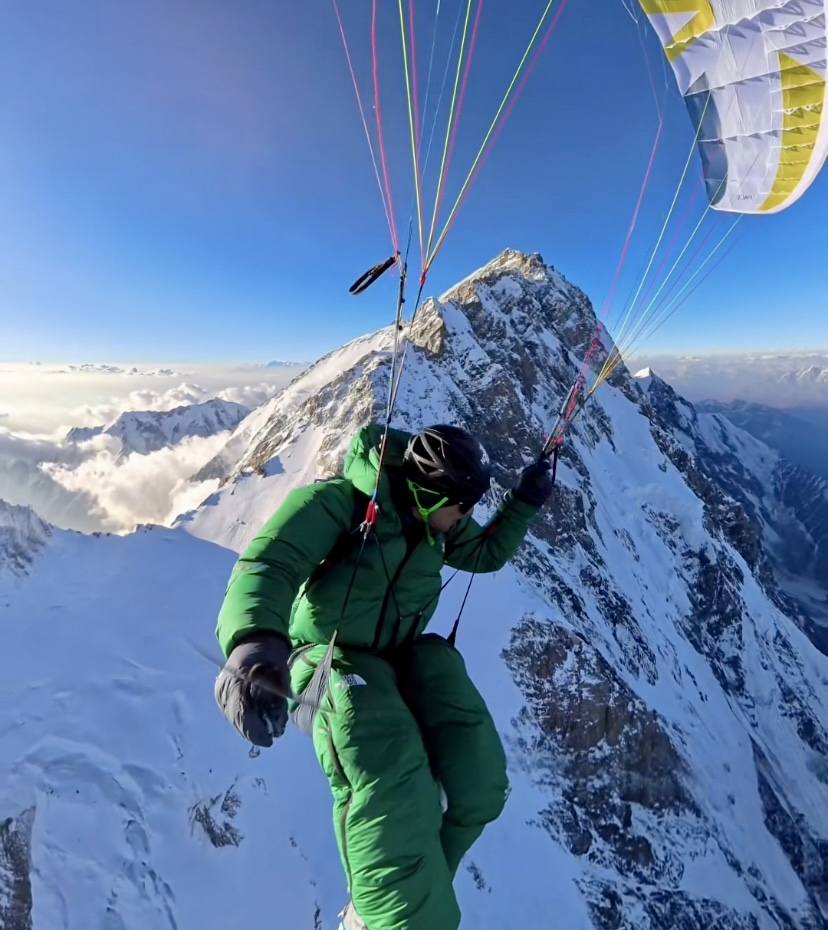
In the video below, you can watch Gevaux's pioneering paragliding descent from Gasherbrum II in 1985:
One of Poland's great alpinists of the 1970s and 80s, Krystyna Palmowska, died yesterday in a climbing fall in Slovakia’s High Tatras, according to Polish sources.
The accident occurred on June 15, and her body was found today, June 16, by the Slovak Mountain Rescue Service after ground and helicopter searches.
Palmowska, 76, was one of the best female alpinists of her generation -- a generation when the Poles, both men and women, dominated high-altitude mountaineering. Her remarkable climbs included:
- 1977: Matterhorn North Face – 2nd all-female ascent
- 1978: Matterhorn North Face – 1st all-female winter climb
- 1979: Rakaposhi (7,788m) – New route
- 1982: Member of the K2 Women's Expedition
- 1983: Broad Peak (8,047m) – 1st woman summiter
- 1985: Nanga Parbat (8,126m) – 1st all-female ascent
- 1986: K2 Magic Line – Reached 8,200m with Anna Czerwinska

David Goettler is on his way to Nanga Parbat with French skiers Tiphaine Duperier and Boris Langenstein. The 43-year-old German is tackling Nanga Parbat for the third spring-summer in a row and his fifth time overall. This week, he spoke to ExplorersWeb about his plans and the changing world of Himalayan climbing.
Last year, Goettler teamed up with Mike Arnold of the U.S., but Arnold decided to abort his attempt. Goettler spontaneously joined with Duperier and Langenstein, who were attempting to ski the mighty Rupal Face. The three launched a single, alpine-style push but didn't succeed.

Twelve months later, Goettler, Duperier, and Langenstein are back to attempt the hardest side of the mountain again. Duperier and Langenstein are world-class alpinists and skiers who are familiar with Nanga Parbat. In 2019, Duperier reached 7,800m while Langenstein summited. He then started skiing down from 50m below the top, the first point at which skiing was possible.
Duperier joined him at 7,800m as he descended, and they skied down the rest of the way together. The pair also skied Laila Peak in 2018 and Gasherbrum II's South Spur in 2021.
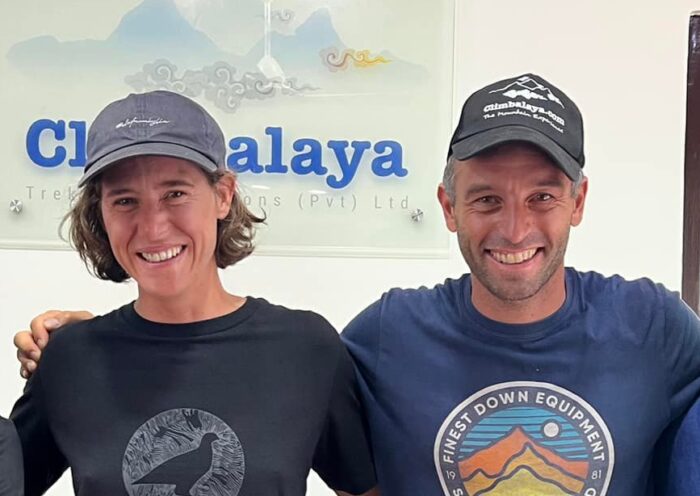
Baruntse
The three climbers began their preparations in late spring in Nepal, climbing in Langtang, then on Island Peak. Their prep culminated last week with an after-season ascent of Baruntse in the Khumbu.
"We were just days after the Everest climbers had finished, and the Khumbu was completely empty," said Goettler. "We had such a good time. Climbers complain about the crowding but then insist on climbing only in April and May. We need to spread out the season differently."
Goettler also praised winter as an interesting time to climb lesser peaks in Nepal. "Trekking peaks can be climbed all winter long with good equipment," he said. "During the day, it's often sunny and nice, and you'll have the mountains to yourself."
On Baruntse, they indeed had the peak to themselves, and in fact, theirs were the only summits this year. Conditions were good in base camp, but as the trio set off toward the top from their high camp at 6,400m, they were enveloped in a whiteout. They had to use their GPS devices to ascertain the highest point on the ridge.
The thick fog also thwarted Duperier and Langenstein's plan to ski down, while Goettler had hoped to paraglide down to Base Camp the fast way. On the positive side, the wind was not too strong, unlike most of this climbing season.

Changing conditions
The German noted how the mountain is becoming harder to climb because of climate change.
"The ice is getting more and more tricky, there are two big crevasses that are opening up and getting more difficult to navigate around," he said.
He explained that at a certain point, they had to rappel down and then climb up the other side of a crevasse. They had a 60m rope with them, but commercial teams would need to install ladders across it.
"The conditions on 6,000'ers and 7,000'ers are changing fast because of global warming," said Goettler. "Island Peak, for instance, is now bare of ice on the upper sections, and rockfall is frequent. It can still be done, but climbers need to know that in advance and not underestimate the climb."
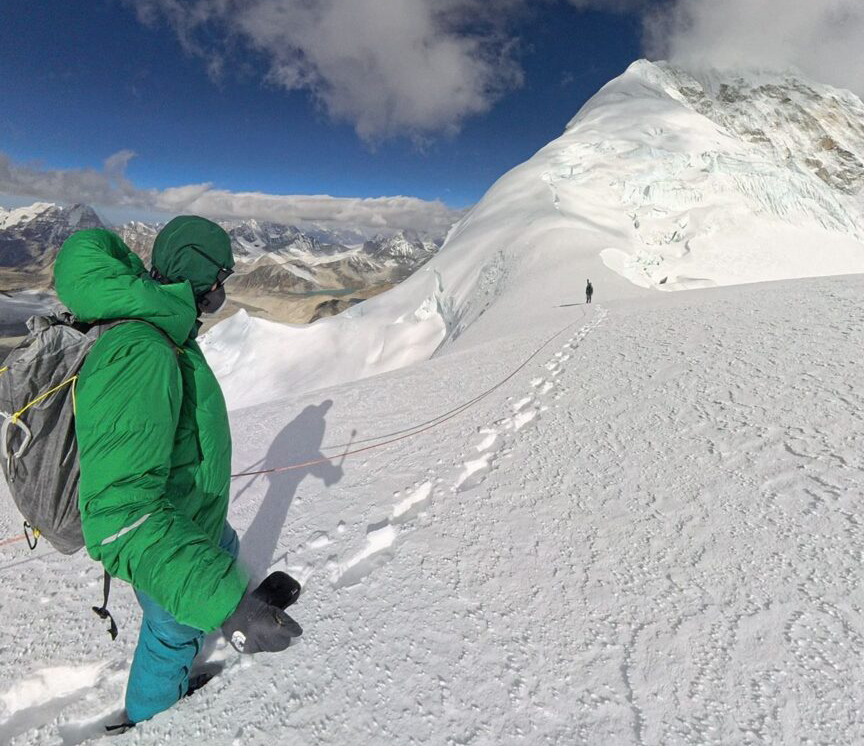
Different times
David Goettler visited Nepal for the first time in 2003 and has returned at least once a year ever since. He has seen both the country and the climbing scene change during that time.

Goettler climbed with some of the best-known high-altitude climbers of the early 21st century, from Gerlinde Kaltenbrunner and Ralf Dujmovits to Ueli Steck and Simone Moro. He has seen the evolution from small teams to the crowds on Everest. And yet, he climbed Everest without oxygen or Sherpa support in 2022.
"The commercial side of the 8,000'ers has exploded in the last decade, but this is a development that we saw in the Alps years ago and now we see in the Himalaya," he said.
Oxygen is not alpinism
"The issue is that we -- meaning both wide audiences and seasoned climbers -- still confuse the concepts of alpinism and commercial ascents. They are completely separate activities."

Goettler adds:
I have no problem with people climbing Everest in five days with all the help they can get, but their motivations to climb that mountain are totally different from mine. What these express teams are doing cannot be considered an evolution of alpinism but an evolution of a touristic activity that takes place in the mountains.
They have a right to be there, as long as they respect the environment, the local communities, and the safety criteria. People also climb Mont Blanc in the Alps [with a boost from] cable cars, which are even more invasive than helicopters. In some aspects, we should learn from the mistakes we made at home.
The German climber has a similar view about the Xenon therapy used by the British team that climbed Everest in five days.
"For me, Xenon wouldn't be an option because I consider it an external aid, like oxygen, and I do not use oxygen when I climb at altitude. However, there is no big difference between using Xenon and using oxygen, which can be set to flow at up to eight liters per minute," said Goettler. "I don't understand why some are outraged about Xenon but consider using oxygen the most natural thing."
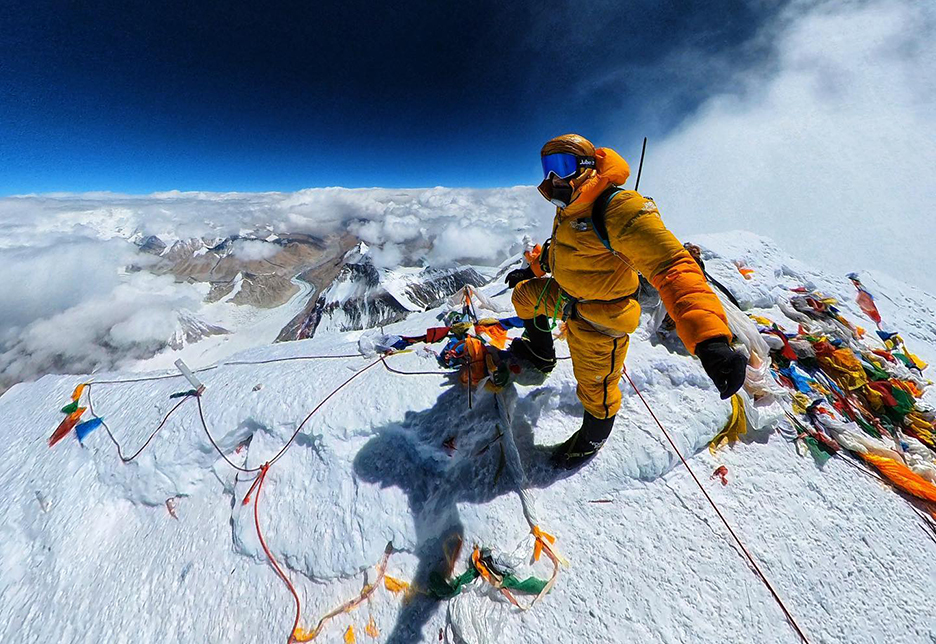
Longing for freedom
In recent times, alpine-style teams seem to focus on lonely peaks less than 8,000m high but which offer isolated locations and options for new routes. Meanwhile, on the 8,000'ers, almost everyone sticks to the normal route. Can guided teams and alpinists coexist on these highest peaks?
Goettler believes they can, but he is concerned about an excess of regulations, such as the ones in Nepal that begin this fall, which practically ban independent climbers.
The concern is we might end up with hyper-regulated expeditions as in Tibet, when you can't just obtain a permit to climb anywhere beyond the normal route or to climb Everest without oxygen. I wish so much to go to Cho Oyu, where there are options to climb new routes from Tibet, or Shisha Pangma, where I retreated some meters below the summit on the South Face! I hope Nepal will not go the same way.
I am happy I had the chance to experience the Himalaya when there were not so many regulations and not so many people.
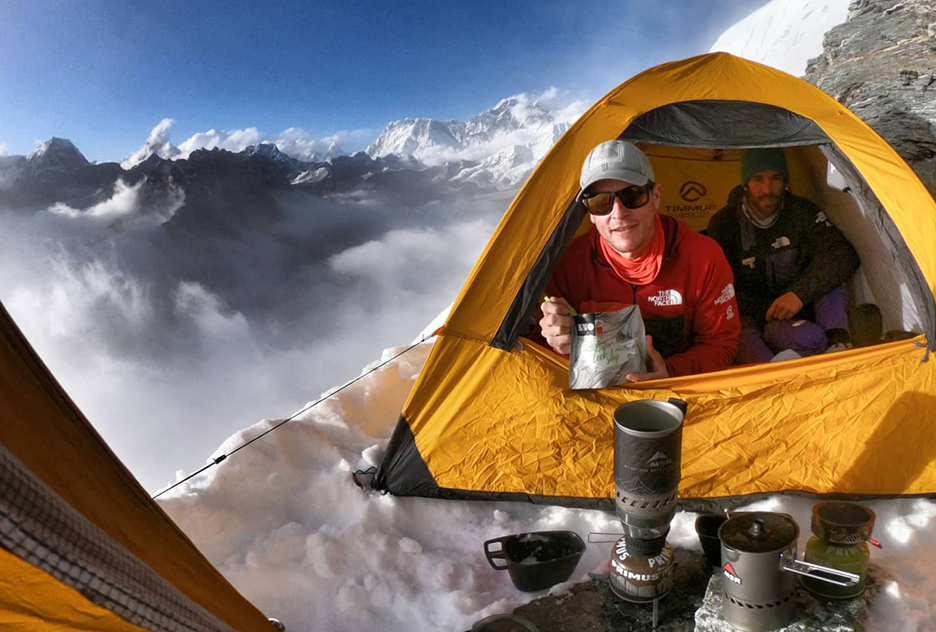
Goettler also believes that there is potential for new routes on the 8,000'ers, but that sometimes, bureaucracy stands in the way. "As I said, Cho Oyu offers options, but getting a permit now would be much more difficult than the climb itself."
He adds that other 8,000'ers still offer "some crazy-difficult faces that I would never attempt."
The risk debate
In this modern era, Himalayan alpinists are not unanimously admired for their purity of spirit. They sometimes receive criticism for the risk their activity involves. Guide and outfitter Lukas Furtenbach recently compared alpinists to modern gladiators ready to die, and who “eschew safety margins and embrace high personal risk.”
Responds Goettler, a professional mountain guide who has climbed since he was seven years old: "I assure you, I consider what I do very far from suicidal, especially if you bear in mind the huge number of times I have turned around on expeditions. Of course, commercial expeditions must prioritize safety, which is exactly what I do when I am guiding clients, but also when I climb on my own. My own climbing projects might look risky from the outside, but I am very conscious of conditions during every moment of the climb, the equipment I use, my skills, and how to keep within acceptable margins of safety."

Goettler says he has acquired experience and skills in small steps over the years.
"This may not be the norm now, when fewer people are ready to invest time to learn and evolve as climbers," he says. "Instead, they take shortcuts to the summit, by taking oxygen, a guide, etc. Again, I don't judge such choices, and it works for some people, who climb the 14x8,000'ers during their first two years in the mountains. But that does not mean they are capable of making any decision on their own up there. That only comes through knowledge and experience."
Climb up, fly down
Goettler tries to paraglide from his summits. He points out that while ascents are regulated, flights in Nepal are allowed on nearly every mountain. This makes it possible to avoid dangerous descents and even makes new routes safer.
"If conditions permit, flying down from the summit is the safest way I can think of descending a mountain," he said.
Paragliding from summits after fast and light climbs has become a trend among elite climbers, especially in Europe. Last year, Benjamin Vedrines sped up K2, then paraglided down from the summit, doing the round trip in 11 hours. Others on his team also flew from the top that day.
Back to Nanga Parbat
Goettler considers Nanga Parbat a special peak, quite different from Everest on the 8,000m spectrum.
This will be Goettler's fifth attempt on Nanga Parbat via the Schell route on the sheer Rupal Face. He has tried twice in winter, first in 2013-14 and then in 2021-22 with Herve Barmasse and Mike Arnold. He attempted it again with Benjamin Vedrines in 2023 and with Mike Arnold last year.
In addition to being one of the biggest mountain faces in the world (it's nearly 4,600m from base to summit), the Rupal Face of Nanga Parbat can be especially dangerous in mild temperatures. That is one of the reasons Goettler attempted it in winter. However, he believes conditions may remain good for a few more weeks.
"The route is risky in summer since a lot of rocks are falling on the lower part, but the last two years, I went there in June, and conditions were okay."
Their plan is to climb the mountain alpine style. If all goes well, he will fly back down to Base Camp, although he admits that the chances for that will be "very slim." His partners will ski.
Goettler, Duperier, and Langenstein move to Nanga Parbat this week, and we may not hear from them in a while. We will update when we do.
While Everest and the summit push on Annapurna garner most of the attention, commercial expeditions are taking place on all Nepal's 8,000'ers this month. It's clear that commercial 8,000m climbing is growing every season.
More peaks are available, and more resources are needed to service them. This suggests why only the biggest operators can compete. Smaller outfitters must find a specific market niche or disappear.
Expeditions are now so big, and the information about them is so scattered and irregular that we no longer follow every single climber on the mountain. We are trying at least to keep up with no-oxygen attempts, which are relatively rare these days, even on the "lower" 8,000'ers. We also follow notable climbers and unusual projects. Here is a short roundup of the action on three of those peaks.
Makalu
A strong Sherpa team with 14 Peaks Expedition hurried up the mountain and summited Makalu on April 10. Lakpa Sherpa, known as Makalu Lakpa because of his eight summits of the mountain and because he was born in the area, led the charge. Immediately afterward, he moved to Dhaulagiri to lead the rope fixers there. He will then return to Makalu, as he explained on social media:
A group of commercial climbers didn't immediately follow the rope fixers up Makalu. Currently, they are celebrating their puja ceremonies to seek the favor of the mountain gods before heading to Camps 1 and 2 on their first rotations. One of these is a Polish team led by Jarek Zdanowicz.
A Kazakh team led by 14x8,000m summiter Vassiliy Pivtsov is also ready to go. Pivtsov's long-time climbing partner, Maxut Zhumayev, is acclimatizing on Mera Peak and will join the team shortly. Jam McManus of Ireland is also on the mountain but says he will be off-grid until the expedition ends.
Dhaulagiri & Kangchenjunga
There are currently two small teams on Dhaulagiri, including Afsaneh Hesamifard of Iran, Klara Kolouchova of the Czech Republic, Sajid Ali Sadpara of Pakistan, and some Russian members of Alex Abramov's 7 Summits Club.
Most climbers are still on their approach trek to Base Camp for 8,586m Kangchenjunga, the world's third-highest peak and the farthest from Kathmandu. The hike is long and demanding but spectacularly beautiful, even for a country with a glut of impressive scenery.
An internet connection is rare in this isolated area. Information will have to come from climbers using InReach and who choose to make their messages public.
Among the expected climbers on Kangchenjunga are Adrian Hayes of the UK and Uta Ibrahimi of Albania-Kosovo, who is about to finish her 14x8,000m list.
Independent climbers hoping to summit Nepal's 8,000m peaks without supplementary oxygen or Sherpa support can relax. They're still allowed to try. Outfitters have confirmed to ExplorersWeb that new measures that will make a Sherpa guide compulsory for everyone will not kick in before September at the earliest.
Everest fee hike also delayed
Nepal announced last year that permit fees on Everest will increase by 36%, from $11,000 to $15,000. This was plenty of time for local stakeholders to adapt. However, two months ago, the government announced that the new fees were just a part of a larger set of measures. These included banning solo climbers, meaning those who decline the assistance of a Sherpa.
The news came as a shock to climbers all over the world. Several had already planned and paid for only base camp logistics on Everest and other 8,000m peaks. From there, they would proceed on their own. This style was the norm two decades ago, but now it is increasingly less common. Alpinists searching for solitude and self-sufficiency avoid the 8,000'ers and turn to unclimbed routes on smaller, lonelier mountains.

Authorities label these self-sufficient climbers on the normal route as "solo" climbers. They benefit from the fixed ropes and broken trails but otherwise climb on their own and bring all they need up and down the mountain themselves. In nearly every case, these climbers don't use supplementary oxygen.
Everest, Makalu, Annapurna
Examples include several climbers currently on Annapurna, Vasilliy Pivtsov's group on Makalu, and most noticeably, the Everest speed climbers Tyler Andrews of the U.S. and Karl Egloff of Ecuador.
Vadim Druelle of France will attempt Annapurna in one single push on his own. He told ExplorersWeb that he was not even aware of any pending regulation about solo climbers and has no intention of changing the approach he has previously employed on Kangchenjunga, Nanga Parbat, and elsewhere. Druelle climbs at his own pace, carrying his own gear, and usually sets off for the summit several hours after the big groups. He deliberately climbs through the night in order to avoid crowds.

Vassiliy Pivtsov of Kazakhstan and his two partners are also comfortable with climbing Makalu without Sherpa support beyond Base Camp.
Tyler Andrews, attempting a Fastest Known Time on Everest, will have his regular partner Chris Fisher roped up with him in the Khumbu Icefall. Otherwise, he will proceed at his own brisk pace. He aims to summit Everest in under 20 hours.
"We have made sure that everything in our climb is completely legal and according to the rules," Andrews said. "We have been assured everything is okay."
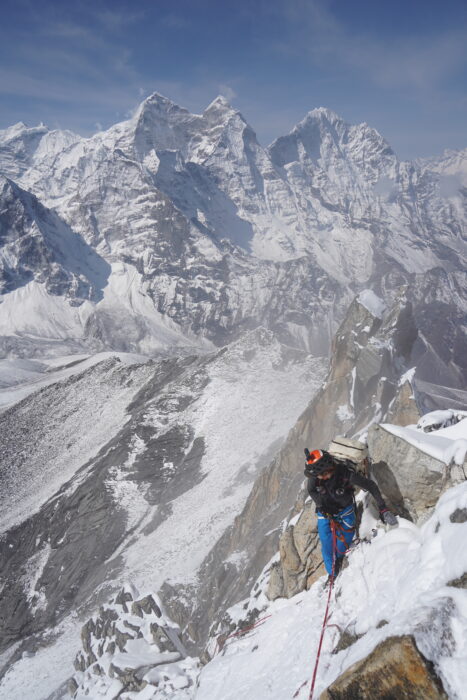
Assistance beyond oxygen
No-O2 climbing is allowed in Nepal, but the need for a supporting guide spoils climbing a peak by one's own means. Beyond no supplementary oxygen, this means not climbing with a guide who does use O2 and who may carry an emergency oxygen bottle in case a client needs it.
As explained in a previous story, a climber going without bottled gas but with a Sherpa by his side tackles a significantly toned-down challenge. Sherpas look after their clients in several ways, from carrying everything to preparing food, unpacking the sleeping bag, adjusting crampons, and even emptying the client's pee bottle.
Most outfitters support banning unassisted climbers, especially those totally on their own.
"Solo climbers are the ones who most likely face accidents at high altitudes," Lakpa Sherpa of 8K Expeditions told ExplorersWeb recently. "Many lack proper planning, and often, solo climbers have to wait for the rope-fixing team [to finish its work], which can create tension and lead to dangerous situations.”
Other outfitters do not permit no-O2 climbers on their team unless they agree to have a Sherpa with an emergency bottle of oxygen accompany them.
On the other hand, some outfitters are happy to provide base camp-only logistics, especially to entire teams, such as the Kazakhs on Makalu.
Unclear questions
The regulations raised many still-unanswered questions: What happens if the independent climber is a professional mountain guide? What if a Sherpa decides to climb an 8,000m peak on his own? Will the measures affect those attempting climbs off the normal route, like the South Face of Cho Oyu, or those who come in the off-season, such as Jost Kobusch on Everest?
The new regulations state that climbers must have at least one Sherpa guide per two climbers, a low rate considering that those who really want Sherpa help on an 8,000'er will actually demand a 1:1 rate, that is, a personal Sherpa. Certain clients, especially on Everest, may even have two Sherpas tending to them.
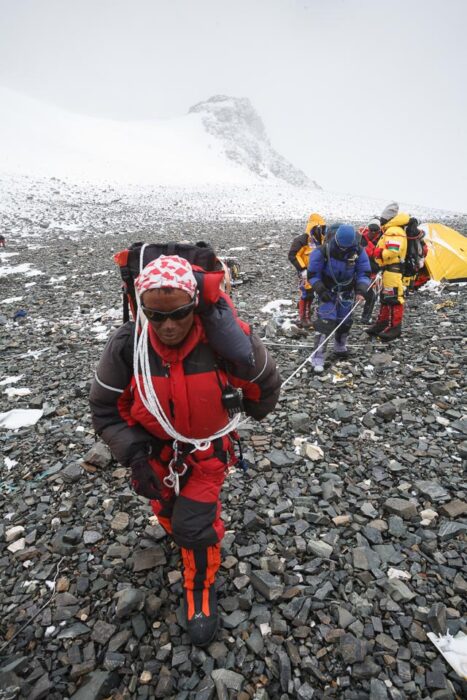
The measures have now been deferred a few months and will only come into force in September. The test peak will be Manaslu, where 99 percent of climbers are Sherpa-supported clients. There may be self-supported teams on other peaks, such as Dhaulagiri, but it is too early to say. Nowadays, few attempt the other 8,000m peaks in Nepal in autumn, including Everest.
Spring has always been the busiest season in the Himalaya, so next spring will be the first real test of these regulations. For now, independent climbers are welcome.
One of the most important figures in the history of the 8,000m peaks is returning to the Greater Ranges in grand style. Denis Urubko will climb a new route on Nanga Parbat in June, then attempt what he calls "real winter firsts" on Broad Peak and Gasherbrum I the following winter.
Finally recovered from the frostbite he suffered during a winter attempt on Gasherbrum I in January 2024, the 51-year-old Russian will travel in May to Nanga Parbat in Pakistan's Himalaya for a new route on the Diamir side of the mountain, Montagna.TV reported.
“It will be an authentic new route, not a variant presented as an independent route,” he said during a lecture in Terni, Italy.
Real winter
As for his cold-season plans on Broad Peak and Gasherbrum I, the ever-strict Urubko defines winter as meteorological winter (December 1 to March 1) where climbing is concerned. As it happens, the first winter ascents of Broad Peak and GI took place on March 5 and March 9. By Urubko's criteria, that's early spring.
When he was asked at the lecture if new routes remain on the 8,000'ers, Urubko replied that there are many, even on Everest. "No route has ever been opened without oxygen and in authentic alpine style," he insisted.
Urubko admitted he would love to achieve such a feat.
A living legend
Denis Urubko has summited all the 8,000m peaks without supplementary oxygen or Sherpa support. He also has two winter first ascents, on Makalu (with Simone Moro) and Gasherbrum II (with Moro and Cory Richards).
Urubko has opened new routes on the highly difficult south side of Cho Oyu, Manaslu, Broad Peak, and Gasherbrum II (solo). He has also made a name for himself -- and many friends around the world -- for the many rescues he has performed in the Himalaya.
One of them made him an international hero and earned him France's Legion of Honor. In 2018, he and Adam Bielecki of Poland abandoned their own attempt on winter K2 and hurried to Nanga Parbat to launch the nearly impossible rescue of Tomasz Mackiewicz and Elisabeth Revol. They couldn't reach Mackiewicz but saved Revol's life.
It's not exactly alpine style up a new route, but Vassiliy Pivtso, 49, and his small team will try to make their Makalu climb as retro as possible in this commercial age.
The Kazakh climber once summited all 14 8,000m peaks without supplementary oxygen or personal sherpa support. Now, he is repeating the feat with two younger partners.
However, the atmosphere in Nepal's mountains has changed as the high peaks have gone commercial. New regulations discourage self-sufficient teams these days. Pivtso's expedition to Makalu will try to see whether an old-fashioned approach can coexist with this new reality.
Independent climbers
Soon, hundreds of climbers will head up the highest peaks on Earth, clipped to fixed ropes and often waiting in long lines. New regulations state that foreigners on the 8,000'ers must have a local guide with them. Yet a significant number of those on the normal routes will try to distinguish themselves either by climbing without bottled oxygen and/or without a personal guide every step of the way.
Some will aim for speed, such as Karl Eggloff and Tyler Andrews on Everest, and Vadim Druelle on Annapurna. Only a very few will try to follow a style common before commercial climbs took over Nepal's 8,000'ers. In those more innocent days, teams met in Base Camp and agreed to collaborate on the route. Mostly, they'd progress on their own above Base Camp and not use O2 except sometimes on Everest or K2. Expeditions lasted about two months, and climbers attempted one mountain per season.
The turn of the millennium

Vassiliy Pivtsof was one of the regulars during the first decade of the 21st century. He and partner Maxut Dzumayev shared permits and joined forces to climb one 8,000'er after another.
Only K2 resisted them. Finally, in 2011, they summited via the difficult North Ridge with Gerlinde Kaltenbrunner and Darek Zaluski. It was Pivtsov's sixth attempt and Zhumayev's fifth.
Through all his climbs, Pivtsov never used or even carried supplementary oxygen except once. He was administered emergency oxygen on his descent from Everest in 2007 when he fell sick with High Altitude Pulmonary Edema.
Pivtsov returned to K2 in the winter of 2018-19 on a team led by Artem Braun. It was his second attempt on K2 in winter, again without oxygen or porters, after first trying with a Polish team in 2008-9.
Turned to 7,000'ers
Other than winter K2, Pivtsov has taken a rest from the 8,000'ers over the last 20 years.
"But I never stopped climbing," he told ExplorersWeb. "I turned instead to 7,000'ers in the Pamir and Tien Shan ranges. It was there that I met Mikhail Tarasov from Moscow and Peter Shulgin from Omsk. We made a good team together, so last year, we tested ourselves at high altitude by climbing Broad Peak."
The successful Broad Peak experience encouraged his two young partners to add more 8,000'ers to their list. They eventually decided to try Makalu this spring.
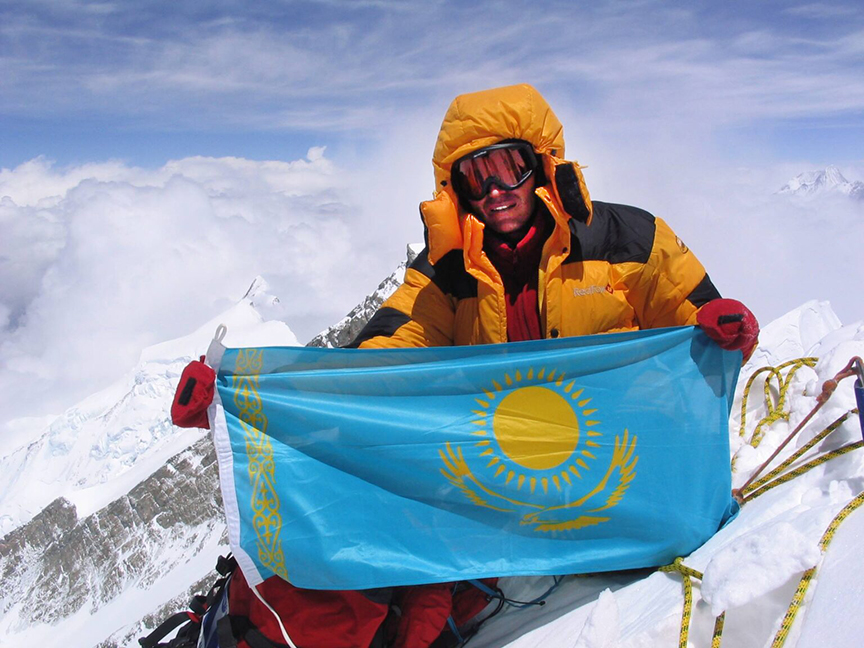
Last summer, Pivtsov saw how much the Himalayan climbing scene had changed.
"I didn't see any independent climbers in Base Camp; they were all members of guided groups," he said. "I also saw how much the Pakistani climbers have improved in their performance at altitude, especially on K2."
Pivtsov's team has no intention of changing their climbing approach on Makalu. He terms it a "sportive style." It consists of summiting the way climbers did it after siege-style expeditions fell out of fashion but before 8,000m climbing became big business -- without oxygen or porters.
"Otherwise," he says, "we are planning to go up Makalu's classic route with two acclimatization rotations before the final summit push. We will also set up our own high-altitude camps."
The team will report on their progress on a Telegram channel.
Incidentally, Pivtsov's old partner Maxut Zhumayev has also returned to the 8,000'ers. Last fall, he led a team on Manaslu.
Nepal's Department of Tourism recently added four Kangchenjunga secondary summits and two Lhotse subpeaks to its list of 8,000m peaks. We examine the climbing history of Kangchenjunga's subpeaks and the challenges they present. Note that Nepal inflated the 8,000m list without international approval.
Five subpeaks - or is it six?
Kangchenjunga (8,586m) is the third-highest mountain in the world. Located on the border between Nepal and India, the name means "the five treasures of the great snows," and it has several subpeaks. These are: 8,505m Yalung Kang, 8,476m Kangchenjunga South Peak, 8,473m Kangchenjunga Central Peak, 8,077m Yalung Kang West, 8,150m Kangchenjunga Southeast Peak, and 7,938m Kangchenjunga North.
To add to the confusion, one of these (Yalung Kang West) is the subsummit of a subpeak (Yalung Kang).
Nepal has added Yalung Kang, Yalung Kang West, Kangchenjunga South, and Kangchenjunga Central to its 8,000m peak list.
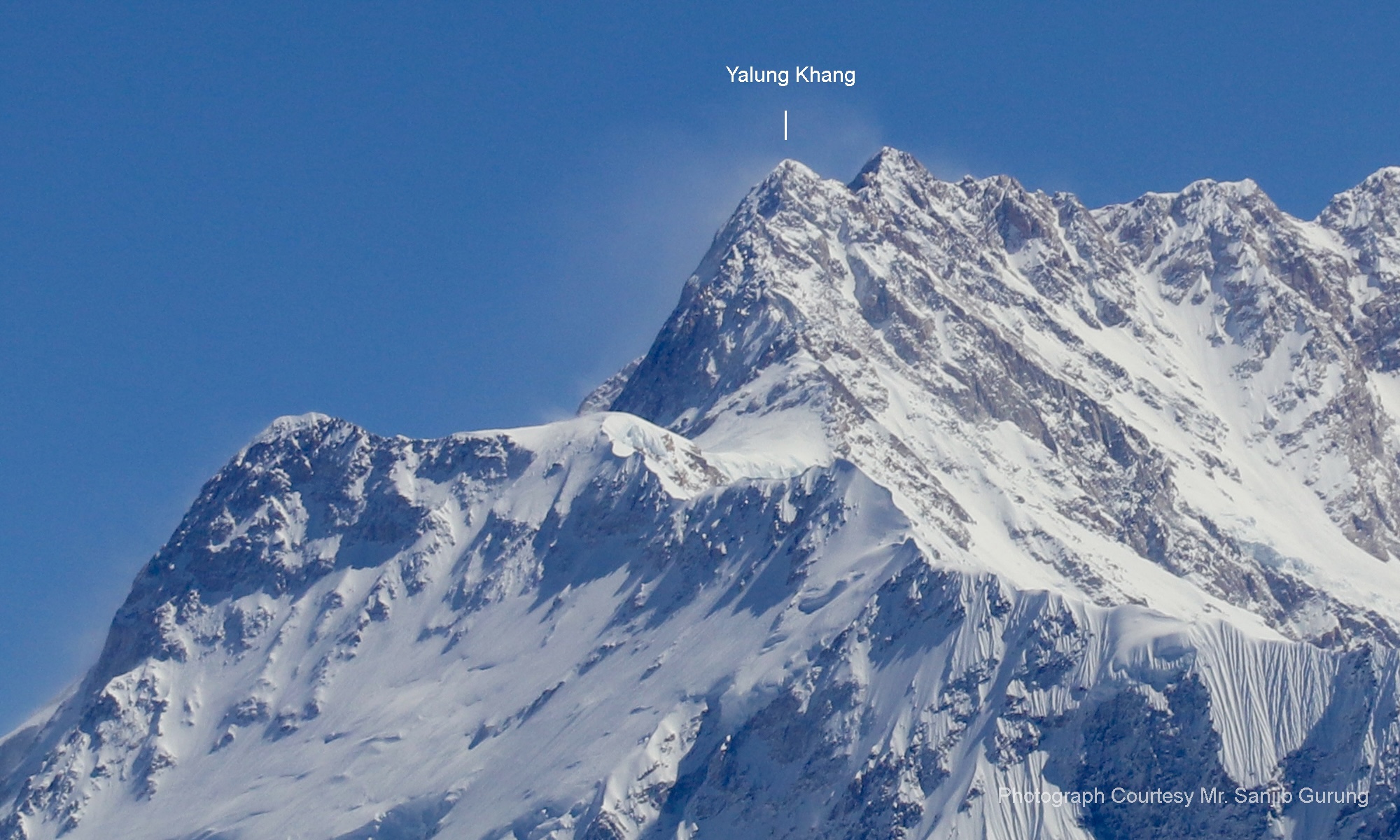
Yalung Kang, 8,505m
According to The Himalayan Database, 22 expeditions have targeted Yalung Kang (sometimes called Kangchenjunga West) as their primary goal. Most of these took place in the 1980. The last attempt was 11 years ago.
Japanese climbers Yutaka Ageta and Takao Matsuda made the first ascent on May 14, 1973 with bottled oxygen. During the descent, Matsuda died in a fall from 8,100m.
Of the 22 expeditions, 12 were successful. Fifty-three climbers have summited Yalung Kang, including 14 without supplemental oxygen.
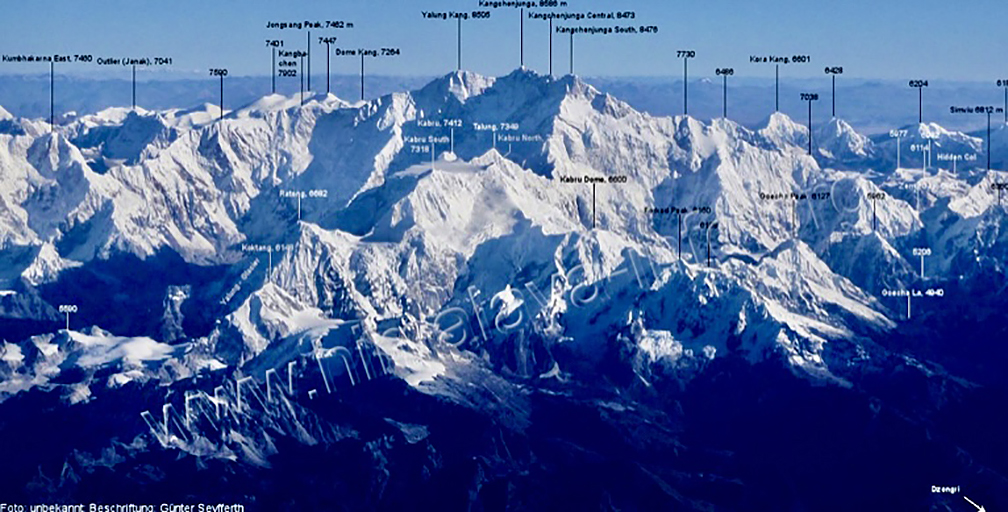
The first person to summit Yalung Kang without bottled oxygen was Sergio Hugo Saldana Meneses from Mexico. He topped out late in the day on May 4, 1980, but then suffered a fatal fall from 8,400m.
The first person to summit without bottled oxygen and return alive was Tadeusz Karolczak of Poland, who summited on Oct. 7, 1984.
Ten people have died on Yalung Kang: seven foreign climbers and three Sherpas. The last fatalities were on May 20, 2014, when Chhanda Gayen, Dawa Wangchu Sherpa, and Temba Sherpa fell from 8,200m. All three used supplemental oxygen.
The 10 climbers who perished on Yalung Kang all died from falls between 8,100m and 8,500m.
Yalung Kang was last climbed in May 2004.
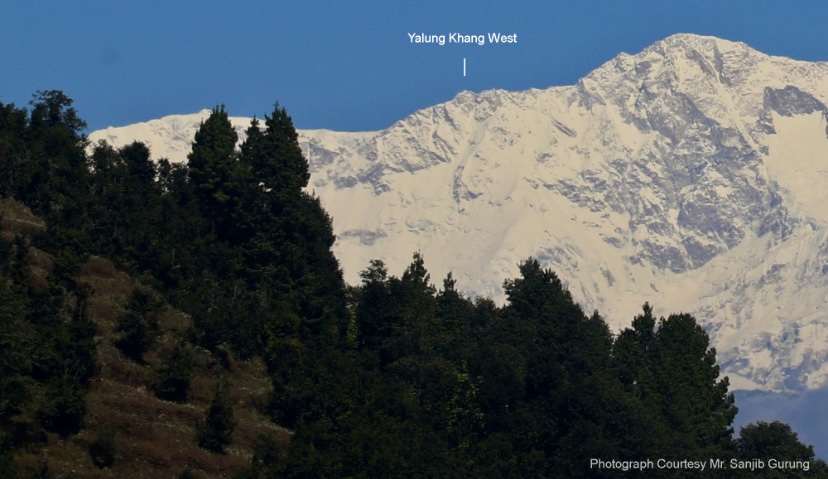
Yalung Kang West
Yalung Kang West (8,077m) is the western subsummit of Yalung Kang. It’s 1.7km south-southeast from Kangbachen and 1.3km west of Yalung Kang. Yalung Kang West remains unclimbed.

Kangchenjunga South
Six teams have targeted 8,476m Kangchenjunga South as their main goal, and it has 31 successful ascents.
Wojciech Wroz and Eugeniusz Chrobak made the first ascent on May 19, 1978, using bottled oxygen.
Russians Vladimir Karataev and Mikhail Mojaev made the first no-O2 ascent on April 17, 1989.
Of the 31 summiters, 12 made it without bottled oxygen: eight foreign climbers and four Sherpas. No one has died on this subpeak.
Kangchenjunga South was last summited in February, 2011.
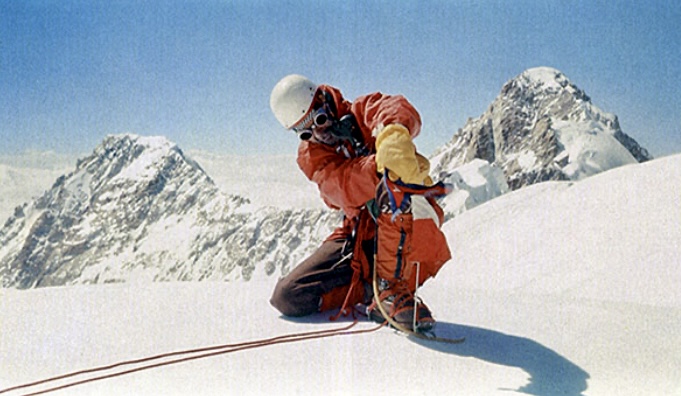
Kangchenjunga Central
Kangchenjunga Central (8,473m) lies between Kangchenjunga’s main summit and Kangchenjunga South. To date, 27 climbers have summited this subpeak.
Zyga Heinrich, Kazimierz Olech, and Wojciech Branski of Poland made the first ascent of Kangchenjunga Central on May 22, 1978. They used bottled oxygen.
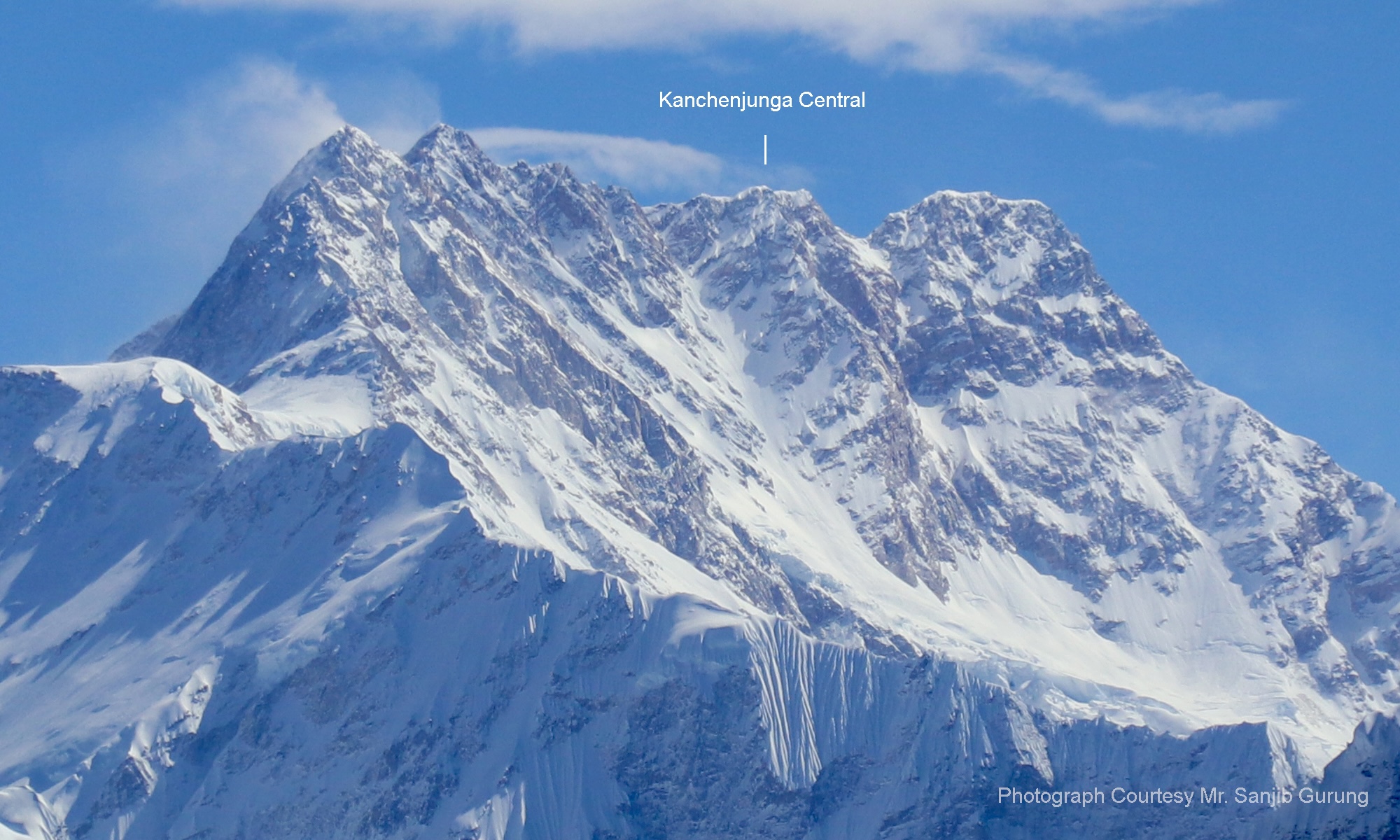
Of the 27 summiteers, only Slovenian Uros Rupar summited without bottled oxygen. He summited on May 1, 1991, and this is the most recent successful ascent.
No deaths have occurred on this subpeak.
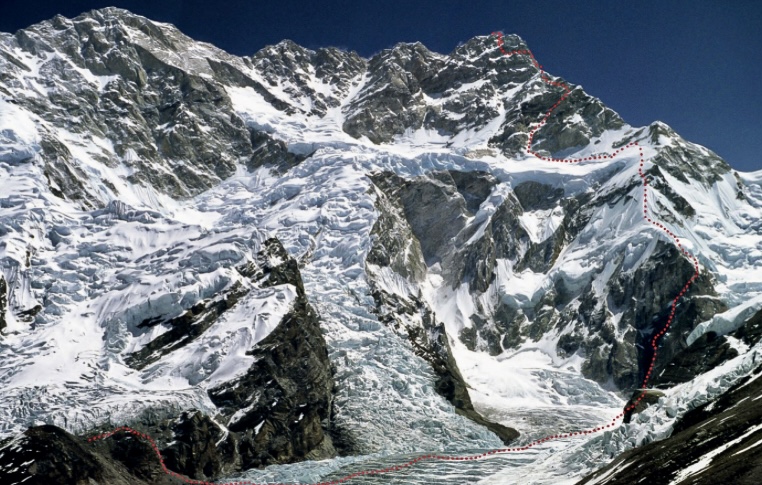
It's worth noting that several expeditions have traversed these subpeaks as part of a larger goal to reach the main summit of Kanchenjunga.
Lhotse's subpeaks have hosted some mountaineering epics. You can read our stories on Lhotse Shar and Lhotse Middle here.
Nepal's Department of Tourism is determined to enlarge its list of 8,000m peaks by adding six secondary summits on Kangchenjunga and Lhotse. However, this campaign to promote mountaineering tourism will not change international criteria or mountaineering history around the 14 highest peaks on Earth.
The Department of Tourism added six "new" 8,000'ers to its official website, Nepal Peak Profile. Now, it will try to get the new list approved by various stakeholders, including tourism entrepreneurs, the Nepal Mountaineering Association, and the army and police forces. It will then lobby for the new inclusions at international forums, The Kathmandu Post reports.
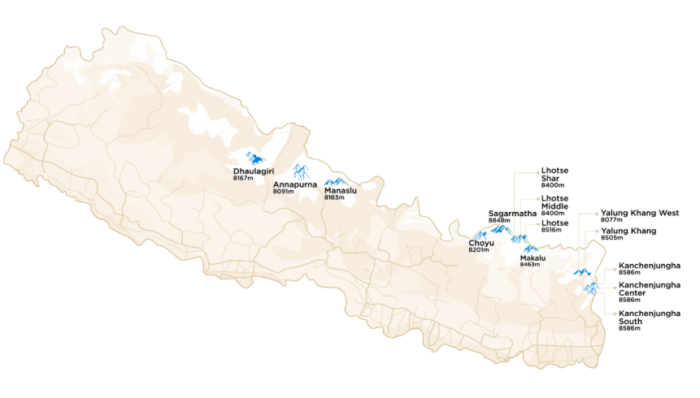
This isn't exactly news. Two years ago, Nepal Tourism quoted a team of local experts who suggested the list of 8,000'ers should include the four lesser points of Kangchenjunga -- Yalung Khang (8,505m), Yalung Khang West (8,077m), Kangchenjunga Central (8,473m), and Kangchenjunga South (8,476m) -- as well as two extra points on the summit ridge of Lhotse -- Lhotse Middle (8,410m) and Lhotse Shar (8,400m).
Secondary summits
However, as we wrote in a long feature story at the time, there are only eight 8,000m peaks in Nepal. All the others are just secondary summits.
In fact, the mountain website 8,000ers.com shows that there are even more secondary summits than those mentioned by Nepal's Department of Tourism. Everest and Annapurna also have subsidiary summits that surpass 8,000m. Pakistan's K2 and Nanga Parbat have these features too, as does Tibet, thanks to the Central Summit of Shisha Pangma.

Since 2023, Nepalese experts have encouraged the International Climbing and Mountaineering Federation (UIAA) to take a stand on the matter. According to The Kathmandu Post, these experts are still waiting to hear back from the UIAA. However, the UIAA made its position clear in October 2023, although it was not what Nepal's Department of Tourism had hoped for.
UIAA: peaks vs summits
After it received the Nepal Mountaineering Association request in 2023, the UIAA issued a report that fall. It pointed out that the crux of the debate is whether mountains are peaks or summits/tops. The 14 eight-thousanders are 14 peaks, no matter how many secondary and tertiary summits they have.
Not surprisingly, there is no clear consensus about what exactly differentiates a peak from a summit. Resisting the temptation to be dogmatic, the UIAA asked the Commission of Mountain Studies of the International Geographical Union for its opinion. It also consulted its own experts.
They considered topographical details, the historical outlook, the interests of the local communities and the Government of Nepal, the previous UIAA experience in defining alpine peaks over 4,000m, and the “spiritual” aspects of individual cases.

According to their previous criteria with 4,000'ers in the European Alps, a peak needs distinctive features and a certain prominence and separation from the main summit of a massif. That is necessary but not sufficient. For example, Kangchenjunga's secondary summits show a certain prominence and clear features, but the UIAA experts also considered the meaning of the Sikkimese name Kangchenjunga -– the “Five Treasures of the Great Snow.”
Five peaks, one mountain
"It is clear that the local population considers the five peaks to be one mountain," the UIAA concluded.
The same applies to Lhotse Shar and Lhotse South, which are "considered part of a greater mountain mass." The UIAA adds that the worldwide mountaineering community universally recognizes the classical classification of the 14 8,000'ers.
"Since that is the community, together with the local population, which has the most interest in these mountains, it is perhaps appropriate that this definition be used," it argued, then concluded:
It is therefore the opinion of the UIAA that the number of mountains over 8,000 meters be recognized as the “classic” 14 peaks. Should the Nepalese government, for administrative and other reasons, choose to recognize more summits, they are, of course, entirely within their rights.
Meanwhile, unilaterally adding additional 8,000m summits to the Nepal Peak Profile website should have little impact. International climbers don't use the site as a reference because it is often outdated and includes incorrect or confusing data about altitudes and ascents.
Unclear business impact
Nepal's lobbyists have always openly stated that the campaign aims to promote tourism and boost the climbing expedition industry.
"If internationally recognized, Nepal could see increased tourism revenue, as climbers looking to set records or achieve new feats would seek permits for these additional peaks," The Kathmandu Post reported.
All the secondary points mentioned are already open to climbers, so anyone can choose to attempt them. But the problem is the price of the permits. A permit for the main summit does not include those secondary summits or even the right to a package discount. Horia Colibasanu of Romania and Peter Hamor of Slovakia had to abandon their goal of traversing from Kangchenjunga Main to Yalung Khan in 2022 because they would have had to pay for the lesser summit as a separate 8,000'er.
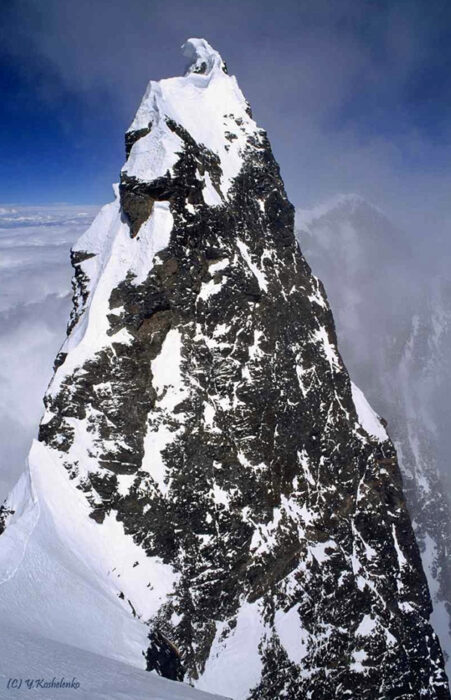
It is also unclear whether expedition outfitters will want to commercialize these secondary summits. All of them include daunting technical sections. The ascents of Lhotse Shar and Lhotse Middle have led to some mountaineering epics, but neither is suitable for guided clients, even assuming that clients would be interested.
Of course, a frenzied market exists to set records, sometimes senseless, on the world's highest peaks. However, climbing difficult and expensive secondary points is not a popular choice for record seekers and social media celebrities today. If that's the plan, the outfitters' marketing teams have a challenge ahead of them.
Thirty-five years ago today, one of the all-time giants of mountaineering perished.
On Oct. 24, 1989, Poland's Jerzy Kukuczka was attempting the South Face of 8,516m Lhotse, when his rope broke. Kukuczka fell to his death from an altitude of 8,350m.
Born in Katowice, the great Polish climber had already completed all 14 8,000m peaks. At this time, this was one of the pinnacles of alpinism, compared to today, when it is fast becoming an Instagram listicle for guided clients. Kukuczka established several new routes on these 8,000m peaks and completed four successful winter ascents of them.
Beyond his incredible physical strength and technical skills, Kukuczka was a loving family man. An electrician by trade, he found joy in the Himalaya and the Karakoram. Sometimes, he painted factory chimneys as a temporary high-altitude worker to raise money for his expeditions.
”At the top, there is no explosion of happiness," Kukuczka said once. "Happiness is when everything remains in front of you, when you know that you have a few hundred, a few dozen meters ahead to complete your goal. That is happiness.”
Although this is the day he died, it's best to celebrate his life and legacy by sharing the documentary below about this legendary climber.
The remaining commercial teams on Shisha Pangma reported 100% summit success today. It includes an unprecedented list of national and age records on the 14x8,000ers list, especially in the women's category.
There are so many records that they are hard to track. Luckily, the outfitters have posted their summit lists. Seven Summit Treks also includes each individual record for their members, below.

The Climbalaya team also had record holders, including two women. He Jing of China climbed all the 14x8,000'ers without supplementary oxygen. She becomes the first Chinese and the third woman to do them this way after Gerlinde Kaltenbrunner of Austria and Nives Meroi of Italy.
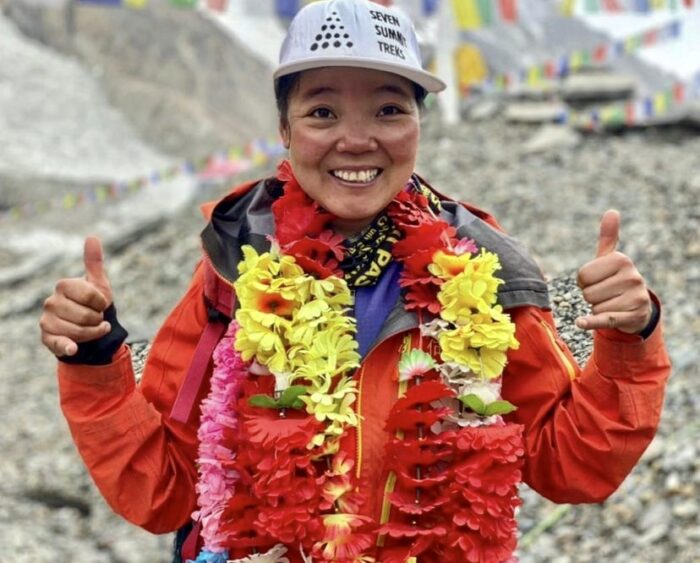
More firsts
In the oxygen-assisted category, Dawa Yangzum Sherpa is the first Nepali woman to complete the feat. Dawa Yangzum is from Rolwaling, as is Mingma G, who last week became the first Nepalese to summit the 14x8,000'ers without supplementary oxygen. Dawa Yangzum climbed with Mingma Tenzing Sherpa, an IFMGA guide who also completed his 14 peaks list on Shisha Pangma.
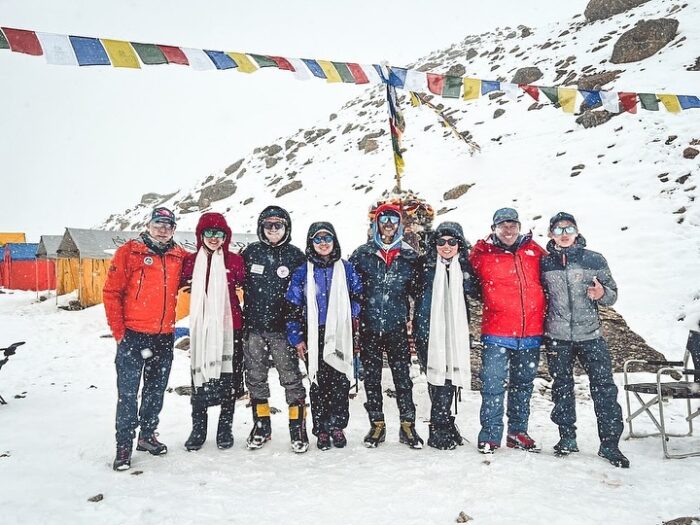
Their summit list also includes Bharath Thammineni of India, Da Chhere Sherpa, Ngima Nurbu Sherpa and, interestingly, Anna Pfaff of the U.S. Pfaff has returned to high altitude after losing six toes to frostbite on Mt. Huntington in Alaska. Last year, Pfaff made her first return to altitude on Kyajo Ri.
Strategy and oxygen
The Seven Summit Treks team -- and likely everyone else -- left from what Uta Ibrahimi calls Camp 2.5 on her InReach texts, located at some 7,000m. The strategy was to skip a third camp to speed up the push, which began Monday. The forecast does announce increasing winds and snowfall beginning tomorrow.
Nearly everyone who summited today made it back to Advanced Base Camp. Personal sherpas supported all the climbers. They followed the Inaki Ochoa de Olza variation to the summit, following the trail and the ropes fixed by the previous summiters, led by Imagine Nepal.

Two of the climbers proceeded without supplementary oxygen. Adriana Brownlee confirmed that she climbed without bottled gas, as did Mario Vielmo. He is one of the few who has stopped for the night in Camp 2 and will reach Base Camp tomorrow.
It does seem odd that everyone has ignored the rules against no-O2 climbing established by the China-Tibet Mountaineering Association at the beginning of the season. We have no information about whether the regulations have changed, but Seven Summit Treks specifically noted in their summit report: "We also thank the China-Tibet Mountaineering Association for their support and coordination."
'A day when history was made'?
Meanwhile, Adriana Brownlee became the first UK woman to climb the 14x8,000'ers, Dorota Samocko became the first Polish woman, Alina Pekova the first Russian woman, and Naoko Watanabe the first Japanese woman. (Tracee Metcalfe became the first U.S. woman some days ago.)
Grace Tseng of Taiwan also completed her 8,000m and thus became the first Taiwanese person overall. Despite the controversy around some of her climbs, both The Himalayan Database and 8000ers.com have accepted her 2022 summit claim on Manaslu.
On that Manaslu climb, she claimed a bitterly disputed speed record, and her no-O2 climb of K2 was never seriously considered. There was also evidence that she did not reach the true summit of Kangchenjunga the first time, so Tseng climbed the mountain again.
While outfitters market this as "a day when history was made," we need to put these feats in perspective compared to those of the past. The accomplishments of Alison Hargreaves, Wanda Rutkiewicz, Ekaterina Ivanova, and Junko Tabei belong in a different category.
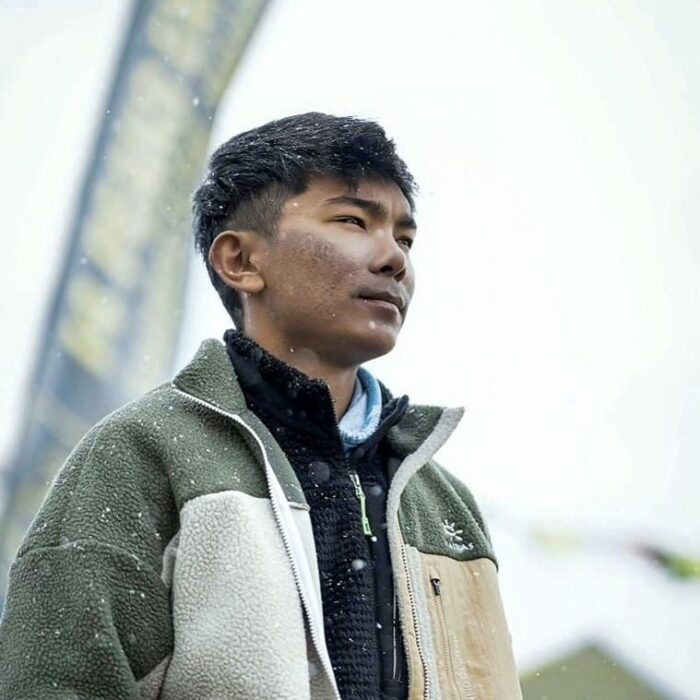
Age records
As for age records, Brownlee has become the youngest woman -- both for the UK and Spain -- while Nima Rinji Sherpa, the son of Seven Summit Treks and 14 Peaks Expeditions' CEO Tashi Lakpa Sherpa has become the youngest overall to complete the 14x8,000'ers, at just 18 years old. Shehroze Kashif has become the youngest Pakistani climber (and the second Pakistani overall, a few days after Sirbaz Khan).
Eberhard Jurgalski of 8,000'ers.com, who is also a consultant for Guinness World Records, has told Explorersweb that, according to his summit studies, Mario Vielmo didn't reach the true summits of Dhaulagiri and Manaslu, and Adriana Brownlee has not been to Manaslu's highest point.
Brownlee was on Manaslu's upper sections that day in the fall of 2021 that Mingma G opened the new variation route to the true summit, and photographer Jackson Groves obtained the drone images of Manaslu's summit area that put an end to years of confusion around the highest point of the mountain. Brownlee was led by Gelje Sherpa and was at the time a member in Nirmal Purja's Elite Exped team. Purja himself, his partners Mingma David (and a Russian client Mingma was guiding), and Mingma Tenzi (guiding Princess Asma Al Thani of Qatar) followed Mingma G and his team to the true summit. However, for some reason, the rest of the Elite Exped team did not. We will check for updates on the issue with Vielmo and Brownlee.
Not the same
While the summits are still summits, and so become duly registered in the statistics, the style, the support, and most of all, the spirit of adventure in which these summits were reached have completely changed such achievements.
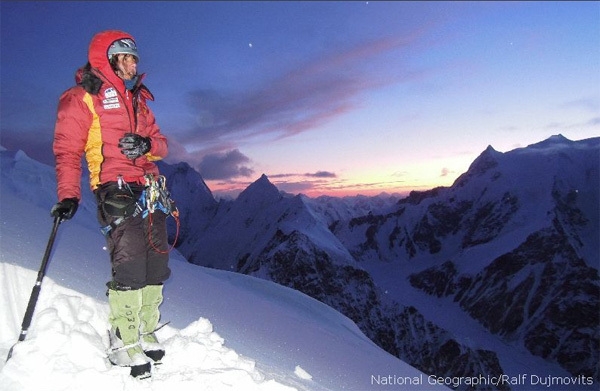
It was very different before the era of commercial expeditions. What once was an extraordinary challenge based on uncertainty and self-sufficiency, where summits were improbable and therefore a remarkable achievement, is now mostly a personal athletic goal. The amount of support greatly increases the safety and likelihood of success. Expedition leaders and guides manage risk and make all the critical decisions for their often unskilled clients.
Even the ones who climb without bottled oxygen typically have the support of sherpas who do all the chores for them, from melting water to fixing crampons to their boots. Often, a sherpa carries spare oxygen for them in case of trouble.
So many climbers
Finally, the credibility of the claims becomes progressively damaged. There are so many climbers each season that no chronicler has the resources to audit them all. The Himalayan Database recently announced that they will no longer interview all climbers coming from an 8,000m summit -- only those teams climbing off-season on different routes. Instead, they plan to just copy the list of summit certificates provided by Nepalese authorities. The commercial operators themselves usually provide such lists and do not scrutinize their clients' claims too carefully.
From a reporter's point of view, climbing the highest peaks on Earth is still an incredible personal experience and a booming business. But ascents via normal routes for guided teams are losing their importance as news. The time is fast approaching when guided 8,000m climbs will be like guided climbs up the Matterhorn or Mont Blanc -- of interest only when something goes wrong.
A helicopter search team has found the bodies of the five climbers who went quiet during a summit push on Dhaulagiri. Rescuers spotted the Russian group at 7,100m.
The victims are expedition leader Alexander Dusheyko, Oleg Kruglov, Vladimir Chistikov, Mikhail Nosenko, and Dmitry Shpilevoy. The team set off on their summit push on October 6 but did not check in again. With no news, authorities scheduled an aerial survey today at 6 am, Nepal time.
The helicopter picked up Denis Aleksenko (who had summited on October 5 and was waiting in Base Camp) to help search the route.
They spotted the bodies during their reconnaissance flight.
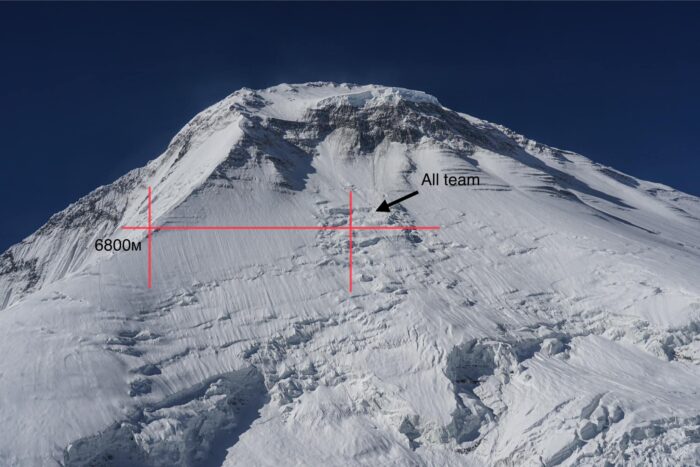
Joint fall
According to preliminary reports, the climbers might have fallen from around 7,600m at the long traverse under the mountain's summit ridge. It is unclear whether an avalanche caused the fall or if the climbers were attached to the same rope and one slip dragged the rest down.
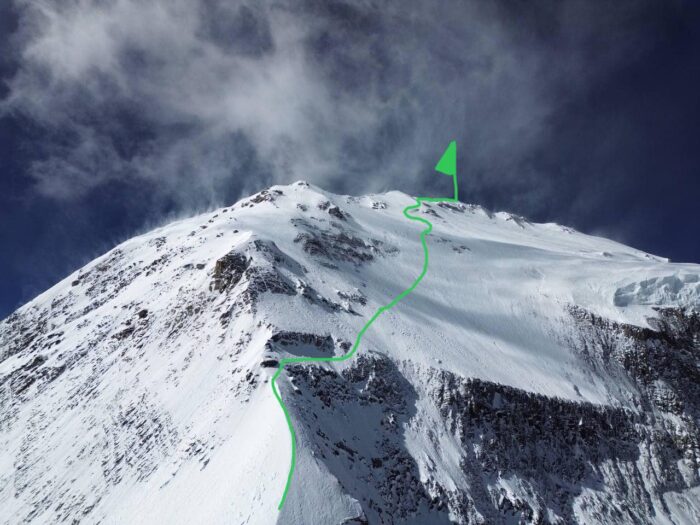
A sixth climber, Valery Shamalo, turned around somewhere above Camp 4 during the summit push. He was airlifted from Camp 1 to a hospital in Kathmandu. Shamalo previously had all his toes and parts of his fingers amputated after a close call on Lhotse in 2017.
Tragedy repeats
This is the second year in a row that Russian expeditions on Dhaulagiri have experienced tragedy. In 2023, a smaller team attempted to climb the mountain without oxygen or sherpa support. The expedition came to a sad end when climber Nadya Oleneva perished in a fall.
This 2024 expedition was also self-sufficient. The 15 climbers used no oxygen or sherpa support beyond Base Camp. They were alone on the mountain.
The recent summits on Shisha Pangma raised questions about risky conditions and officially banned no-oxygen ascents.
Mingma G, a new member of the no-O2 14x8,000m club, has answered some of those questions. He also shared videos of summiting hand in hand with Nirmal Purja, with Sirbaz Khan right behind. None of the three used supplementary oxygen.
After topping out on Shisha Pangma last Friday, Imagine Nepal team members are on their way to Tibet's capital to celebrate.
"We all, as a group, have decided we wanted to visit Lhasa and then fly to Kathmandu from there," Tracee Metcalfe told ExplorersWeb.
It was a lucky choice: The team later learned that floods had washed out the road to the border crossing at Kerung.
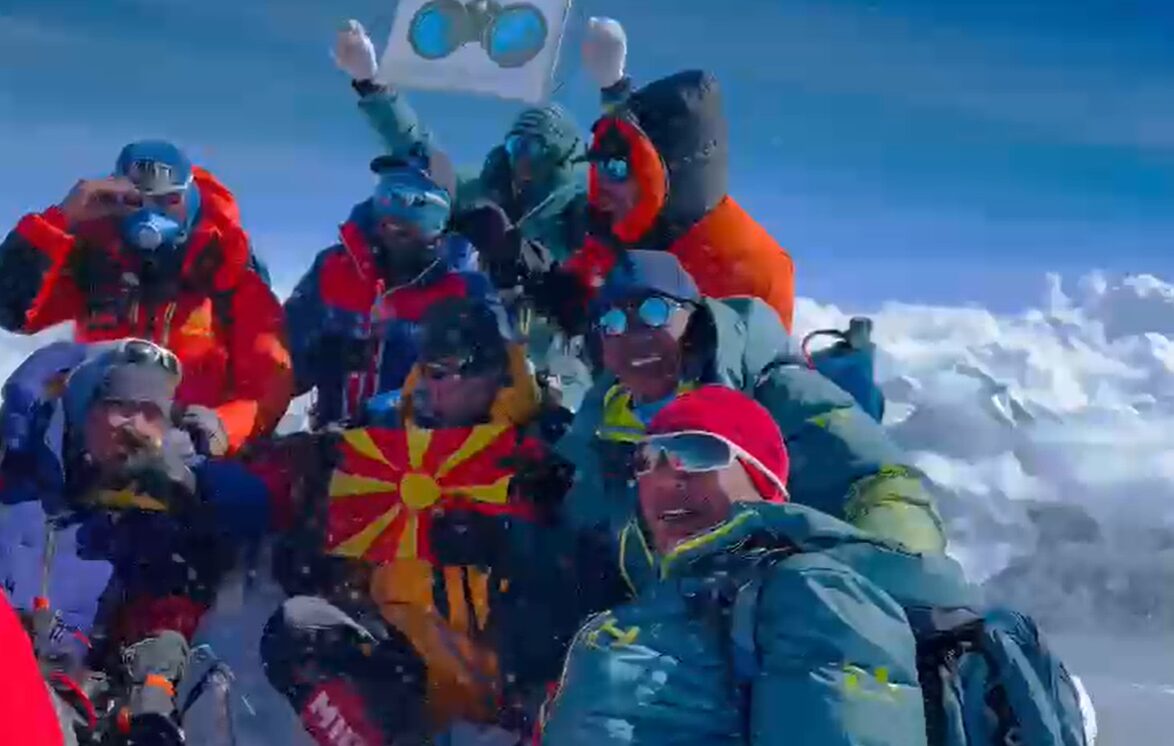
While on the road, Metcalfe and Mingma G spoke with ExplorersWeb about the summit and conditions on the mountain. Mingma G also addressed the no-O2 controversy.
Safe conditions
"This was one of the most memorable expeditions of my career," Mingma G said. "The last part of the climb across a beautiful pinnacle was amazing."
Mingma G noted that Shisha Pangma had lots of snow but was otherwise in "great condition." See the video below of Gnima Nuru sliding down on his crampons as he descends from his ninth 8,000'er.
Other members of the team agree about their great feelings during the ascent.
"It was magical," said Tracee Metcalfe, now the first U.S. woman to summit all 14 of the world's highest peaks.
In Edurne Pasaban's footsteps
As they did Winter K2 in 2022, Mingma G and Purja launched the summit push without any previous announcement. The other team on the mountain (Seven Summit Treks) only found out when they arrived at Camp 3 on an acclimatization climb and saw Imagine Nepal's members preparing to go.
When asked about it, Mingma not only didn't deny it but stated: "We only told [others] we were going for the summit at the last moment because I wasn’t sure about the route. And yes, I didn’t want many climbers following us because they would just hang themselves on the rope instead of helping fix and carry rope."
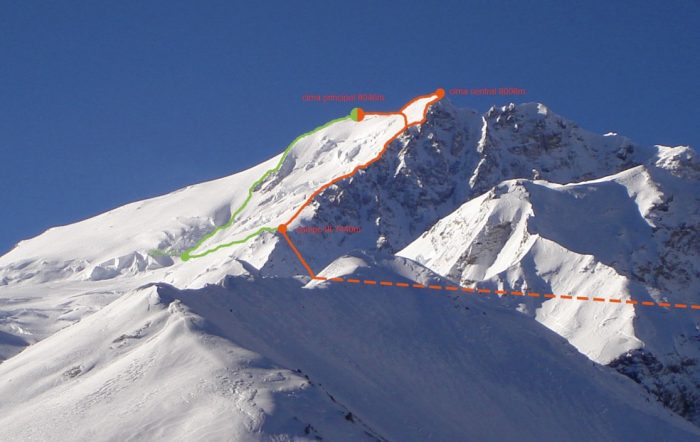
Mingma G also had some grateful words for ExplorersWeb and Basque climber Edurne Pasaban.
"Edurne’s interview about the [Inaki Ochoa de Olza variation] route was very helpful for us," he said. "I checked the route last year during the rescue efforts [after the second avalanche last year that took the lives of Gina Rzucidlo and Tenjen Lama] and tried to find some information about it. Then I found the interview with her on ExplorersWeb."
Edurne Pasaban finished her own 14x8,000m quest on Shisha Pangma in 2010. She and her team reached the summit via a variation route previously opened by fellow Spaniard Inaki Ochoa de Olza, as she explained to Explorersweb.
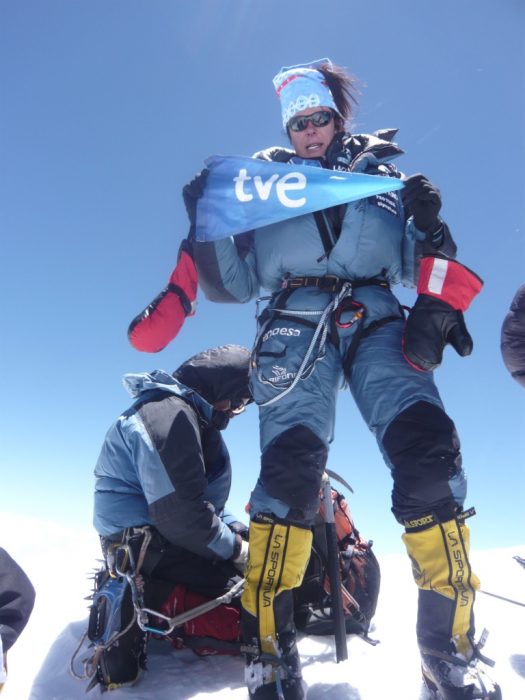
Although the Spanish team climbed Shisha Pangma in spring, Mingma G remarked that the conditions on that variation route this fall were very safe.
The oxygen issue
Friday's summits marked a series of mountaineering records and raised questions about the use of oxygen. The China-Tibet Mountaineering Association (CMTA) has banned no-oxygen climbing above 7,000m in a document that was distributed to outfitters at the beginning of the season.
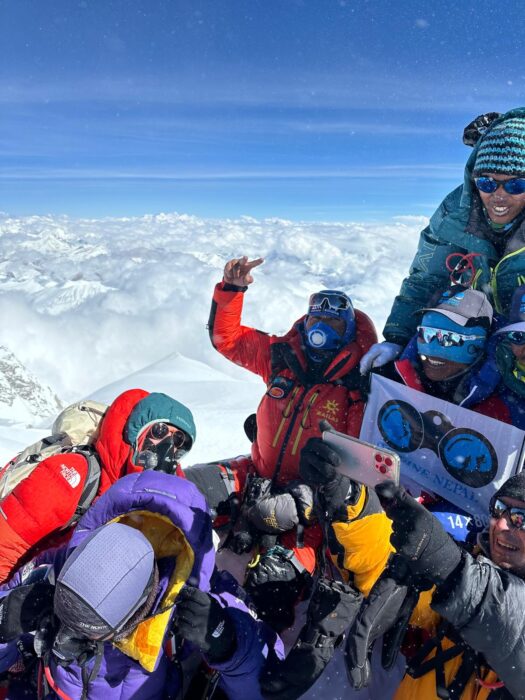
On Friday, Mingma G Sherpa announced that he had not used bottled oxygen on his climb, thus becoming the first Nepalese citizen to complete the 14x8,000m challenge in the no-O2 category. Asked about it by ExplorersWeb before the climb, Mingma G had said he hoped that he and his team would be excused from the requirement. Asked again after the summit, he insisted, "We were not obliged [to]. Sirbaz [Khan], [Nirmal Purja], and I climbed without oxygen on Shisha Pangma, and we were all in great shape."
Mingma G also noted that Anja Blacha of Germany recently summited Cho Oyu, also without supplementary oxygen from the Chinese side. Indeed, she did so on Saturday with Seven Summit Treks:
Summit 'bros'
Nirmal Purja's summit was not confirmed until yesterday, Monday, although it was no secret to everyone on the mountain that he had joined Mingma G's summit team. Purja's own team contributed to the confusion with an Instagram post on Saturday that referred to the summit climb as something that had not yet happened 24 hours after it actually took place. Ultimately, Mingma G removed all doubts in the video below.
In it, the climbers insist that there was zero competition among these two "Nepali brothers" and friends. Nirmal Purja states the two of them are the "first" Nepalese to complete the no-O2 version of the 14x8,000m challenge, and Mingma G agrees.
Nirmal Purja was born in Nepal but renounced to his citizenship to become a UK national and join the army there. However, he later obtained a Non-Resident Nepali Citizen Card on Nov. 9, 2023, just days before he attempted Shisha Pangma without oxygen for the first time.
His summit push was aborted when his client, Anna Gutu, and guide, Mingmar Sherpa, died in an avalanche. His citizenship now becomes relevant since a first is at stake. However, his only competitor for the honor, Mingma G, is obviously happy to share the glory.
'Records don't matter'
Mingma G, a Sherpa from Rolwaling and an internationally certified IMGFA guide, is not really impressed by his own record, except for the positive impact it might have in Nepal.
"I am happy that at least Nepalese are now in the 14x8,000m club without O2, but these records don’t matter in my career now," he said. "It’s just a week of celebration, and then everything will be the same again. I [will] do what I have been always doing. If anything, I might get more clients ;-)"
Sirbaz Khan's hard work
Looking back at the summit video, behind Purja and Mingma G are two other climbers: Phur Galzen, dressed in Imagine Nepal's blue down suit, and Sirbaz Khan of Pakistan, in bright orange.
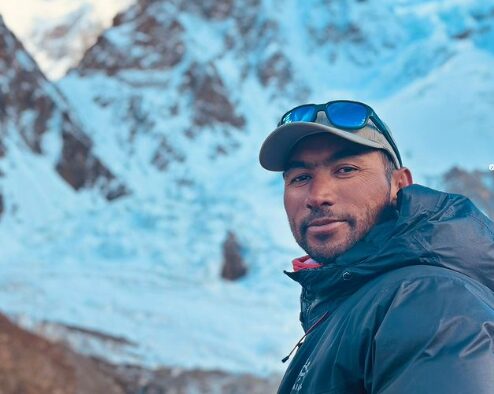
Khan has thus become the first Pakistani climber to summit the 14 8,000'ers. But there's more to his record: Sirbaz started in his early twenties as a kitchen boy for international expeditions. He made his way up the highest mountains on Earth on a shoestring budget, working as he went. Instead of climbing as a guided client, he joined the working crews on the 8,000'ers, carrying loads and fixing ropes.
He summited his first 8,000'er, Nanga Parbat, in 2017, already without supplementary O2. In the last few years, he has worked and climbed with Imagine Nepal. He also worked on Shisha Pangma despite climbing without supplementary oxygen. In fact, Shisha Pangma is the 12th out of 14 peaks that Khan summited in that style. He only used oxygen on Annapurna and Kangchenjunga.
New summit push is on
Meanwhile, the Seven Summit Treks team left Advanced Base Camp today on their own summit push. They tentatively plan to summit on Wednesday. The SST team includes 13 climbers, including some sherpa guides, who will complete their 14x8,000m list if they reach the top.
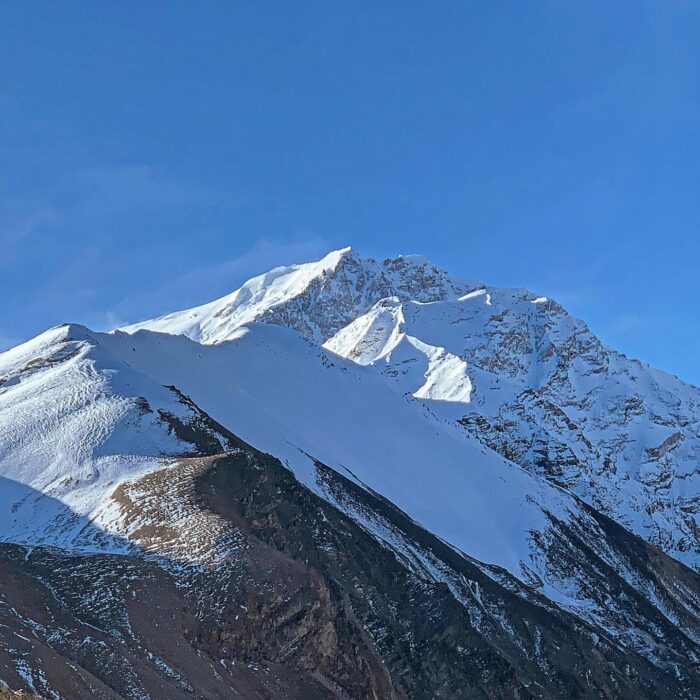
With them is the Climbalaya team and Nirmal Purja's Elite Exped. Although Purja himself climbed with Mingma G's group, his own team did not. Instead, they planned for October 9. It is unclear if Purja himself has remained with his team for the upcoming attempt.
On Friday, Tracee Metcalfe became the first U.S. woman to scale all 14 of the world's 8,000m peaks. She did so by summiting Tibet's Shisha Pangma. At 8,027m, it is the lowest of the 14.
"It was magical," Metcalfe told ExplorersWeb. The 50-year-old internal medicine physician from Vail, Colorado, added some details about the summit day.
"Conditions were much different than last year," Metcalfe said. "We did get a heavy snowfall last week and had over one meter of fresh snow in Base Camp. But this year, the snow was very heavy and wet, which bonded nicely and made avalanche risk much lower than last year."
Metcalfe noted the last meters before the summit were the most intense.
"We reached a false summit that required traversing a cornice for about 180m," she said. "Mingma G led the way on that part, [fixing] the rope as he advanced."
Here is a video of Metcalfe's arrival at the summit.
Last year, a fierce competition between two American women, Gina Rzucidlo and Anna Gutu, to become the first U.S. woman to climb all 14 ended in tragedy. Both had only Shisha Pangma left to complete their list. Both pushed on in unsafe conditions and died with their guides in two separate avalanches on the same day.
"I climb for the joy of climbing and have never been interested in records,” said Metcalfe at the time. She too was on Shisha Pangma that day but did not attempt to summit then. At the time, she had climbed nine 8,000m peaks, making her the third most successful American woman on the 8,000'ers after Rzucidlo and Gutu.
Metcalfe recently told ExplorersWeb that the area between Camp 1 and Camp 2 where a slide made Naoko Watanabe and Sanu Sherpa fell, was solid and stable this year.
"Mostly I fly under the radar, but once in a while, I get to soar," she declares on her Instagram page.
A major snowstorm that lasted at least four days has dumped one to two meters of fresh snow on the Himalaya. The tonnage of powder may have damaged higher camps and buried ropes on the 8,000m peaks. Most of all, it has seriously increased the risk of avalanches on both the Nepali and Tibetan sides.
Nepal 8,000'ers
Most Manaslu teams summited last week, but some climbers are still awaiting their chance. Many of these are not using supplementary oxygen, so needed more time to acclimatize. Flor Cuenca, for instance, leads a no-O2 team of fellow Peruvian women. She says the weather is perfect today, but the snow on the mountain must stabilize before they dare venture up.
Meanwhile, on Dhaulagiri, the Russian team reported no avalanches at the icefall leading to Camp 1 yesterday. They planned to head up from Base Camp today. Before retreating to Base Camp to shelter from the storm, they reported they were ready for a summit push. But is Dhaulagiri ready, too?
On the south side of Cho Oyu, Russia's Andrey Vasiliev is returning to Camp 1 to repair any storm damage. He and his companions had retreated to Gokyo village as the storm approached.
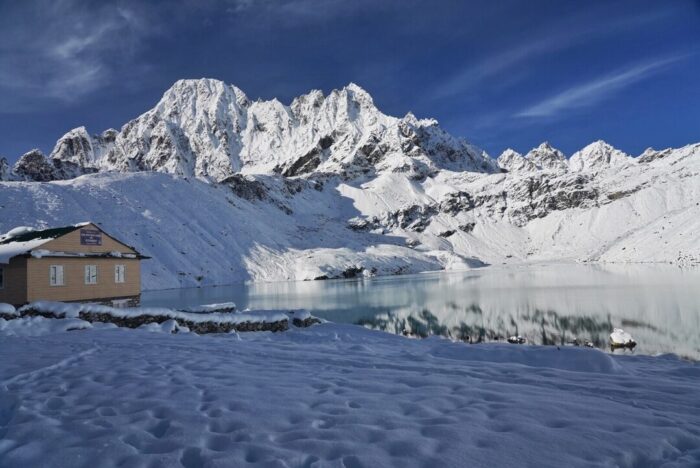
Tibet 8,000'ers
On the north side Cho Oyu, guide Ulises Corvalan reports that after eight days of stormy weather, the mountain is loaded with two meters of fresh snow. Guides still have to fix ropes on the upper sections of the route and will likely have to re-fix some areas between Camp 1 and Camp 2.
We expect updates soon from Shisha Pangma, where windswept snow would have left the avalanche-prone upper slopes in a risky state. Shehroze Kashif's tracker shows that he is moving from Base Camp to Advanced Base Camp today. Uta Ibrahimi was higher up, at 5,900m. It is not clear whether she is on her way to Camp 1 or is just exercising by breaking trail up through fresh snow, as she did yesterday.
"It's too much snow, but we have hope," she texted via InReach. Tracee Metcalfe, a member of Mingma G's team, reports that they are in Advanced Base Camp today.
It's finally confirmed, Shisha Pangma is open for foreign expeditions this fall. Yet climbers must respect the rules set by the China-Tibet Mountaineering Association for the Tibetan 8,000'ers: no solo climbers and supplementary oxygen is mandatory from 7,000m.
"They are the mandatory rules," outfitter Climbalaya explained. Climbalaya has a small group of clients from China and India heading to the mountain. Their group also includes Dawa Yangzum Sherpa, the Nepali woman aiming to complete her 14x8,000'ers project.
We expect several other climbers with the same goal to announce their plans soon, as members of teams launched by Seven Summit Treks and Imagine Nepal.
Are no-O2 projects impossible?
Mario Vielmo will be among them. Vielmo is a professional mountain guide from Italy who has devoted over a decade to climbing the 14x8,000'ers without O2. He only has Shisha Pangma to go.
The regulations established by the CTMA will probably spoil his plans.
"I honestly don't know what I will do about the use of O2," he told us before departing for Nepal. "I will double-check the requirements and, if there is no option, I will stick to them and will have to use supplementary O2."
In that context, it is surprising that Nirml Purja announced that he intends to climb the mountain without bottled gas.
When asked for comment, Purja's team told us that: "Nims has all the required permissions from the relevant authorities for this exped."
Purja is back in the spotlight
After some months of keeping a low profile, Purja returns to his "open-secret project" of summiting the 14x8,000'ers without supplementary O2.
"This mountain has been the site of so much joy and sorrow in my life," Purja said when announcing his plans.
Indeed, Purja finished his record Project Possible on Shisha Pangma in 2019. At the time it was closed to foreigners, but he obtained a special permit from the Chinese authorities.
Last year, as the mountain opened again, Purja led an expedition that ended in disaster. His American client Anna Gutu died in an avalanche, together with her sherpa guide. Gutu was in a frantic race against Gina Rzucidlo (a client in another team launched by Seven Summit Treks) to become the first American woman to summit the 14x8,000'ers. Less than an hour after Gutu and Mingmar Sherpa died, a second avalanche killed Rzucidlo and her guide Tenjen Lama.
At the time, Purja was lower on the mountain, climbing without supplementary O2.
Controversy
Two years ago, we reported that royalty fees to climb K2 had increased for the first time in 20 years. At the time, it was good news. However, the whopping new increase announced for 2025 may have gone too far.
No more group fees
During 2023 and 2024, K2 climbing permits were granted collectively to groups of seven climbers at $12,000. Each additional climber cost an extra $3,000. For 2025, Gilgit-Baltistan authorities have got rid of the collective fee and established an individual royalty of $5,000 per climber. A group of seven climbers that paid $12,000 this year will therefore pay $35,000 in 2025. That's nearly a 200% increase.
Likewise, the fee required for the country's other 8,000'ers (Broad Peak, Gasherbrum I, Gasherbrum II, and Nanga Parbat) will increase too. In 2025 it will change from a collective fee for seven at $9,500 to an individual fee of $4,000, meaning seven climbers going for any of these peaks will pay $28,000.
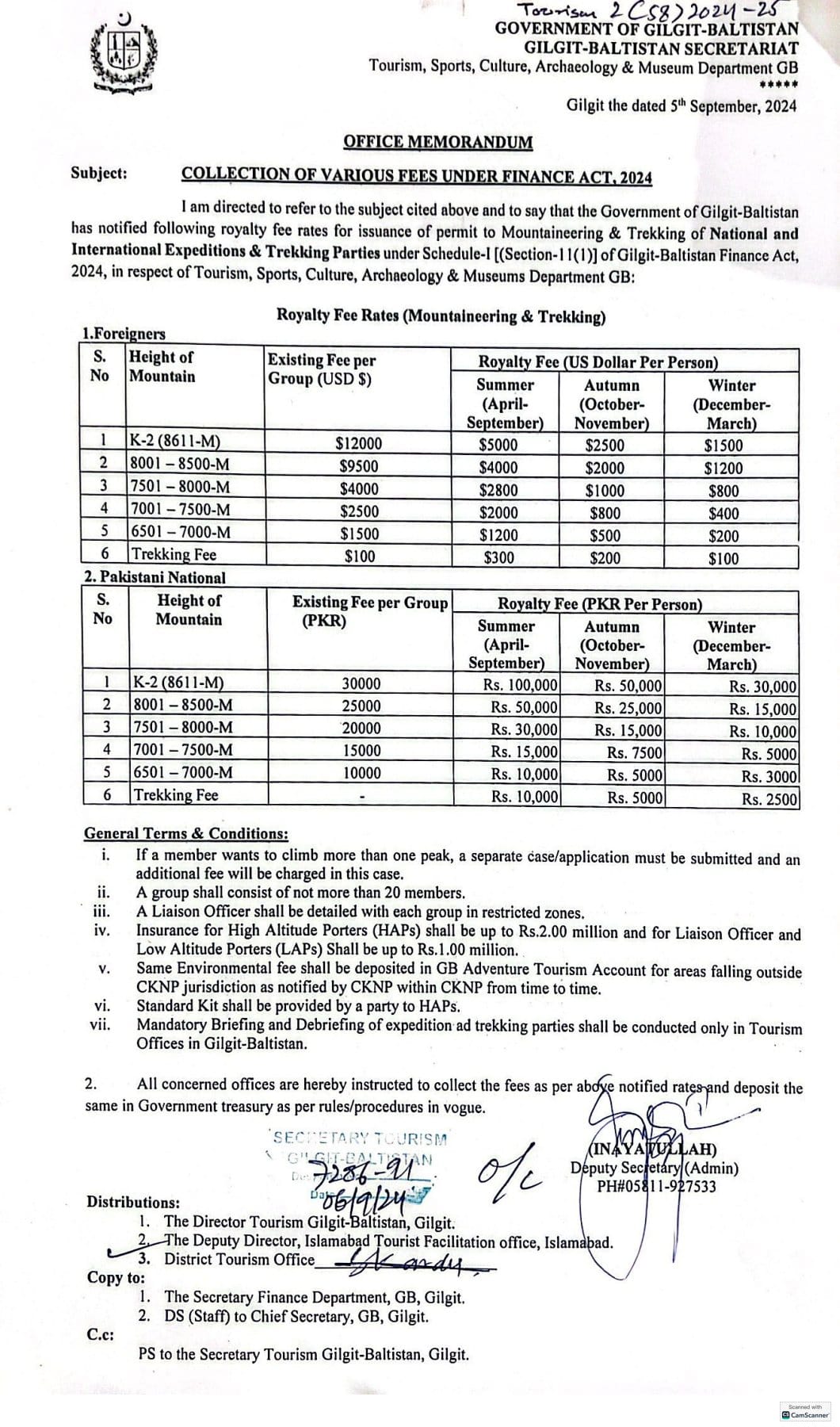
The document is confusing and includes some errors. The fee for trekkers is noted as $100 for 2024, when in fact it was just $50. Interestingly, the trekking fee is valid for climbers aiming for any peak below 6,500m, from unclimbed snowy mountains to rock spires such as the Trango Towers. Pakistan still offers a world of low-cost possibilities for mountaineers ready to turn their attention away from the highest peaks.
According to the document, the trekking fee will be $300 next year, six times the 2024 rate.

Might authorities reconsider?
Local operators are not happy with the price hikes and have requested that local authorities reconsider the increase.
"This is not good for promoting adventure tourism in Pakistan," Ali Porik of Jasmine Tours told ExplorersWeb.
"This year the number of climbers in Pakistan dropped...and it will definitely be less next year [if the new prices are confirmed]," Mingma G Sherpa, owner of Imagine Nepal posted on social media. "We have our reservations for next year but it could be our last season in Pakistan."
Other outfitters noted that the prices listed on Sept. 5 may not be final because of the strong reaction from operators.
It is confirmed, Cho Oyu is open to foreign expeditions on the normal route in Tibet. But climbers will need to stick to some strict rules, leaving much of the sense of adventure behind in the name of safety.
At least five teams
A team from Furtenbach Adventures, comprising eight western climbers and 10 Sherpa guides, crossed the border into China yesterday. They expect to reach Base Camp today.
New Zealand-based agency Adventure Consultants has a team acclimatizing in Langtang and Climbalaya has also announced an expedition. Alpenglow Expeditions has two clients led by Carla Perez and Topo Mena already in Tibet.
There will be also a larger local team launched by the CTMA (China/Tibet Mountaineering Association). The CTMA team will be in charge of leading the way and fixing ropes up the route. Then, the expeditions' support staff will pitch and supply the three high-altitude camps on the normal route up the northwest side of the mountain.
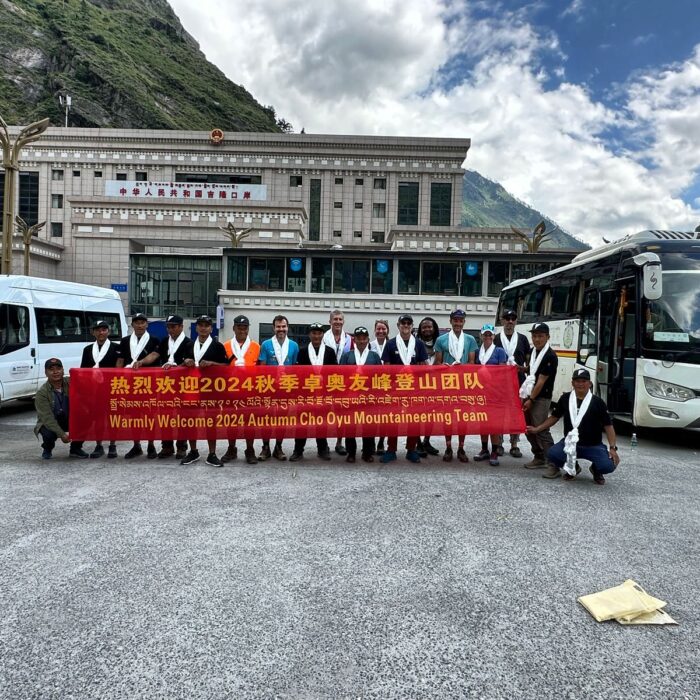
The rest of the climbers will have to follow along, sticking to regulations that replicate those applied in spring on Everest.
- No solo climbers on the mountain.
- Supplementary O2 is mandatory from 7,000m up.
Furtenbach's team is okay with such requirements. All their members will use supplementary O2 and many are already acclimatized, having followed hypoxic training at home or having already climbed Yala Peak in Langtang. If needed, they could be ready to attempt the summit in a single push. However, they will probably complete some rotations as the CTMA team still needs to fix the ropes and that will take time.
The end of no-O2 14x8,000'ers
While these measures will not change the style and strategy of commercial teams, they make a big difference to more independent-minded climbers. Cho Oyu is considered one of the safest, easiest 8,000'ers when climbing on the normal route. It was also one of the 8,000'ers most frequently climbed without the help of bottled O2.
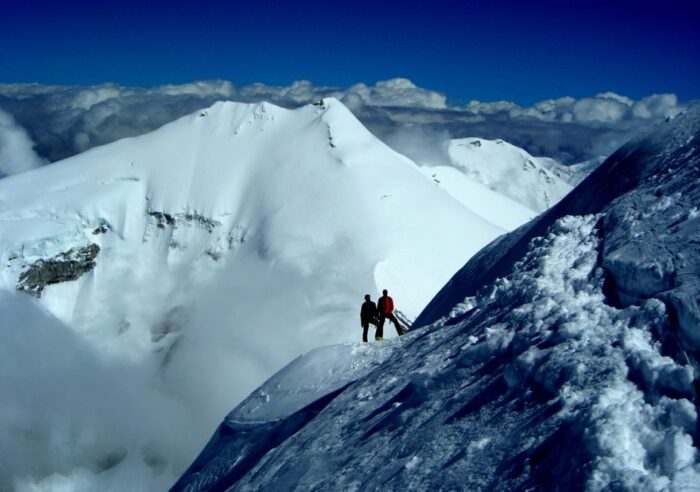
The measure will also affect climbers wishing to complete the 14x8,000'ers without O2. Cho Oyu's south side is in Nepal but poses a much greater challenge. In spring this year, Gelje Sherpa led a Nepalese team (and French climber Alasdair McKenzie) to the summit via the SSW ridge, but information on that ascent is still limited and we don't know if any enterprising teams plan to launch new commercial attempts there.
Climbers aiming for Shisha Pangma without supplementary O2 (which was the regular way to climb that mountain until the ultra-commercialization of the Himalayan peaks) may face a dilemma too. If it's open to foreigners at all, Shisha Pangma will almost certainly be subject to the same conditions.
A 15-member Russian team arrived yesterday at Dhaulagiri Base Camp, ahead of everyone including the Nepalese rope fixers. They plan to climb without sherpa support or supplementary oxygen.

Alexander Dusheiko is leading the team. According to the expedition literature, this includes two-time Piolet d'Or winner and seven-time Snow Leopard Nikolay Totmyanin. However, he does not appear in the team photo, so we will confirm his participation in a later update.
The Russians left for Nepal on September 1 and started the approach trek on September 4. They reached Base Camp yesterday. Today, they fixed ropes over the rocky part of the route, from 4,650m to 4,900m.
Climbing without supplementary oxygen, Skalzang Rigzin of India summited Everest today at 4:30 am. This marks the second confirmed no-O2 summit on Everest this season. At a time when hundreds on oxygen summit Everest in a single day, doing so without bottled O2 is still a dangerous feat, as this year's fatalities indicate.
Rigzin, 42, is the president of the Mountain Guide Association of Ladakh, in the Indian Himalaya, where he has been guiding and climbing for nearly 30 years. He has previously summited Annapurna without supplementary oxygen.
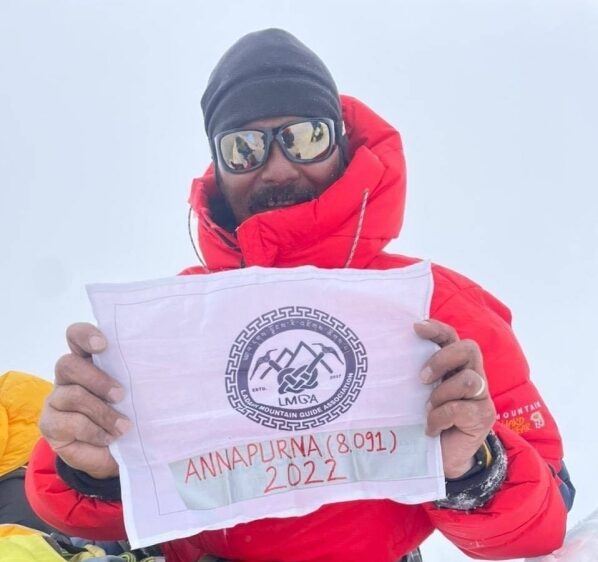
Plans exist to be changed last minute, especially on Everest and Lhotse this season.
"Tim Howell has had a cough for a while, but it’s suddenly gotten really bad in the last 24 hours," Jon Gupta told ExplorersWeb from Base Camp. "We’ve sent him to Kathmandu for a quick hospital visit and a few days rest. We’ll aim for the next weather window around May 18 or 19."
Howell intends to perform the highest-ever wingsuit jump from roughly 8,400m on the ridge of Lhotse. Reaching the exit point will involve climbing across the upper flank of the mountain over unknown terrain. British guide Jon Gupta and Nepali Siddhi Tamang will support Howell.
Meanwhile, Gupta will use the delay to climb Nuptse, possibly as soon as Monday. Gupta will climb solo but won't be alone on the difficult 7,961m peak. A small group from Madison Mountaineering led by Argentinian climber Cacho Beiza will set off from Nuptse's high camp toward the summit tomorrow.
Interest for Nuptse
Nuptse, whose name means "West Peak" after its location in relation to Everest, has been getting more attention over the last few years. This renewed interest is mainly from climbers (like Gupta) who have already climbed Everest and Lhotse and want to complete the Triple Crown.
Lhotse teams on the go
Garrett Madison told ExplorersWeb that some teams are attempting Lhotse this weekend. However, Madison's group says they will wait for the best possible weather.
"Our Lhotse climbers are in Camp 2 now and will begin their summit push in a few days when the weather looks really nice," he explained.
As we reported yesterday, weather models differ regarding wind speeds this weekend.
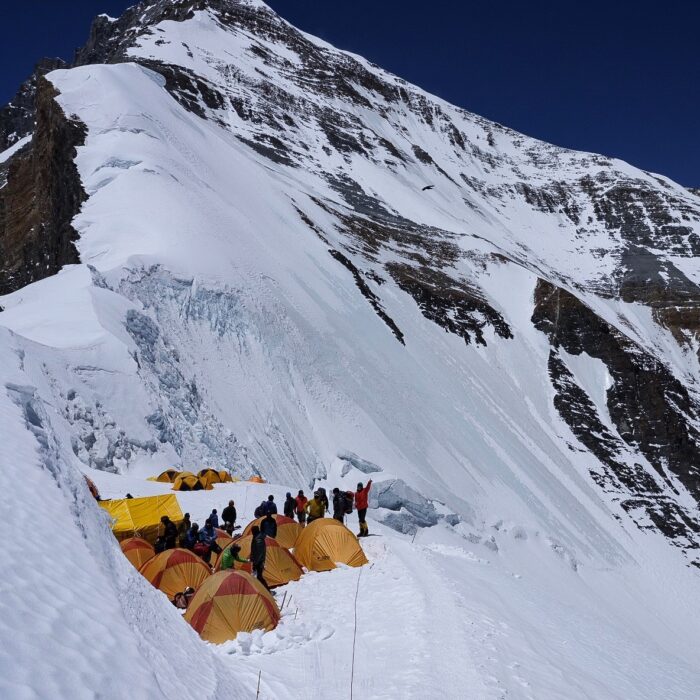
Late Everest
Everest may need to wait a little longer before seeing its first South Side summits this season. While a Tibetan team fixed the ropes to the summit on the North Side last week, problems in the icefall have prevented the Seven Summit Treks rope-fixing team from completing the route above Camp 4.
The Nepali Supreme Court's decision to prohibit helicopters from ferrying gear above Base Camp has also delayed the setup and supply of Camp 4 at the South Col.
Madison estimates the sherpa rope fixers may finally summit on May 12 or 13.
"The route will be ready by mid-May, but we are waiting until the ‘second window’ like we normally do, around May 24, when it’s much warmer, and the mountain is much less crowded," Madison explained.
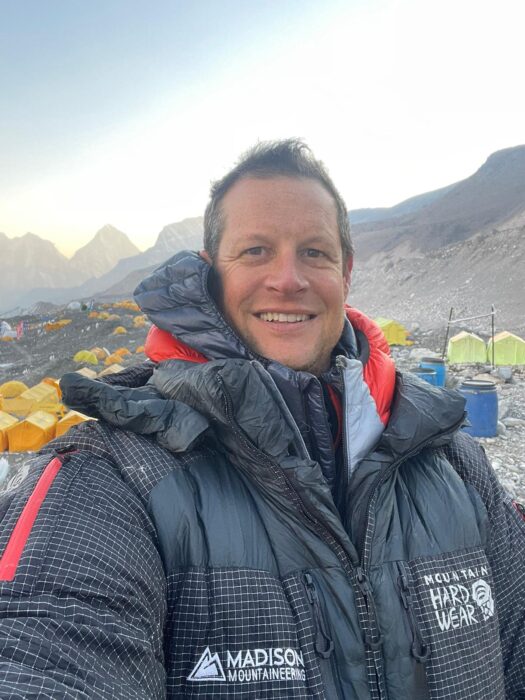
Allie Pepper of Australia summited Makalu today at 3 pm Nepal time, her home team reported. It was a late arrival, and on the difficult, steel-hard blue ice, the descent became a marathon. Four hours after summiting, her tracker located her far from Camp 3. However, eventually she reached it.
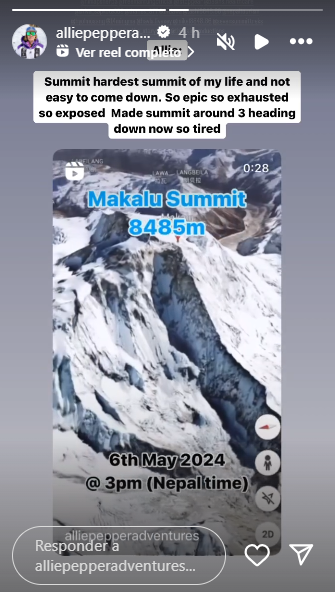
As we noted previously, the Australian set off toward the summit of Makalu yesterday. She is climbing without supplementary oxygen and had waited in Camp 3 at 7,450m for two days until the winds dropped.
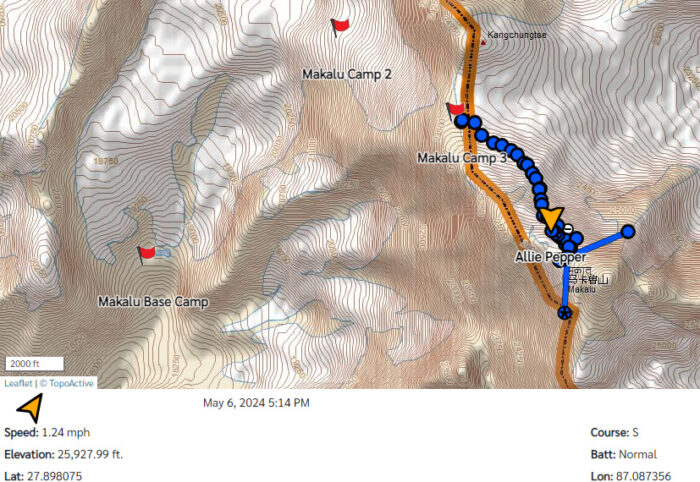
Not alone
Her tracker showed her location near the summit area, still far from Camp 3, at 9 pm. Her elevation then was 7,900m. Camp 3, at 7,450m, she reached some hours later.
Pepper is not alone on the mountain. She was part of a large summit group from Seven Summit Treks. The outfitter reported 12 summits today, including Pepper's, three other clients, and seven sherpa guides.
Two of the guides were Mingtemba Sherpa, known as Mikel Sherpa, and Ngima Wangdak Sherpa. Both supported Pepper on her recent Annapurna climb. Pepper was the only one going without oxygen. It is unclear whether other teams attempted to summit Makalu today as well.
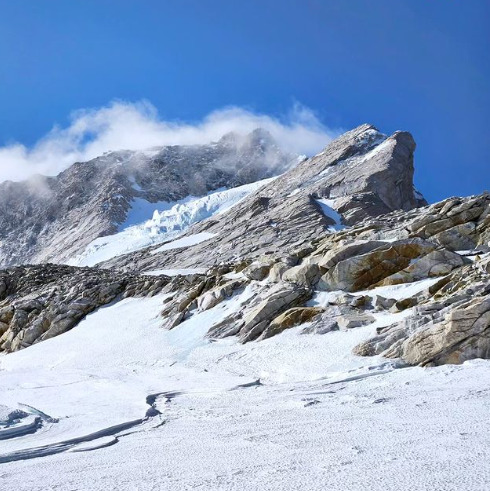
Other no-O2 climbers on Makalu include Stefi Troget of Andorra, who returned to Base Camp from Camp 3 today. Bartek Ziemski's plan is to ski down Makalu, filmed by Oswald Pereira. The two Poles have not reported their whereabouts lately, and one wonders how badly the blue ice will affect their ambitions.
Norrdine Nauar (currently on Everest) reports that Allie Pepper had had some physical problems on Annapurna some weeks ago, but she still made it to the summit without O2. After Makalu, she wants to climb Kangchenjunga. Her goal is to summit the 14x8,000'ers without oxygen, apparently as quickly as possible.
There were more summits on Makalu today, but their descent was agonizingly slow. Nine members of the Imagine Nepal team topped out early enough but only reached Camp 3 after dark because of poor conditions.
The climbers left Camp 3, which lies at 7,450m at the Makalu Col, yesterday before midnight. They summited at 9:10 am. Successful climbers included Sashko Kedev of Macedonia, supported by K2 winter summiter Kili Pemba Sherpa, and Naila Kiani of Pakistan, supported by Phur Galjen. Makalu was Kedev and Kiani's 10th 8,000'er.
Also in the summit group was Wang Zhong of China, guided by Tamting Sherpa, and Hakon Asvang of Norway, with Sonam Tashi Sherpa. This entire group had originally hoped to climb Shisha Pangma, but when China decided not to open the mountain, they redirected their efforts to Makalu. (Kiani and Kedev had also tried for Shisha Pangma last fall when avalanches took the lives of four people and prompted an early closure.)
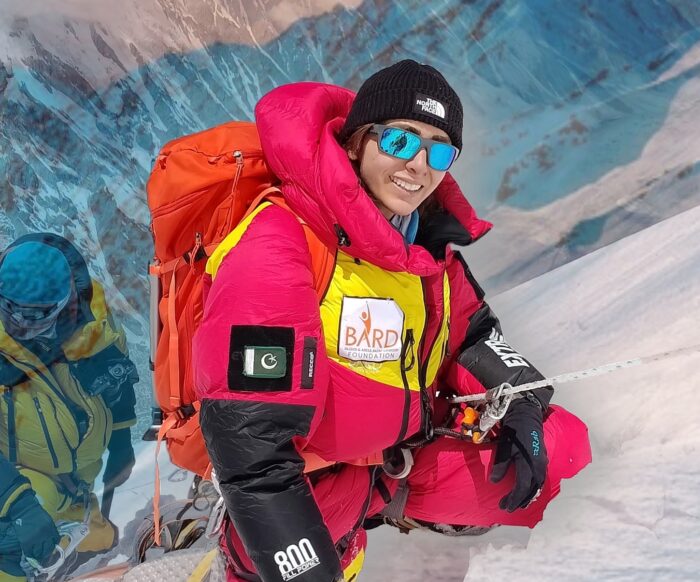
No-O2 climbers
No-O2 climber Allie Pepper of Australia left Camp 3 today for the summit. Check her progress on her tracker here. Pepper was already acclimatized after climbing Annapurna earlier this spring. Mikel Sherpa is supporting her. There may be someone else on the team, but we are awaiting confirmation.
Stefi Troget of Andorra, on her first acclimatization round to Camp 3, returned to BC today.
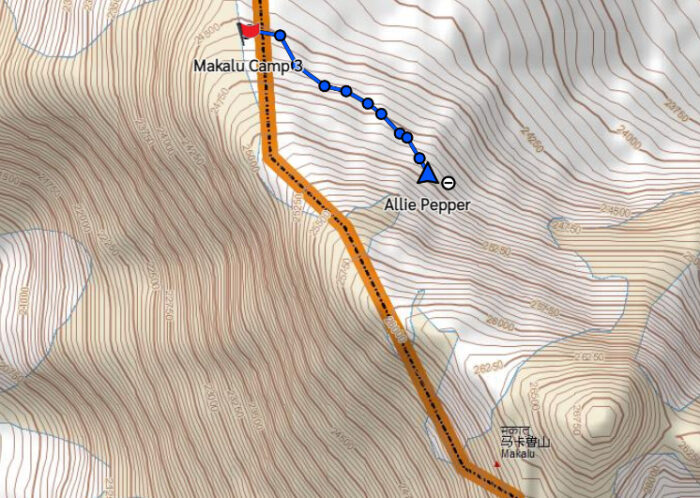
The video below shows a previous year's arrival at the summit of Makalu, filmed by Jackson Groves.
Climbers on Makalu have reached Camp 3 while battling bitter cold, high winds, and hard ice. Those on oxygen will continue toward the top tonight. Meanwhile, a first group reportedly summited today: young Nima Rinji and his sherpa guides.
As usual in this era of mountaineering, almost everyone is moving at the same pace and following a similar strategy. As soon as the winds receded slightly, the teams left Advanced Base Camp (ABC) at 5,700m for Camp 2 yesterday and Camp 3 today. Currently, helicopters still service ABC, as seen in this video.
Makalu is a famously windy mountain, and as we noted in yesterday's Everest update, the dry winter has created hard climbing conditions on the area's 8,000m peaks. On Makalu, Polish skier Bartek Ziemski reported last week that the route is mainly rock and very hard ice.
Many others preparing for their summit push have confirmed this assessment. Naila Kiani of Pakistan, who has decided to return to her 14x8,000m quest, told her home team that progressing over hard ice and rock was extremely tough.
"Winds were crazy from 7,000m upward," she wrote over InReach from Camp 3 at 7,400m.
She said the midday winds were 45kph but are expected to lower to 25kph by tonight. The wind had damaged or wrecked some tents, she added.
If the calmer forecast is correct, climbers on O2 and their personal sherpas will leave for the summit tonight.
Nima Rinji: 12 at 18
Nima Rinji Sherpa and his group reportedly summited at 7:20 am today. There are no details about his companions, although his regular guide, Pasang Nurbu Sherpa, likely accompanied him.
Just 18, Nima Rinji has already summited 12 8,000'ers in his quest to become "the first teenager" to do so. His main contender is Scottish-French Alasdair Mckenzie, who is about to try Cho Oyu from its difficult south side. Mckenzie and Nima Rinji hoped to climb Shisha Pangma this spring, but China didn't open the mountain to foreigners.
No-O2 climbers
It is not clear if any of the \climbers going without supplementary O2 are ready for the summit yet. Stefi Troguet of Andorra confirmed she needs one more rotation before going for the top with her Elite Exped group. She will try to get above Camp 3, then retreat to Base Camp. Bartek Ziemski and Oswald Rodrigo Pereira of Poland were at Camp 3 last week. Allie Pepper of Australia may already be acclimatized after summiting Annapurna.
Finally, news is also expected from Dhaulagiri, where climbers are also on their way up. However, the ropes on that mountain were only fixed until Camp 3. On Makalu, sherpas fixed ropes to the top weeks ago.
One of the season's mysteries is out of the bag, to the disappointment of those hoping for a bold solo climb tackling a difficult 8,000m face. The single foreigner with a permit to climb Cho Oyu from its sheer Nepali side is Alasdair McKenzie, a 19-year-old record seeker. He will climb fully supported by five sherpas from Seven Summit Treks.
Born on June 20, 2004, Mckenzie aims to become the youngest 14x8,000m summiter. He needs Cho Oyu to get ahead of other contenders such as Nima Rinji Sherpa and Shehroze Kashif. With Cho Oyu, he would be level with Adriana Brownlee (who is already 23).
Mckenzie is determined to finish the quest at age 20, and here lies the problem. The Chinese don't care for records and have kept the Tibetan mountains closed.
McKenzie was originally a member of the huge Seven Summit Treks team aiming to climb Shisha Pangma. However, Chinese authorities did not grant their permits, and the Scottish-French climber searched for an alternative target. He eventually decided to try Cho Oyu from the south, despite the fact that the four teams who had tried over the last three years all failed.

Peaks on the run
Mckenzie (who lives in Tignes, France) first climbed the Matterhorn at 16. He switched to the Himalaya in 2021 for a first try at climbing Baruntse. Originally, he was a member of an EliteExped expedition, with whom he climbed 8,516m Lhotse before his 18th birthday. According to Guinness World Records (GWR), he climbed the mountain in four days and summited on May 15, 2022.
Mckenzie then switched outfitters and went mainly with Seven Summit Treks. More GWR certificates followed at a pace that would have been unbelievable 10 years ago but has now become, if not the norm, a plausible option, if fitness, determination, time, and money are not a problem. In 2022, after Lhotse, he summited Makalu and attempted Dhaulagiri and Manaslu.
Last year, he ticked off 10 peaks: Annapurna, Dhaulagiri, Everest, Kangchenjunga, Nanga Parbat, Broad Peak, K2, Gasherbrums I and II, and Manaslu. He has summited all the peaks with supplementary oxygen and sherpa support.
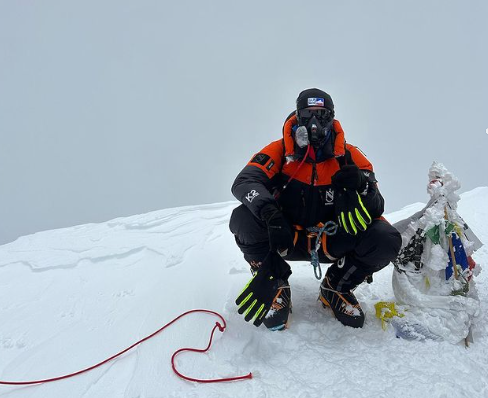
The Cho Oyu plan
Unless there are last-minute additions, Mckenzie will climb Cho Oyu from its south face as the only foreigner. He will be supported by Mingtemba Sherpa, Chhangba Sherpa, Wangbak Sherpa, Phurba Sherpa, and Lakpa Tenji Sherpa, the Everest Chronicle reported.
While this is a personal project for Mckenzie, Nepali expedition operators have spent the last few years trying to find a route suitable to commercialize on Cho Oyu's south side. The problem is that there is no easy way to the top from Nepal. Only a handful of highly skilled alpinists have dared attempt its sheer faces and ridges. Few have succeeded. For a commercial approach, teams would need strong sherpa staff, plenty of ropes and oxygen, and many high camps.
Two strong sherpa teams, led respectively by Mingma Dorchi Sherpa of Pioneer Adventure and by Gelje Sherpa, attempted to find this coveted "commercial route" in the winter of 2021-22. Mingma Dorchi tried the SSW ridge and reached 7,700m. Gelje's team, climbing from the Gokyo side, reportedly reached 7,900m.
The teams tried again in fall 2022, hoping to find less harsh conditions, and record-seekers Kristin Harila and Adriana Brownlee launched another attempt at the beginning of winter, under the leadership of Gelje Sherpa. High winds didn't let them go very far.
Last fall, a Russian team under Andrei Vasiliev made a promising attempt on the SSW ridge but eventually ran out of time and retreated without reaching the summit. The Russians encountered long, difficult sections on the ridges leading to the headwall. These sections looked highly technical, as the photo below shows.
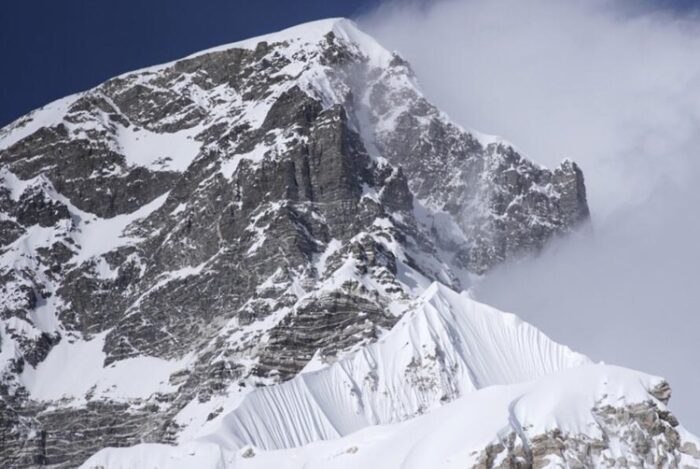
The latest list of permits issued by Nepal's Department of Tourism includes a single unnamed climber willing to tackle the formidable south side of Cho Oyu. This does not mean a solo climber, but a single foreigner. Nepalese nationals don't need to pay the royalty fees and are not included on such lists.
Chinese authorities have closed the normal route on Cho Oyu again this season. While it's possible to climb the mountain from the Nepal side, it is a daunting task. Only a handful have ever managed to succeed on its highly difficult ridges and faces. Nepalese teams have been trying for years to open a suitable route for commercial expeditions, but all attempts have failed so far.
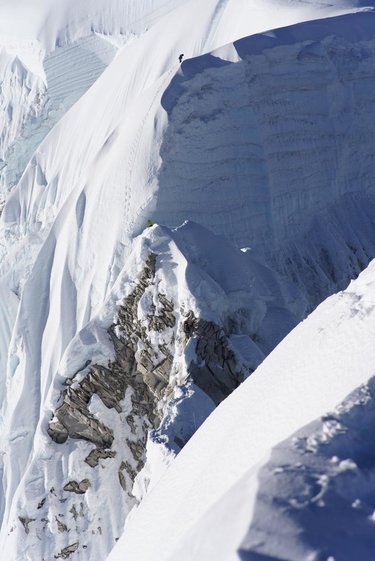
Last fall, a Russian team nearly completed the long south-southwest ridge but ran out of time before reaching the summit.
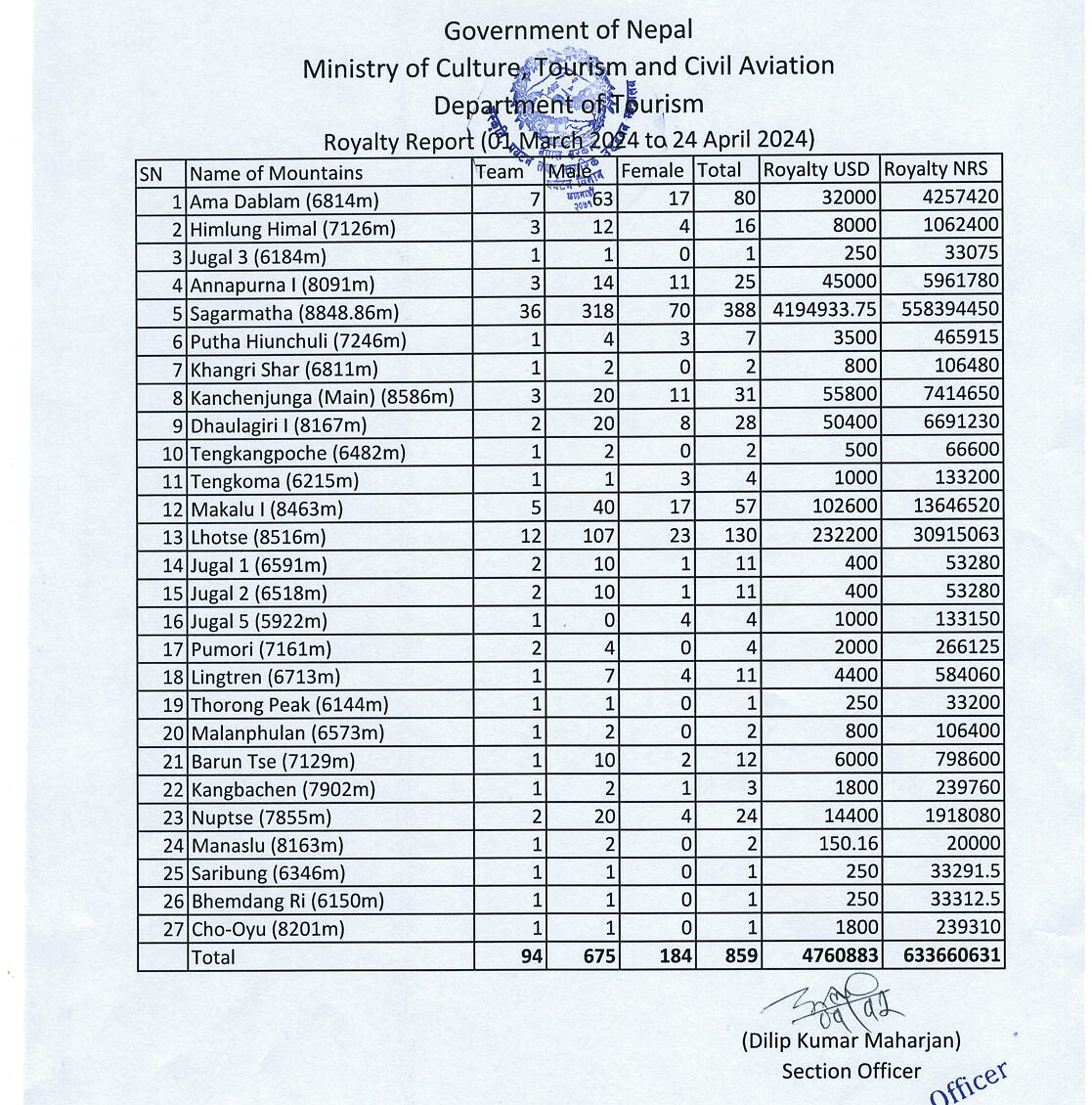
The permit list also shows several one-foreigner teams heading to Nepal's 6,000'ers. Some of these are non-technical (but harder and less visited than popular trekking peaks) like Putha Hiunchuli (Dhaulagiri 7), Saribung on the upper Dolpo, and Tengkoma in the Kangchenjunga region.
There are also more technical alpine climbs like Bhemdang Ri (also known as Morimoto Peak) in Langtang, Malanphulan (also known as Fluted Peak) in the Khumbu, and Tengkampoche, another Khumbu peak on the radar of some elite teams. We expect to hear news shortly about the Korean teams on Khangri Shar and the Jugals.
Everest North Side
When China delayed the opening of Everest until May 7 earlier this week, some expeditions, such as Arnold Coster's team, gave up and switched to the South Side.
"I feel like waiting any longer [for the North Side] is too risky," Coster wrote. "Yes, there been years when people summited late, but I have also seen years when the season just abruptly stops when the monsoon arrives."
Climbalaya has kept its North Side plans for its five clients and told ExplorersWeb that a Base Camp is ready to welcome them.
Everest South Side
Everest and Lhotse climbers are already tackling the Khumbu Icefall. Some have made it through and are in Camps 1 and 2.
"The Icefall route is longer than usual and very circuitous," Mike Hamill of Climbing the Seven Summits told ExplorersWeb. "There are some spots where ice towers hang over the route, but that is pretty normal. Part of the team is currently in Camp 1 while others are back in Base Camp.
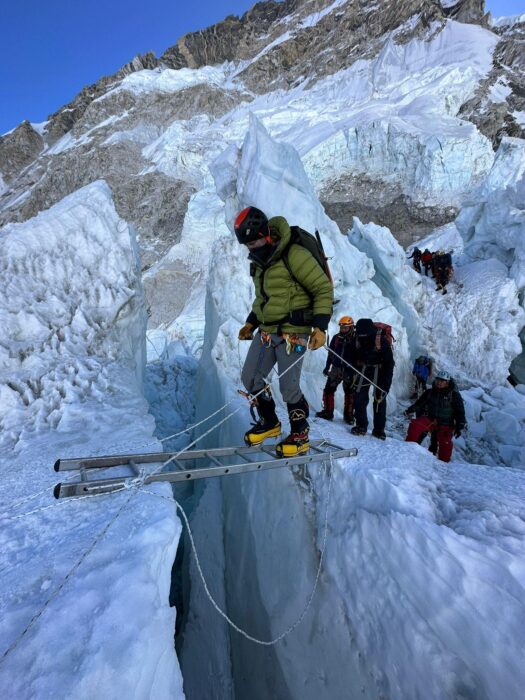
"The Icefall is starting to get busy now but it's not too bad," Hamill added. "It’s mainly the last vertical ice wall where there can be a bottleneck."
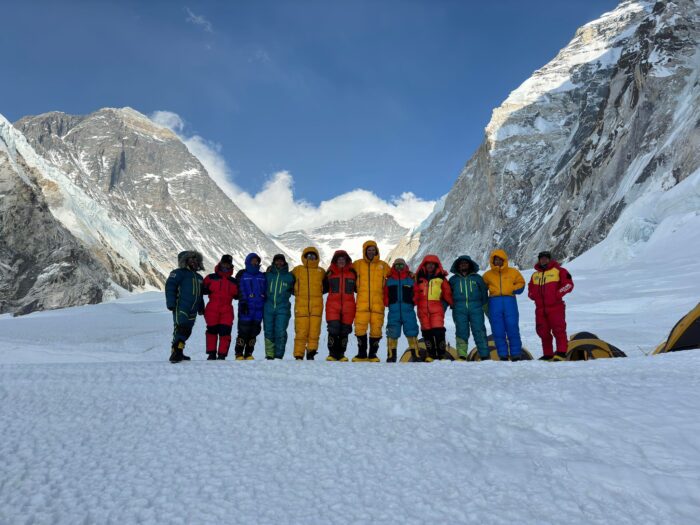
No-O2 Everest climbers
Hugo Ayaviri of Bolivia planned to set off for Camp 2 today. Others, like Norrdine Nouar and Valery Babanov, have been acclimatizing on Pumori's high camp (5,700m). Frank Locke of Norway has just summited Lobuche East, and Tunc Findik of Turkey has been on Island Peak and is currently climbing Ama Dablam.
The delay in opening the route, however, has affected the entire climb. Camp 2 should be buzzing with activity, but this is not the case. It seems to be still under construction. "Our Camp 2 should be ready in a day or two, but we are one of the first teams," Hamill noted.

The Khumbu's 2nd largest town
As peak season approaches, the latest count indicates 388 foreign climbers with a permit for Everest. While that's less than last year this time (454), the numbers may grow unexpectedly as some teams transfer there from the North Side.
In addition, a significant number of climbers are on nearby peaks. Some, such as ultrarunners Tyler Andrews and Chris Fisher, are acclimatizing and training for Everest on Pumori. Lhotse has 130 permits already. Some are aiming for the Everest-Lhotse double header, while others are doing Lhotse only, including several without oxygen.
On Nuptse, Madison Mountaineering will fix the ropes and lead a team to the summit. The peak has 24 permits, but some are getting a Nuptse permit simply to access Camp 2 on Everest and not go any further. Friends of Everest climbers often go to Camp 2 in support. For them, a Nuptse permit is much cheaper than an Everest permit.
Two teams, totaling 11 climbers, are even going to the rarely visited Lingtren. Last year, Simone Moro attempted Lingtren.
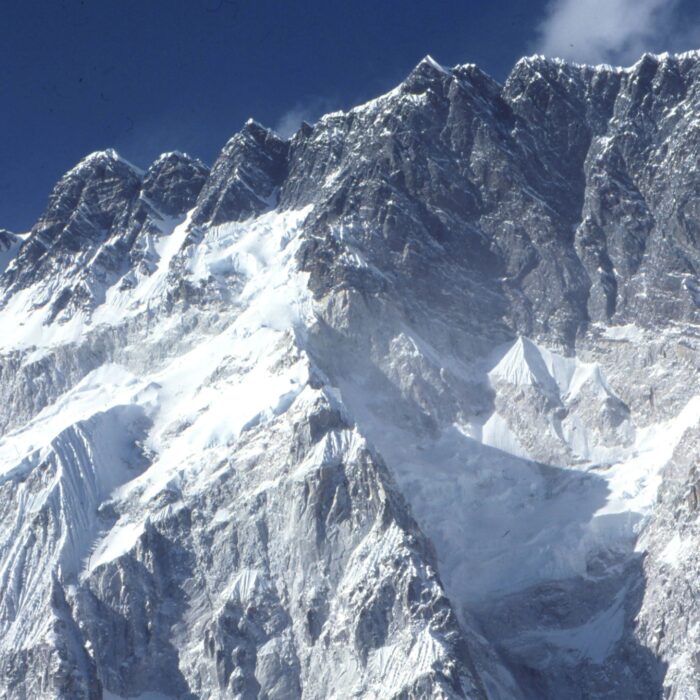
All these people at Everest Base Camp at the beginning of May could make it the second largest "town" in the Khumbu Valley after Namche Bazaar. Note that it's hard to find current population data for Namche. Wikipedia notes 1,647 people in 2001. But Emelie Forsberg, Kilian Jornet's wife, mentioned in a blog post last year that there may be 5,000 people living there.
As things look now, the attempt by local authorities to reduce the size of Everest Base Camp may have proven fruitless.
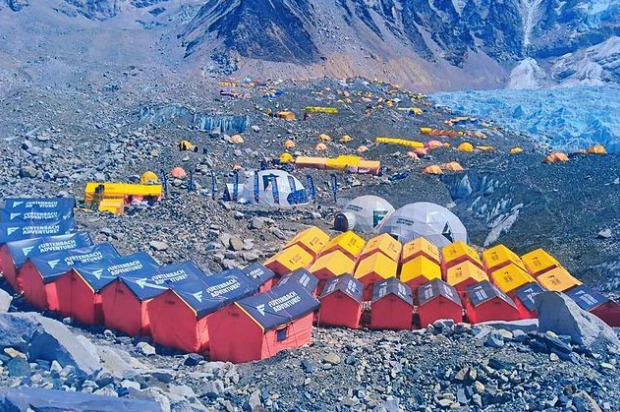
Other 8,000'ers
"We are in Camp 1, and tomorrow we will head to Camp 2, where we will spend the night," Anna Tybor and Paul Lafaille reported from Dhaulagiri. "Anticipating strong winds in the coming days, we decided to take advantage of the current situation and start our first phase of acclimatization."
The latest news from the rope-fixing team confirmed the route was open to Camp 3.
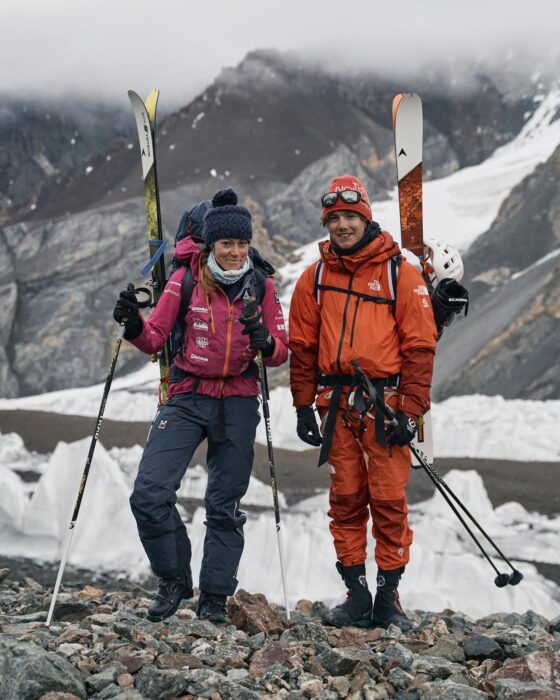
Spring 2024 was possibly the shortest ever season on Annapurna. When the first weather window opened, after ropes were set to Camp 3, everyone on the mountain had to choose: summit or go home. After that first wave of summiters descended, all the outfitters on the mountain packed and left.
But in fact, some summiters didn't even bother to have their well-deserved post-climb cake in Base Camp. They were airlifted from Camp 3 straight back to Kathmandu.
Annapurna in two weeks
The earliest climbers reached Base Camp at the end of March and had time for one rotation to Camps 1 and 2. Then the weather turned for the worse and nearly everyone retreated to rest for a few days in Pokhara. Meanwhile, sherpas set up Camp 3 and laid the ropes to Camp 4. When a weather window opened, they all went up again, aiming for the summit.
Climbers who had arrived later in Base Camp didn't even have a single rotation, but they were told there would be no more summit chances.
"I had to work until the end of Easter, so I didn't have time to acclimatize," David Nosas of Spain said. "We spent a total of nine days on the mountain!"
Still, Nosas and partner Domi Trastoy, outfitted by Satori Expeditions, tried to reach the summit on April 13. Nosas turned around at 7,400m; Trastoy went on supplementary oxygen at 7,500m and did make the top.
"My itinerary was to fly to Nepal, then to Pokhara, then to Base Camp," said Flor Cuenca, a Peruvian who lives in Germany. "Then I went up for an acclimatization round that ended up as an unexpected summit push."
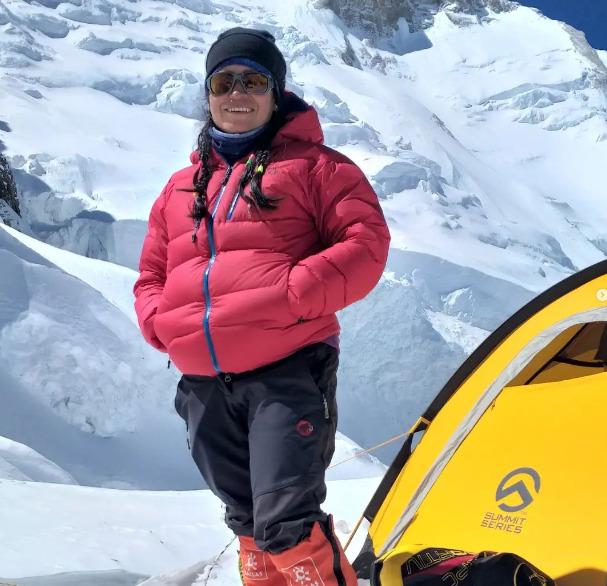
Helicopter at Camp 3
As on all her climbs, Cuenca used no oxygen or sherpa support and carried her own tent and supplies. Once on the mountain, she hurried up to Camp 3, intending to leave her tent as high up as possible and then return for a final summit push.
"It was Mikel Sherpa (supporting Australian Allie Pepper) who suggested that we follow the rope-fixing team to the summit, but I had left my down suit in Base Camp!"
But Mikel had an idea. He asked the crew in Base Camp to put Cuenca's down suit and warm gloves in a helicopter that was going to the higher camps. That allowed Cuenca to summit the following day.
But why was a helicopter flying to Camp 3 on Annapurna, anyway?
April 12: A long summit day
Summit day on Annapurna is usually long, but April 12 was even longer than usual. The sherpas had only fixed ropes until Camp 4. Two groups had left for the summit the night before: one from Seven Summit Treks which also included the Nepalese rope fixers, and Irina Galay of Ukraine, supported by Pioneer Adventure's director, Mingma Dorchi Sherpa.
It is worth noting that the climbers were already tired after arriving in Camp 3. They'd just completed the most dangerous and physically demanding part of an Annapurna climb.
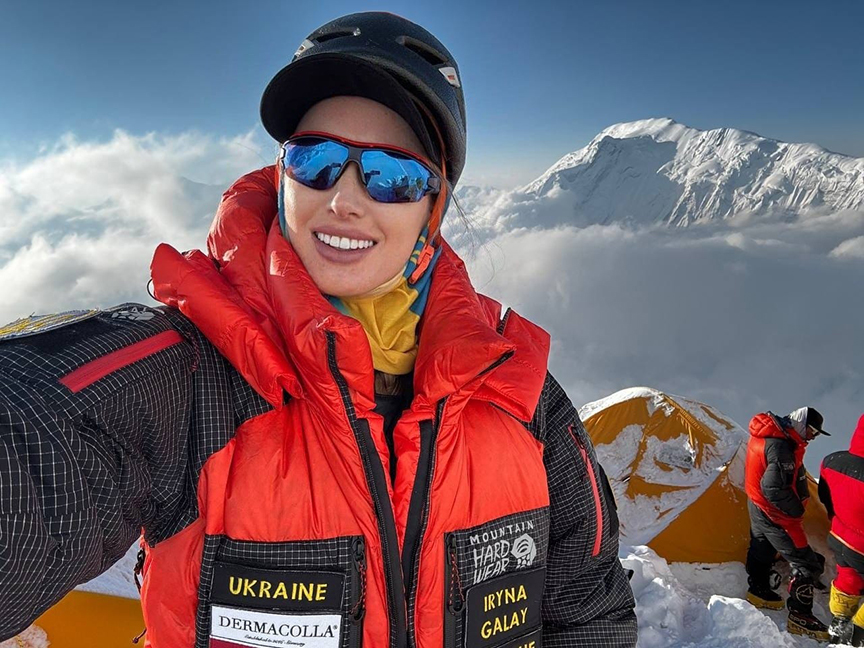
"I summited Everest in 2023 and Annapurna is much, much harder," Samiur Rashid of the UK told ExplorersWeb. "I consider myself to be really fit, but Annapurna took all my strength. Some vertical sections I thought I would not be able to do. It was a very hard climb."
Irina Galay told ExplorersWeb: "We arrived at Camp 3, rested a bit, and began our ascent at 6:30 pm on April 11. We reached Camp 4 at 8:00 pm and saw a team already leaving to fix the ropes...After a brief rest, we followed them."
Galay, who resorted to bottled oxygen from Camp 3, reported that fresh snow loaded the upper sections. "The journey to Annapurna’s summit is very long, and waiting sometimes for more than an hour [as the rope fixers did their work] made it even longer."

Frostbite
"Looking back, I think that was when I started getting frostbitten," Rashid said. "When you move, you feel the cold but your blood is circulating. But that constant stopping and waiting numbed our limbs."
Recalls Galay: "After nine hours, we were only at 7,300m and it was bitterly cold. I saw people starting to pass each other, but it made no sense because we were all just standing there. Some wanted to be first, others had different desires, some sherpas on short leashes began pulling their clients forward. I realized it made no sense to stand around. I moved forward to the fixing team and started helping them."
No-rope section
"By the time I followed them," Galay continued, "they began traversing to the right, and there was no rope. [But] the state of the snow was quite good, and it was possible to move without a rope, but very carefully, with an ice axe. It was dangerous, but all Annapurna is dangerous."
Galay says it took 40 minutes for the whole line to pass the traverse section without ropes.
On reaching the summit, Galay was right behind two rope fixers and two other Nepalese.
"They asked me to wait a bit so they could secure everything, then told me I could approach," she said. "They clipped my backpack to the station with a carabiner, and I sat there. Following me, this 18-year-old guy [Nima Rinji Sherpa] was climbing without oxygen and still keeping my pace. He is very strong! I tried to let him go ahead, but he said, 'No, no, you go first, you deserve it.' After me, he was the next one up."
Nima Rinji was actually just 17 when he summited Annapurna and is well on his way to becoming the youngest 14x8,000m summiter ever. Annapurna was his 11th peak. He is competing for the same distinction with slightly older climbers such as Shehroze Kashif of Pakistan and Adrianna Brownlee of the UK.

In addition to Galay and Dorchi Sherpa, the summiters that day, as reported by Sveen Summit Treks, were Chhang Dawa Sherpa (the expedition leader), the young Nima Rinji Sherpa (no-O2), Pasang Nurbu Sherpa, Ngima Tashi Sherpa, Mingtemba Sherpa, Pasang Sherpa, Pemba Thenduk Sherpa, Lakpa Temba Sherpa, and Manish Maharjan. International climbers included Klara Kolouchova of the Czech Republic, Iryna Karagan of Ukraine, and Samiur Rashid of the UK.
Close call on the way down
Galay said she spent about an hour on the summit, then started down. She negotiated the area without ropes very carefully.
"On the way, I saw sherpas helping a guy who was in bad shape," said Galay. "I only found out later it was Pavel [Pavlo Sydorenko], another Ukrainian."
Sydorenko never reached the summit. He collapsed on the way up, shortly above Camp 4.
"I am not sure if his supporting sherpa was with him, but he spent a lot of time lying on the ground," Rashid said.
Eventually, sherpas on their way down from the summit lent him a hand. Klara Kolouchova found him at 6 pm, some 200m above Camp 4, as she descended from the summit.
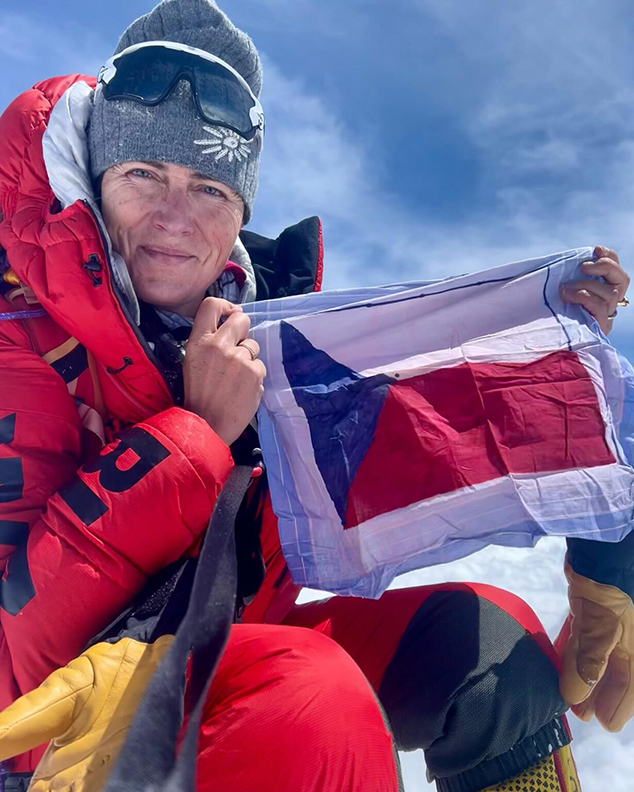
Ukrainian nearly dies
Said Kolouchova:
He was being pulled down on a rope by three sherpas, one of whom was my sherpa Chhepal. When I got to them, Pavlo was hardly communicating (if at all). He was not able to move and just pointed to his chest, signalling he had difficulty breathing. I had an emergency adrenaline pen on me, which I applied to his thigh.
Soon after, he managed to get on his feet, and with support, he could slowly progress on his own toward C4. I made sure he was secured by a short rope to another sherpa and I continued down to C4.
Once there, I talked with Allie Pepper, who was at C4 getting ready for her summit push. She agreed to give Pavlo a shot of dexamethasone as soon as he reached C4. Once we agreed on this, I continued down to C3 for the night.
Early the next morning, heli rescue picked up Pavlo and Iryna [Karagan] and took them down to BC. I believe the application of adrenaline together with dexamethasone saved his life.
Both Kolouchova and Rashid told ExplorersWeb that Iryna Karagan was extremely tired and needed lots of support on the way down.
"I do not think there was a competition among the two Ukrainian ladies [Irina Galay and Iryna Karagan] to be the first on top, because it was clear that one was much stronger than the other," Rashid said. "I climbed with Galay most of the time, and she is extremely strong and skilled."
Galay and Mingma Dorchi reached Camp 3 at 6 pm, as night fell. Then they went to sleep.
From Camp 3 to Base Camp -- or to Kathmandu
We asked Irina Galay what happened when she woke up on the following morning (April 13), and this is what she replied:
"When I woke up in Camp 3 after the summit, I realized that many people in Camp 3 were preparing to be evacuated by helicopter. One of them was Iryna Karagan. I told her not to do it because the key section of the route is between Camp 2 and Camp 3, and if someone can't handle it, I don't think the summit should be considered fully achieved. But she said she felt very ill and wanted to be with Pavel. Another Nepali from Camp 3 also flew out by helicopter."
Kolouchova and Rashid confirmed Karagan jumped in the helicopter and left. They couldn't tell whether she was too tired to continue down. Korouchova said Karagan looked exhausted but not sick.
"When we think we can't go any further, it is incredible how much more the human body can take," Rashid said. "I was not feeling 100% going down either, and I was offered the lift as well. My sherpa insisted I should take the helicopter, but I strongly refused."
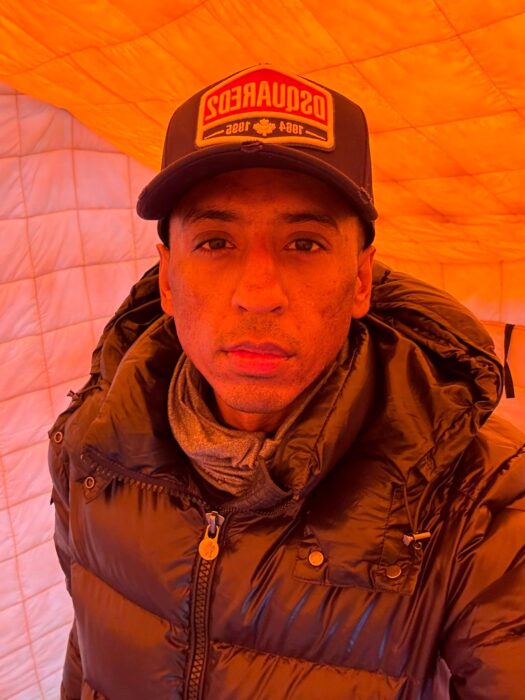
Very strongly, indeed. "I'd rather die than be airlifted," Rashid reportedly told the sherpa. "I am extremely adamant on that point -- a valid climb starts and ends in Base Camp, period," he explained. "I tell that to every climber. A summit with part of the way done in a helicopter is not a summit."
Rashid and Galay said some Nepalese were also airlifted but they don't remember who they were. We have asked Seven Summit Treks' PR spokesperson if any member of their team was airlifted from Camp 3. We are awaiting a reply.
ExplorersWeb has also asked Iryna Karagan for her side of the story, as well as Allie Pepper. On April 13, Pepper was preparing for her summit push. We are still waiting for their reply.
Rescue or shortcut?
Last year, a large number of climbers were evacuated from Annapurna's high camps. There were several emergency evacuations (such as Jonathan Lamy with frostbite and Baljeet Kaur after spending two days lost at altitude). In addition, one climber died (Noel Hanna), and five more (Arjun Vajpai, Naila Kiani, Shehroze Kashif, Dawa Nurbu Sherpa, and Lakpa Sherpa) were airlifted from Camp 3 because the conditions on the section below them were considered risky. These evacuations created a heated debate on whether such summits should be considered valid for the climbers' 14x8,000m lists.
Obviously, all expedition leaders do as much as they can to get a sick or injured climber safely down. The debate is not on whether to airlift but how such an event affects a climber's summit claim.
If the reason is an unacceptable risk, that is a personal decision and should be up to each person, as long as they are transparent about it. But in that case, many would argue that the final result should be considered an incomplete ascent, just as it would have been if dangerous conditions on the mountain had forced a retreat. When the reason is to avoid any possible risk and to return to Base Camp or to town quickly and comfortably, the climb has not only been incomplete but unethical from a mountaineering point of view.
A regular practice
Yet -- and this is the most surprising fact -- such airlifts are not only an open secret, but are becoming a regular procedure for those willing to use it and able to pay for it. Rashid saw this on Everest in 2023.
"Climbers take a helicopter from Camp 2 because they are tired and want to avoid the Khumbu Icefall," he said. "Some climbers also take the helicopter on the way up and start their summit push from there."
The Himalayan Database notes 23 (!) climbers who were "aviation-assisted" last year going down from some point above Base Camp on Everest. Below, how to find such data yourself:

"Honestly, it’s strange for me because we climb to complete the journey, up and down," Irina Galay said. "If you can descend, you descend. If you can’t, it’s a rescue, an evacuation. [Anything else] is absurd and needs to be regulated."
At ExplorersWeb, we believe it is common sense that a helicopter shortcut is not acceptable for any summit record. But the fact is, Nepal's authorities regularly validate such summits.
We asked both The Himalayan Database and 8000ers.com for their take on this:
Statistics: noted, not canceled
"We recognize the summit with an “aviation-assisted” note," said Billi Bierling of The Himalayan Database.
She said that several Annapurna climbers had airlifts from Camp 4 last year. Yet climbs with such asterisks are not easy to find, since they are not included in the season lists. (This writer needed nearly an hour of the ever-patient Bierling's time to find that information.)
Moreover, not every helicopter user shares such details with The Himalayan Database. "This data is not very reliable since helicopter descents are often/usually not reported," their Technical Director, Richard Salisbury, noted.
Eberhard Jurgalski of 8000ers.com says the frequent use of helicopters in climbs should always be noted. Soon, he will require this information from climbers in a new, enlarged version of summit lists he is preparing.
These future tables will record various "styles," including the use of oxygen, ropes, supporting sherpas, camps pitched by others, etc. And, of course, whether the climber took a helicopter anywhere along the way. It would also include paragliding and BASE jump descents.
Yet the question remains: Is a climb done partially in a helicopter a valid summit? For Jurgalski, the style in this era of commercial climbing only matters when the climber is trying to break or establish a record. "In that case, the summit will not be considered valid for the record," he says.
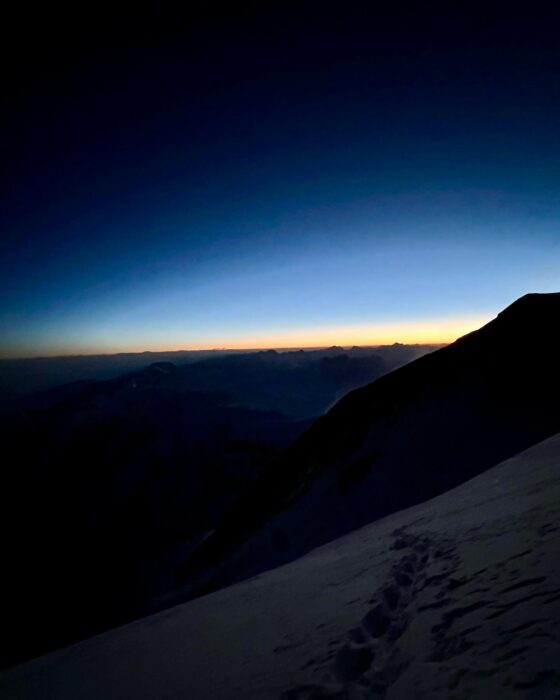
Nowadays, most clients are not doing just one peak, they intend to climb several or all the 14x8,000'ers. Likewise, sherpa guides use valid summits as a positive tick on their resumés.
A terrifying section
"When you are on your way up, the summit fills your mind completely," Rashid said. "On the way down, I can only think of my family, and of returning to them as soon as possible."
Galay points out how life-threatening the section between Camp 3 and Camp 2 is.
"There’s a gully where avalanches occur every 20 minutes," she says. "I personally saw and heard them, I know how terrifying they are. I was so scared when I was there that my legs were shaking. But I kept walking, while someone else took a helicopter? It's not right. And why do we then receive the same certificates? I find this extremely unfair."

"After we started our descent," explained Galay, "Klara [Kolouchova], Sami [Samiur Rashid], and I successfully reached Base Camp without seeing anyone else coming down except one Spanish climber. [This was] David Nosas, who turned around at 7,400m. He walked down too."
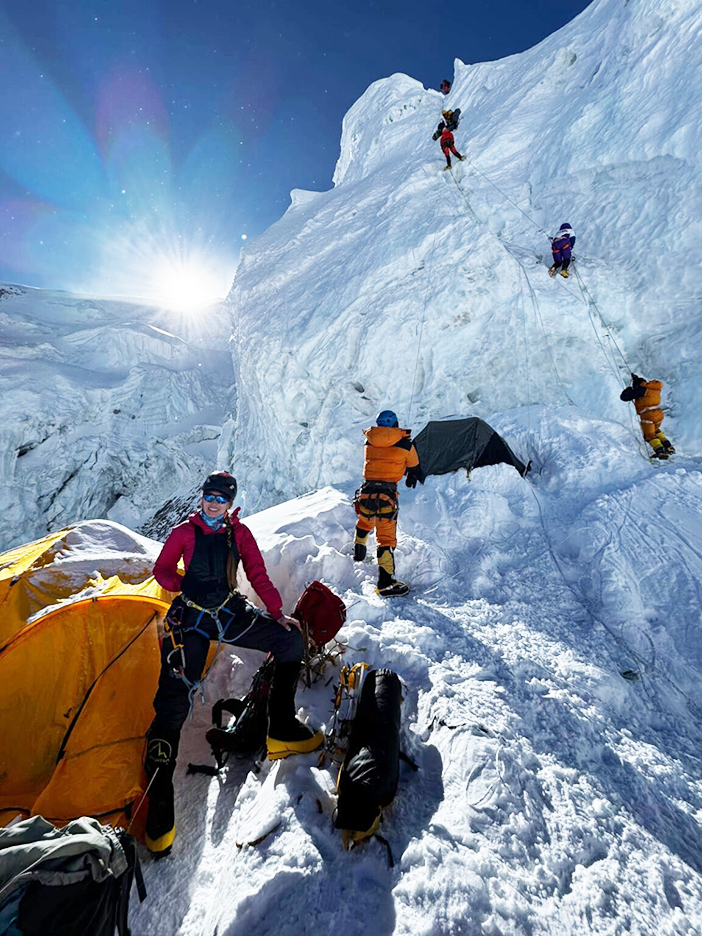
A high toll
For Samiur Rashid, descending on his own took a high toll. He reached Base Camp with frostbitten toes.
"I had big plans for this year," he admitted. "I wanted to climb other peaks in Nepal and then go to Pakistan, but all that's over now. My right foot is badly frostbitten, and I am back home in London with a long recovery ahead."
Rashid said that back in Camp 3 when he was offered the airlift, he did not know about the frostbite. What would he have done had he known?
"Even if I had known I was frostbitten, I would have tried to wrap and warm my feet and continued down on foot [with my sherpa]," he said.
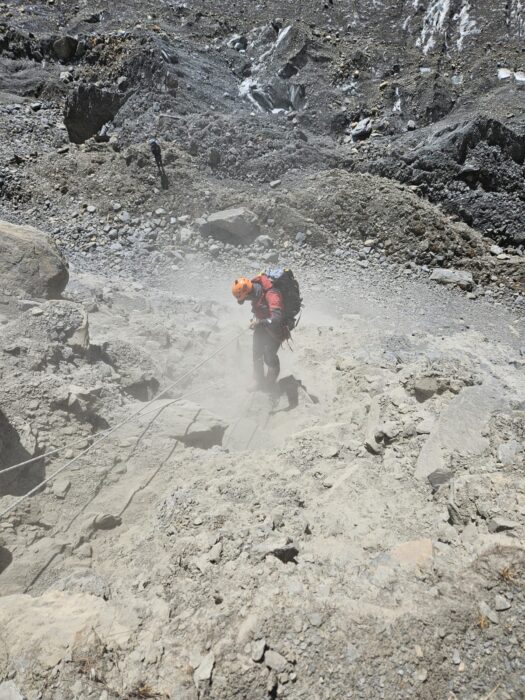
So what now?
As with other sensitive issues concerning Himalayan climbing these days, the problem is that malpractice by a few affects the entire community. The code of omertà that outfitters and their clients follow does not help. Climbers who play by the rules are frustrated to see their achievements compared to others whose successes depend partly on mechanized shortcuts.
But when asked about it, they don't want to be whistleblowers, or else they stay silent to remain on good terms with other climbers and outfitters. Ultimately, though, the truth surfaces and spoils the credibility of the entire industry.
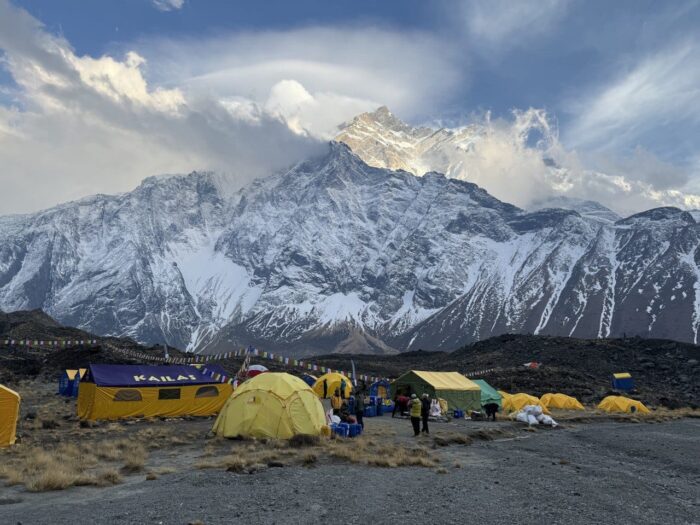
Norrdine Nouar of Germany summited Annapurna without oxygen or personal sherpa support on April 14, together with Flor Cuenca. Luckily, he acclimatized before trekking to Base Camp by climbing up and down Thorong La for several days.
He would have liked to have had more time on Annapurna but understands that self-sufficient, no-O2 climbers are not the best clients for the expedition business. At the same time, he says that 8,000m mountaineering is at a critical juncture. Its image and reputation are in a terrible state, he says. Nouar goes on:
Every climber [should ask themselves] why they climb a particular mountain, and why in the style they choose. Do they love the mountain and want a real experience or challenge with the mountain? Or do they want an easy summit, a nice summit picture, and a nice story to impress their friends and relatives at the dining table?
Right now the world thinks that Everest climbers are just an idiotic bunch of rich egos, who want to buy the summit with the excessive help of sherpas.
These are harsh and unpleasant questions, but we mountaineers need to ask them and be honest about our answers, or the sport will just continue to get worse.
Nouar is currently on his way to Everest, where he will also climb without supplementary oxygen and will carry his tent and all his own gear and supplies.
It is up to climbers whether they favor transparency and set clear differences on climbing styles, or mind their own business. Taking a helicopter from a mountain is a personal choice. But keeping quiet about it and claiming goals while not playing by the same rules as others should not be an option.
Finally, there's news from China, and it's not good: Shisha Pangma will not open to climbers this spring, and the North Side of Everest will only open for foreigners on May 7. Climbers are now re-scheduling or casting about for alternatives. For some, that's easier than others.
No Shisha Pangma
The nearly 50 clients and staff aiming for Shisha Pangma this season will have to look for something else. The distant view they caught while trekking in Langtang last week is the closest they'll get to the mountain.
"After 17 days of waiting for confirmation to climb Shisha Pangma, we've been informed that climbing will not be permitted in the region," Moeses Fiamoncini of Brazil wrote.
Now the team members will have to decide what to do. Fiamoncini, who intended to climb Shisha Pangma guiding Brazilian-Italian Dario Libano, told ExplorersWeb he'll make up his mind in the next few hours. Fiamoncini still has several Nepalese 8,000'ers left to climb. However, others on the team had only Shisha Pangma left to finish their 14x8,000m list.
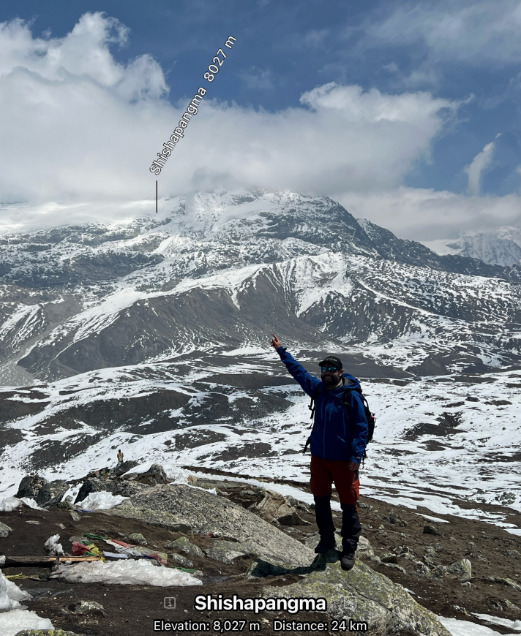
Retrieval projects canceled too?
It is unknown whether the closure affects Nirmal Purja's plans to retrieve the bodies of client Anna Gutu and guide Mingmar Sherpa, who perished in an avalanche last fall.
Purja noted recently on social media that he expected a green light from China-Tibet Mountaineering Association (CMTA) to recover the bodies.
"We have recently been informed our application will be accepted," he wrote. "We will begin the repatriation in April."
However, he posted this before word came about Shisha Pangma's closure, and he's given no update since the news broke.
Kristin Harila, traveling with Seven Summit Treks, also intended to try to find the remains of Tenjen Lama and Gina Marie Rzucidlo, the other two avalanche victims from last fall. The sherpa had guided Harila on all her 8,000m climbs last year.
Weeks earlier, Chinese authorities had announced that Everest would open this spring but did not mention Shisha Pangma. We have no word yet on whether Cho Oyu will open this fall for the expeditions that plan to go there.
Everest in a rush
The CTMA has also announced that Everest will only open for foreigners on May 7, much later than expected. It will then remain open until June 11.
While Shishapangma climbers simply have to find another objective, those heading to the North Side of Everest say they will adapt to the new schedule.
"We will climb some peak in Nepal while we wait for the opening date," Lukas Furtenbach told ExplorersWeb.
He also noted that while foreigners are not yet allowed, a Chinese expedition on Everest is already fixing ropes up the normal route. This means properly acclimatized Westerners can arrive at the mountain with the route ready. They only need camps set up in order to make a quick ascent as soon as the weather allows.
Adrian Ballinger of Alpenglow Expeditions told ExplorersWeb they too will adjust to the delay.
"The period is still long enough," he said. "We planned on entering Tibet on April 28 and spending 35 days on the mountain...so there is enough time."
Season lasts longer on the North Side
One positive aspect is that the North Side of Everest allows a longer season.
"The North Side doesn't have anything like the Khumbu Icefall that gets unstable with increasing temperatures, leading to an early closure," Ballinger explained. "That route has no problem with heat or sun later in the season."

The North Side of Everest is also less affected by the arrival of the monsoon, which comes from the Bay of Bengal in the south.
"While the monsoon hits Nepal at the end of May and forces the climbing season to close, on the North Side of the Himalaya we typically have good weather well into June," Ballinger said.
Ballinger said his team members will continue their pre-acclimatization and training at home until they leave.
Still quieter
Whatever the inconveniences and stress, Everest's North Side will at least be quiet and peaceful compared to the South Side. In the April 21 update of permits issued by Nepal's Department of Tourism, the number of foreigners climbing Everest rose to 352, so far! There were also 75 for Lhotse, 24 for Nuptse, 11 for Lingtren, and 3 for Pumori. The Everest season is heading for another record year, and Base Camp will be more crowded than ever.
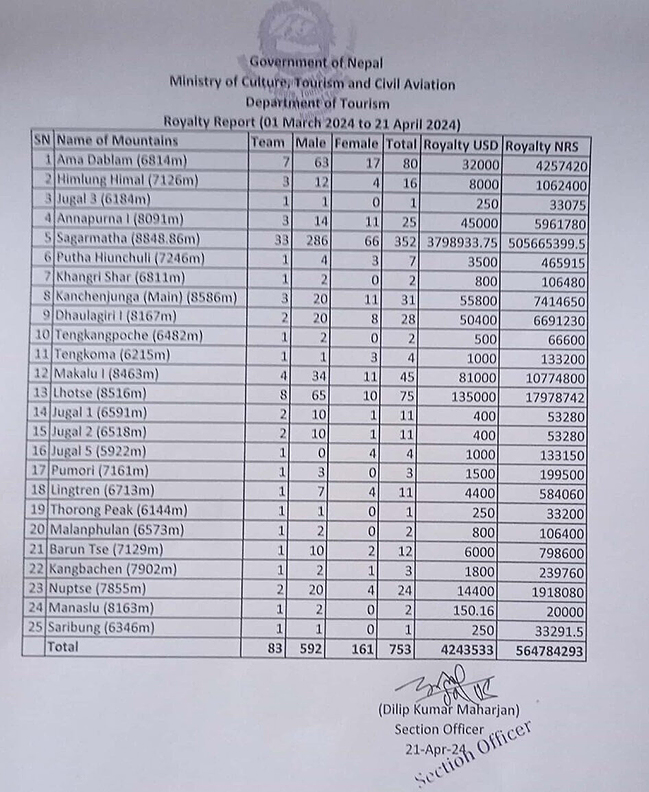
This morning, a huge avalanche on Manaslu reached Lake Birendra, just southeast of the mountain. It caused the lake to overflow, swelling the water of the Budhigandaki River, which runs toward Samagaon village.
No victims have been reported. However, local authorities have issued urgent warnings to populations down the valley because of the risk of flash floods. Trekkers planning to hike to the lake or along the Budhigandaki River (sometimes called Buri Gandaki) must be especially cautious.
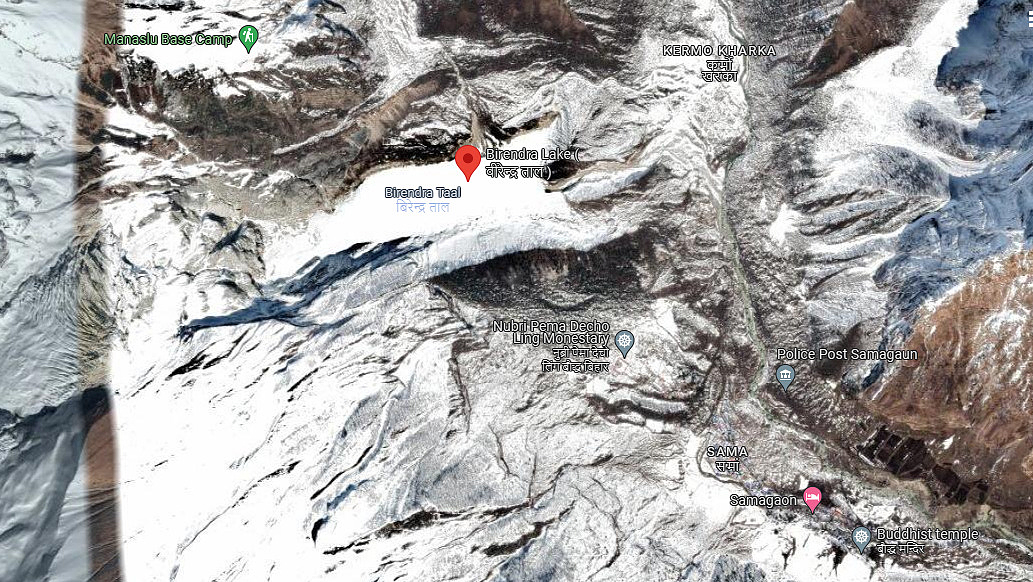
"Initial assessments suggest no immediate threat of further damage, despite the increased water levels damaging a wooden bridge spanning the river," police told The Himalayan Times.
Warning for trekkers
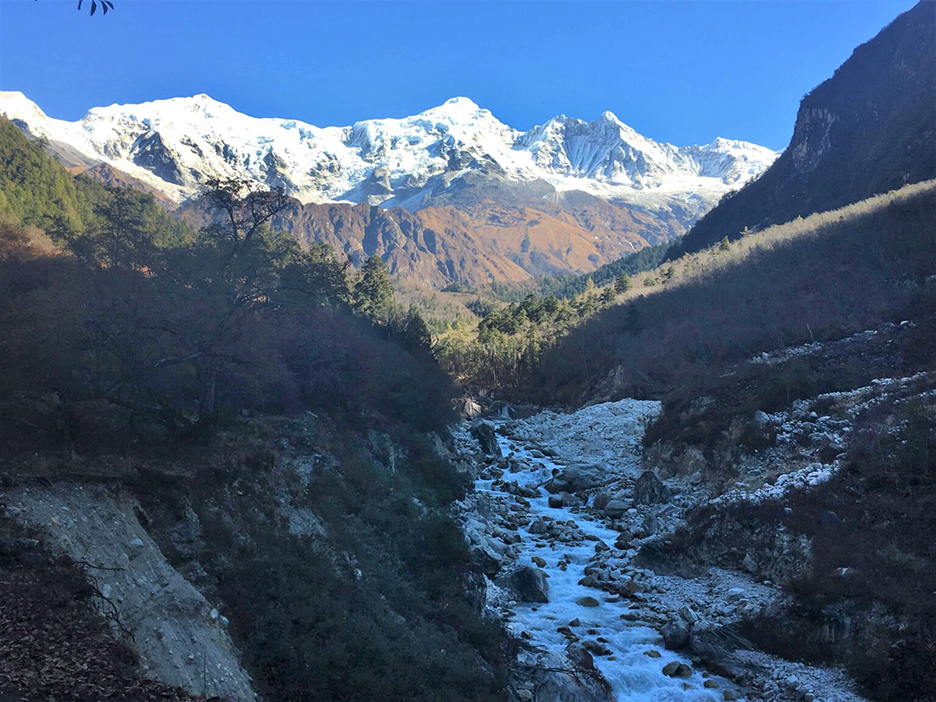
Details remain sketchy, but the lake's location suggests that the slide didn't fall down the mountain's normal route but down its south or southeast flanks. The only expedition planned on Manaslu this spring, a two-person team, received its climbing permit just two days ago. We have no information on them or their objective, but it's unlikely they had time to reach the mountain yet.
However, the Manaslu area in the Gorkha region is a popular spot for trekkers. They will need updated information on the water level of the lake and the Budhigandaki River.
The route through the Khumbu Icefall has finally opened. With this, dozens of heavily laden workers are heading up to build Camps 1 and 2. Yet the route through the Icefall is more treacherous than usual, and everyone is advised to spend as little time as possible there.
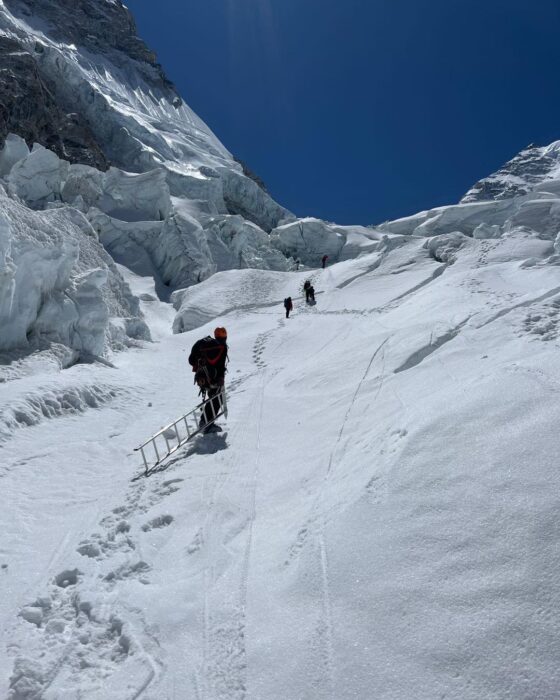
Ice Doctors Ang Sarki Sherpa, Dawa Nuru Sherpa, Pemba Tshering Sherpa, Ngima Tenzi Sherpa, Ngawang Chimmi Sherpa, Dawa Chirri Sherpa, Dawa Jangbu Sherpa, and Mingma Gyaljen have worked hard on the route. It took them three attempts to finish it, resulting in long delays.
Last winter was particularly dry, and the lack of snow has made the jumble of seracs in the Icefall especially difficult. The route requires a lot of ladder crossings. It also passes close to the West Shoulder, which bristles with seracs, increasing the overall danger.
The Ice Doctors will monitor the route daily and take action as soon as they notice any changes in the ice above them. Still, they are asking that everyone take extra precautions:
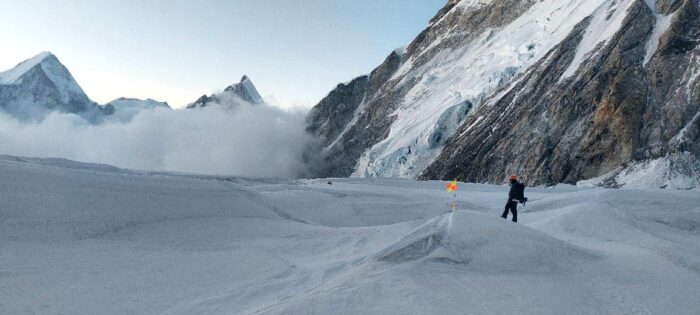
Tempting airlifts
This year, sherpas will fix routes on Everest and Lhotse as usual, but also on Nuptse. Madison Mountaineering has a commercial group on the mountain. For the time being, they will be alone on the 7,861m peak.
Meanwhile, Asian Trekking will attempt Pumori, for an FKT attempt by American ultrarunners Tyler Andrews and Chris Fisher, and for normal climbers.
Climbers unaffected
Garrett Madison told ExplorersWeb that the delays are not a problem for most of his clients: "We start a little later than most teams, so the delay doesn’t affect us," he said.
Other teams have used the time to practice their ice climbing skills around the Khumbu Glacier or to acclimatize on trekking peaks nearby. Commercial teams will minimize the number of times their clients go through the Icefall. If they will breathe bottled oxygen from Camp 2, they may only need to go across twice -- once for a first rotation to Camp 2 and the second time for the final summit push.
Before that first foray up the Icefall, most teams are celebrating their puja ceremonies:
No-O2 climbers
The delay is more of a problem for the high-altitude workers and for those intending to summit without supplementary O2. They'll need several rotations up and down the mountain if they also want to climb without personal sherpa support and pitch their own camps.
Among these are Hugo Ayaviri of Bolivia, who plans to go to Camp 2 next week, Valery Babanov of Russia, Frank Loke of Norway, Tunc Findik of Turkey, and Norrdine Nouar of Germany.
The 36-year-old Nouar summited Annapurna without supplementary oxygen last weekend.
Nouar usually climbs quietly on his own. He is experienced in several ranges, from the Alps to the Caucasus. Last year, he summited his first 8,000m peak, Lhotse, without supplementary O2. The Himalayan Database confirms that he was the only climber who summited Lhotse without bottled oxygen last year.
"From the first, I was determined not to use supplementary oxygen because for me, that means changing the mountain. I don't even carry emergency O2," he said.
Nouar understands that Everest without oxygen is no longer the goal of a lifetime but simply part of a learning process that may eventually allow him to progress to alpine-style ascents on 8,000'ers. On Everest, he will climb as independently as possible, using the fixed ropes but carrying his own tent and gear.
EBC clinic already in full service
The Icefall has just opened and climbers have not yet begun their rotations, but the crew at the Everest ER clinic has been working at full throttle since they arrived.
"We have already treated more than 100 patients in 10-11 days," Dr. Nishant Joshi told ExplorersWeb. "Almost all of them have been people who work tirelessly to make expeditions possible."
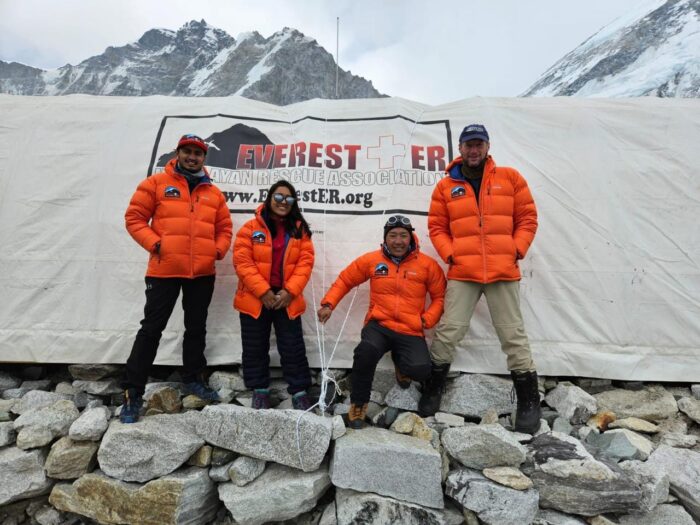
A small number of climbers summited Annapurna yesterday, including two women without supplementary oxygen -- Allie Pepper of Australia and Flor Cuenca of Peru.
Mikel (Mingtemba) Sherpa and Ngima Wangdak Sherpa assisted Pepper, while Cuenca summited her 10th 8,000'er on her own.
Pepper's descent raised concerns when after the 16-hour climb from Camp 4 at 7,000m to the summit, her group stopped at Camp 4 for the night on the way down. This was a long time at high altitude for someone without bottled oxygen. It also meant a late descent through the avalanche-prone area from Camp 3 to Camp 2.
Yet Pepper's tracker showed her going down throughout the day. She reached Base Camp at around 6 pm Nepal time today.
Flor's 10th no-O2
Flor Cuenca, flying under the radar as she often does, summited yesterday too, according to outfitter Seven Summit Treks. When ExplorersWeb spoke to her before the climbing season, she was still looking for funds to afford a return to Nepal.
She has not yet shared details about this latest climb, but on her previous nine 8,000m peaks, she followed the same spartan style: no oxygen or sherpa support, and she carries her tent and supplies up and down the mountain. She uses the outfitters' logistics only until Base Camp.
Climbers in a rush
Domi Trastoy of Andorra also summited with supplementary oxygen from 7,400m. Back in Base Camp, he wrote that Annapurna was the toughest mountain he had ever climbed and Everest was "a walk in the park" by comparison.
David Nosas of Spain turned around at 7,500m. Nelly Attar, climbing with Madison Mountaineering, also turned around without reaching the summit. They are all back in Base Camp.
Trastoy and Nosas mentioned they had launched a summit push knowing their acclimatization was insufficient (they had been on the mountain for nine days) but had no choice other than to try or go home.
As the Alpymon blog noted: "In these hurried times, climbers must go for the summit at the first opportunity because [the outfitters] quickly dismantle the camps to go to another mountain."
Shisha Pangma could be one of the busiest 8,000'ers this season...if climbers are actually allowed into Tibet. Nearly 50 Nepalese and their foreign clients are currently waiting in Nepal for the go-ahead from the China-Tibet Mountaineering Association (CMTA). But the paperwork remains unresolved.
Meanwhile, the new rules in China that require previous experience before attempting Everest and the mandatory use of oxygen could spoil some members' plans.
Permits delayed
So far, two teams have confirmed Shisha Pangma expeditions: Climbalaya and Seven Summit Treks. The two separate teams will share the rope fixing, a Climbalaya spokesperson told ExplorersWeb.
He also confirmed that the permits and Tibetan visas will take longer to process. Meanwhile, their group is limbering up by trekking in Langtang. Seven Summit Treks is doing the same thing.
Climbalaya has a small team of four clients, two from India, one from the U.S., and well-known Nepalese climber Dawa Yangzum Sherpa. She will head to Shisha Pangma after climbing Jugal I and II on the expedition led by Um Hong-gil of Korea. If she summits the Tibetan peak, Dawa Yangzum will become the first Nepalese woman to complete the 14x8000'ers.
Record seekers
In contrast to Climbalaya's modest group size, Seven Summit Treks has a huge team of 14x8,000m hopefuls. Many of them have national records at stake, including Adriana Brownlee of the UK, Uta Ibrahimi of Albania-Kosovo, Naoko Watanabe of Japan, Grace Tseng of Taiwan, Moeses Fiamoncini of Brazil, Afsaneh Hesami Fard of Iran, Arjun Vajpai of India, Adrian Laza of Romania, He Jing of China, Mario Vielmo of Italy, Shehroze Kashif of Pakistan, and Csaba Varga of Hungary.
Among the Nepalese bound for Shisha Pangma, Sanu Sherpa will, as usual, support Naoko Watanabe. Once they finish with Annapurna, SST owner Chhang Dawa Sherpa, guide Pasang Nurbu, and the young Nima Rinji are expected as well.
Here's a video of Arjun Vajpai with some of the team before leaving on the Langtang trek:
The team comprises at least 25 members. For some of them, Shisha Pangma is the last of their 14 peaks.
The race for records ended in tragedy last autumn. On Oct. 7, 2023, most of the climbers now on this spring's Shisha Pangma expedition reached Base Camp only to discover that tragedy had aborted the season. Two separate avalanches killed Gina Rudzilo and Anna Gutu, competing to become the first American woman to complete all the 8,000'ers. Their sherpa guides, Tenjen Lama and Mingmar Sherpa, perished with them. The CTMA then closed the mountain for the year.
Kristin Harila will also travel to Shisha Pangma, although it is not clear whether she still intends to try and find the bodies of Tenjen Lama and Gina Marie Ruzidlo. There is also no further news about the second recovery mission led by Nirmal Purja. He announced some weeks ago that he had obtained permission to retrieve the remains of his 2023 client, Anna Gutu, and her sherpa guide from Camp 2.
Silence about oxygen
Finally, there remains uncertainty about whether going without supplementary oxygen will be allowed. Several climbers want to climb without bottled gas, but the CTMA has insisted that everyone use oxygen on its 8,000ers this year.
Climbalaya confirms that its entire team will conform to the new regulations. Seven Summit Treks has made no comments on the matter, and those team members who usually climb without oxygen are likewise staying silent. They will have to choose between losing the no-O2 category on their accomplishments or gaming the regulations somehow.
The rope-fixing team reached the top of Annapurna around noon today, and clients followed shortly after. It was a long summit day. The sherpas fixed ropes as they went, while other climbers and their supporting guides followed closely.
This time, expedition leader Chhang Dawa Sherpa of Seven Summit Treks was part of the summit team, accompanying his nephew Nima Rinji. It was the 11th 8,000'er for the 17-year-old Rinji. He reportedly went without supplementary oxygen.
They climbed with Pasang Nurbu Sherpa, Mingtemba Sherpa (one of the guides supporting Kristin Harila of Norway last year), and Ngima Tashi Sherpa, who helped with the rope fixing.
Three foreign clients completed the summit list: Klara Kolouchova of the Czech Republic, Iryna Karagan of Ukraine, and Samiur Rashid of the UK. Their Nepalese guides were Pasang Sherpa, Pemba Thenduk Sherpa, and Lakpa Temba Sherpa.
Interestingly, the current summit push included another Ukrainian, Irina Galay. She climbed with Mingma Dorchi Sherpa of Pioneer Adventure and summited just after noon.
Weather conditions were good but windy.
Climbers on the move
The summiters are currently on their way down. They will try to take advantage of the colder temperatures after nightfall to descend the avalanche-prone sections between Camp 3 and Camp 2. After resting in Camp 2, they will proceed to Base Camp tomorrow. Check a video that Galay shot at the sections above Camp 2:
Meanwhile, Allie Pepper of Australia and Mikel Sherpa are progressing on their no-O2 climb. Yesterday, they reached Camp 3 after a 10-hour climb. Today, they intend to go to what they call "higher Camp 3." It is unclear whether this is the Camp 4 that other climbers mentioned.
Once there, they will decide whether to attempt the summit or retreat to Base Camp to rest and recover. The weather is expected to worsen from Saturday evening onward.
Surprisingly, Annapurna was not the first 8,000m peak summited this season. That distinction goes to Makalu. Eight sherpa rope fixers reached the top today at 4:40 pm Nepal time.
Sherpa teams have been working hard this week, hurrying to make the best out of the good weather on Nepal's highest peaks before snow comes at the end of the week.
On Makalu, the workers reached Base Camp last week and progressed quickly. As far as we know, no clients followed them, unlike Annapurna, where the first summits should happen tomorrow.
Not counting Everest, the Great Black (which is what Makalu means) is the 8,000'er with the most climbing permits issued this year: 45. That figure should increase, as many climbers tout Makalu as their second goal for the season.
Seven Summit Treks is in charge of fixing the ropes. It also has the biggest team on the mountain, with at least 35 sherpas and foreigners.
Makalu Lakpa in the lead
The leader of the rope-fixing team, Lakpa Sherpa, is known as Makalu Lakpa. He has just bagged his seventh Makalu summit and expects to top out again in the next few weeks with a client.
Lakpa first stepped atop Makalu in 2015. Since then, "the mountain has become more than just a challenge; it's a companion, a mentor, and a part of who I am," Lakpa wrote recently on Instagram. "Leading and fixing routes on Makalu isn't just a duty. It's a calling, a chance to pay homage to the mountain that has shaped my life in ways I could never have imagined."
Most climbers on Annapurna reached Camp 3 today, after many tough hours across the most complex sections of the route.
Tomorrow morning, they will move to Camp 4, the highest on Annapurna. There, they will rest before the final summit push begins that evening, Nivesh Karki of Pioneer Adventure told ExplorersWeb.
Seven Summit Treks, in charge of the rope fixing, have fixed up to 6,700m. Likely, the rope fixers will open the route during the summit push, and clients will follow right behind.
The rope-fixing team comprises Ngima Tashi Sherpa, Mingtemba Sherpa, and Pasang Nurbu. In addition to clients, the large SST team also includes expedition leader and company owner Chhang Dawa Sherpa, and his nephew Nima Rinjee.
At 18, Rinjee is trying to become the youngest 14x8,000m summiter. Annapurna will be his 11th summit. Dawa and Rinjee are climbing with Chhiring Bhote, Lhakpa Temba, and cameraman Manish Maharjan.
According to their reports on Instagram, a Madison Mountaineering team is following slightly behind. They set off for Camp 1 yesterday and should have moved to Camp 2 today.
Long day
Friday will be a long day. After breaking trail a long way across the summit area to the highest point, climbers will face a long descent. The key for them is to go down below the point where they need supplementary O2. Most importantly, they will also try to leave behind the avalanche-prone, difficult sections between Camp 3 and Camp 2. Ideally, they will spend the night back at Camp 2. Then, they'll proceed back to Base Camp on Saturday.
There is a certain amount of pressure to summit during this window. Forecasts report bad weather with heavy snow from Saturday afternoon until Tuesday. In addition, some of the climbers and supporting sherpas now on Annapurna intend to move to Dhaulagiri next.
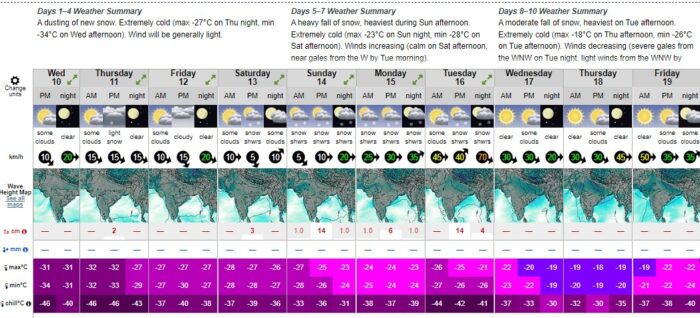
This spring on Annapurna, everyone is again doing their summit push at the same time. Climbers expected to reach Camp 3 today and top out on Thursday. But the weather is not cooperating.
Yesterday, the teams went from Base Camp all the way to Camp 2 (5,700m) in a long, intense day. The section between Camp 2 and Camp 3 will be the crux of the route. It features steep sections and exposed passages among seracs and crevasses, with a constant risk of avalanches from the peak's upper glacier until Camp 3, at approximately 6,600m.
Today, climbers remained in Camp 2 because of heavy snowfall. They told their home teams that they had to reconsider their options. It is not clear if anyone tried to push further or not.
There are no ropes beyond Camp 3, and staff hope to address that tomorrow. It is not clear whether they will set up a Camp 4 or not.
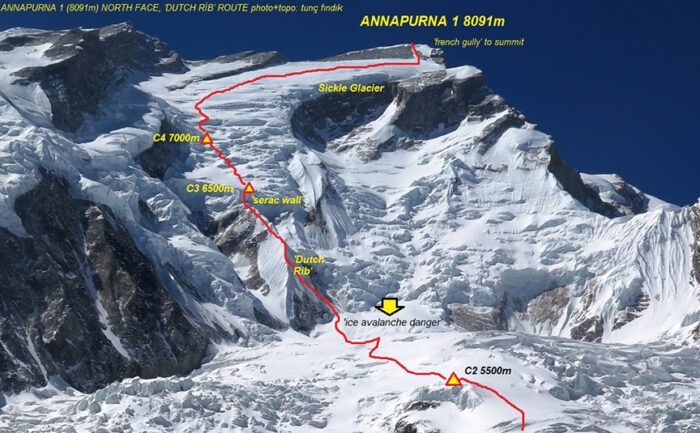
At least, crowds are smaller than in 2022-23, as there are fewer climbers on the mountain. The latest report by Nepal's Department of Tourism lists 25 foreign climbers, distributed over three teams.
Modern tactics
Most of the climbers currently pushing for the summit may have done one rotation up to Camp 2, since the ropes were fixed two weeks ago. Most then took a helicopter back to the comforts and the richer air of Pokhara, which is only 822m above sea level.
Everyone will rely on supplementary oxygen to some extent. Supplies should be available at Camp 3. Check out our previous feature on how climbing methods have changed on Annapurna.
No-O2 climbers
Some climbers on the mountain are determined to go without supplementary O2. They need therefore to acclimatize slowly and carefully. Domi Trastoy of Andorra, with partner David Nosas of Spain, arrived at Base Camp on Sunday. They have made their first acclimatization trip to Camp 1 and are back in Base Camp. They intend to go up again tomorrow, spend a night in Camp 2, and possibly tag Camp 3.
Alli Pepper's tracker locates her at Camp 2. Pepper had already made an acclimatization trip in Langtang with partner Mikel Sherpa. After reaching Annapurna Base Camp, the pair spent two nights in Camp 1, with a day trip to Camp 2. Then they both went to Pokhara for a week.
Rope fixing is progressing quickly on all of Nepal's peaks except Everest. This year, the Khumbu Icefall is challenging the expert sherpa team in charge of opening the route to Camp 1.
"There is a very tricky section just below Camp 1," Dawa Steven of Asian Trekking told ExplorersWeb. "There is a very big crevasse, and the Ice Doctors have been trying to find a way through for the last four or five days, without success."
Tsering Sherpa, the Icefall Doctors' Base Camp Manager, told Dawa Steven that it might take them another week to reach Camp 1.
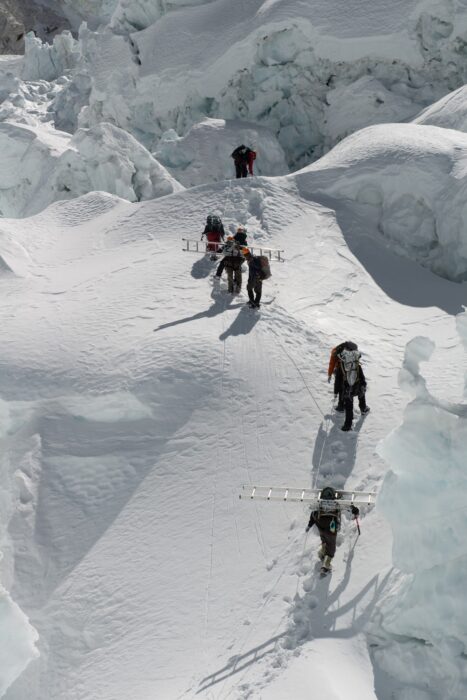
The team of Ice Doctors, arranged by the Sagarmatha Pollution Control Committee, trekked to Everest Base Camp at the beginning of March. There, they celebrated their puja and set to work.
Check the reel by Lakpa Dendi about 10 days ago:
Normally, they would have completed the route to Camp 1 by now, and dozens of follow-up staff members would already be setting up and supplying Camps 1 and 2.
The conditions are another reminder of the difficulties these Icefall Doctors endure while trying to find a safe route through the Khumbu icefall. It is also a warning for the hundreds who will venture through that obstacle course in the upcoming weeks: This year, it will be especially difficult.
Rope fixers summit Ama Dablam
Today, the sherpa rope-fixing team working for 8K Expeditions summited Ama Dablam, the most popular peak in Nepal excluding the 8,000'ers. Ashok Lama, Datuk Bhote, Wongda Sherpa, and Pasang Tenji Sherpa reached the top at 1:21pm today.
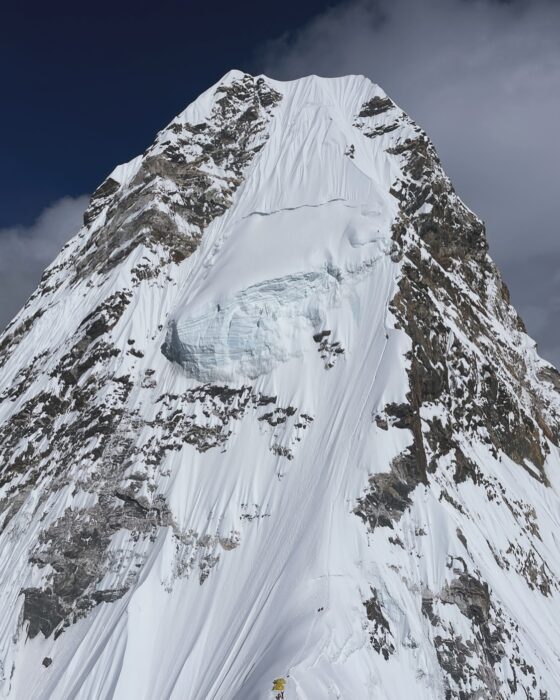
Teams started arriving at Annapurna Base Camp last week. Incredibly, summits could start before the end of this week.
Looking back 20 years, it is hard to believe we are speaking about the same mountain. The old Annapurna had fewer climbers, a very low success rate, and many tragedies. It also featured more adventure, and, surprise, two other mountain faces to consider attempting! For better or worse, the risk isn't the same today, either.
2024 - hurry, hurry
Seven Summit Treks, the company in charge of fixing the ropes on Annapurna, hasn't a moment to waste. The sooner they finish, the faster their personnel will helicopter to another mountain. Most will go to Dhaulagiri and Everest.
In the few days they have worked on Annapurna, the sherpa rope fixers have already reached Camp 2.
"The team is planning to fix the remaining section from Camp 2 to the summit [on April 2]," expedition leader Chhang Dawa Sherpa said.
According to Allie Pepper of Australia (one of the few commercial climbers who is using no supplementary oxygen), the weather is not good. But the rope team is at work, anyway.
Annapurna was the first 8,000m peak to be summited, in 1950 by Maurice Herzog and Louis Lachenal of France. However, by the turn of the millennium, Annapurna was the least attempted and least summited of all 14 8,000'ers.
1970s-2010s: The age of the bold
Yet expeditions went there nearly every year, although summit options were scarce, and climbers assumed a high risk. The goal with Annapurna was to make it down alive. It was a peak for seasoned, self-sufficient climbers only.
The 1970s and the 1980s filled a good number of pages in mountaineering history on Annapurna: from Chris Bonington and the UK team's first ascent of the South Face in 1970 (by Doug Haston and Don Whillans) to Messner and Kammerlander's 1985 climb of the Northwest Face for the first time (Guinness World Record controversy notwithstanding). In 1987, there was the first winter ascent by Jerzy Kukuczka and Artur Hajzer.
Even after these firsts, climbers kept going to Annapurna for what most considered their ultimate challenge. Some sought new, high-difficulty routes on the mighty South Face or the endless East Ridge route. A handful tried to repeat Messner's 1986 success on the Northwest Face.
Others gambled with the avalanche-prone north side, via either the classic French or German routes. Because of its danger, the first 14x8,000m collectors usually left Annapurna till last. Some excellent climbers lost their lives there, such as Alex MacIntyre, Inaki Ochoa de Olza, Young-Seok Park, and Anatoli Boukreev.
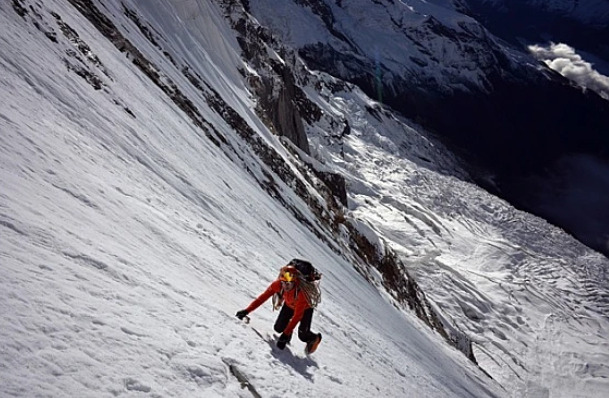
2015 - Changing trends
Things started to change in the 2010s. Until then, ascents with supplementary oxygen were extremely rare. Around 2010, some climbers from India, China, and a few working sherpas began to do oxygen-assisted climbs.
Then in 2015, the tide suddenly turned. Climbers on oxygen equaled and then surpassed those without. The number of Nepalese climbers also grew remarkably. Interestingly, the name Seven Summit Treks appears for the first time in The Himalayan Database's Annapurna archives, although company founders Chhang Dawa Sherpa and Mingma Sherpa had themselves climbed Annapurna some years earlier, in 2010 and 2011. The other founder, Tashi Lakpa Sherpa, has not yet done so.
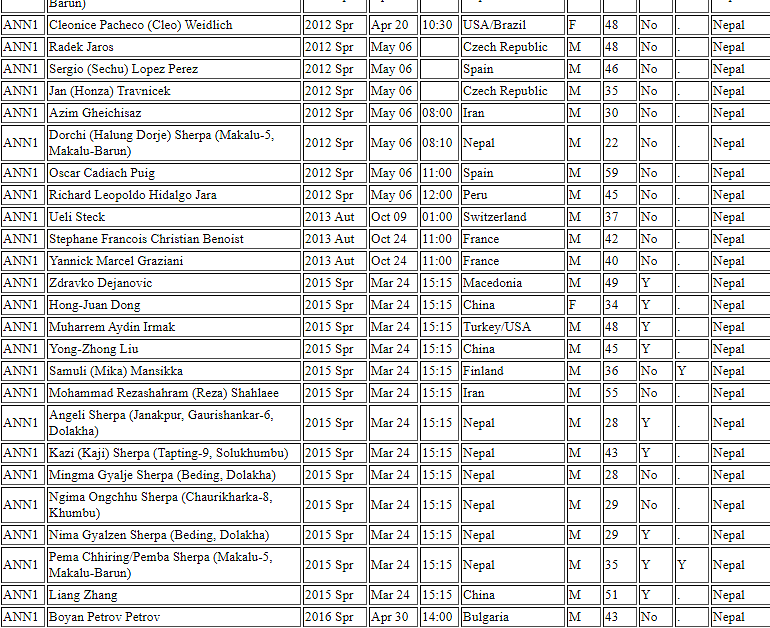
From 2015 to 2023, only five expeditions attempted routes other than the normal North Face. None of them were successful. In the last decade, only Adam Bielecki, with various companions, has kept trying a different goal: a new route on the NW Face. On his fourth attempt in 2023 with Pawel Haldas, he ended up saving the life of Anurag Maloo of India on the normal route. This spring, Bielecki is not going to Nepal.
The most dangerous peak switches back to Pakistan
According to the statistics of The Himalayan Database, Annapurna has a total of 476 summits and 73 deaths. Given that the convention for calculating relative risk on 8,000m peaks is done by dividing the number of summits by the number of deaths, Annapurna is no longer the most dangerous 8,000'er. That dubious honor goes back to the original Killer Mountain, Nanga Parbat, according to statistics compiled by Rodrigo Granzotto of Brazil. (The Himalayan Database does not register records from Pakistan.)
Does that mean that Annapurna is suddenly less dangerous? Not exactly. The normal route involves a serious risk of avalanches, especially between Camp 2 and Camp 3. There, pieces of serac fall from the notorious ice barrier on the upper sections of the mountain.
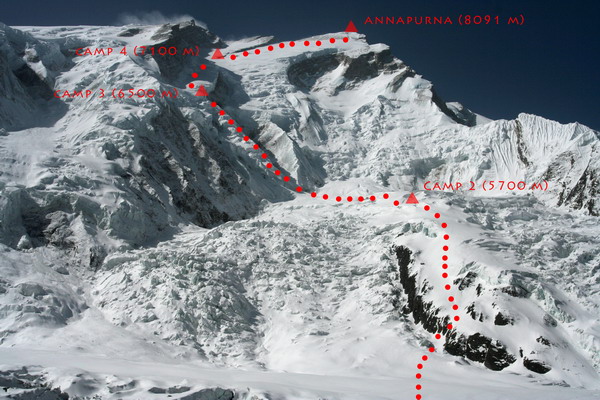
Why are climbers safer now?
The key change today is the vastly greater number of seasonal summits. In the entire 20th century, since its first ascent in 1950, 110 people summited Annapurna. That's one less than the number of summits registered in the last two years alone! (There were 111 summits in 2022-2023). The summit waves of recent years have skewed the statistics. But that's not all.
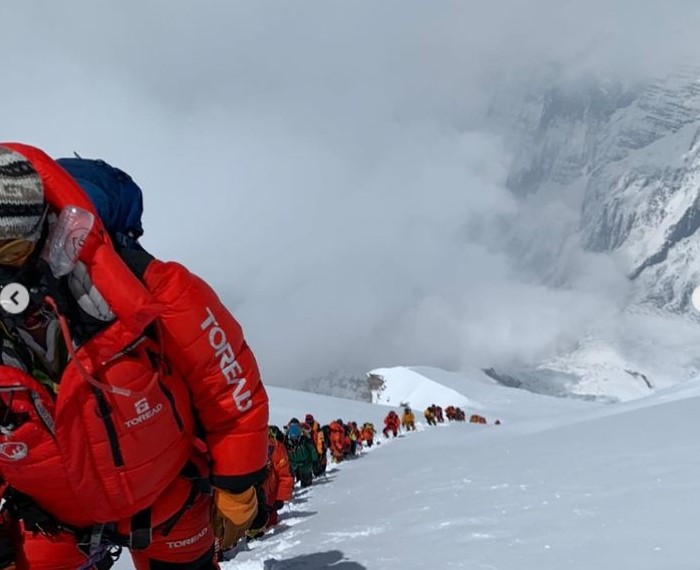
In addition, scaled-up expedition logistics, with fixed ropes, limitless use of oxygen, and a huge staff of rope fixers and supporting sherpas have improved safety, because everyone spends less time on the mountain. Climbers jumaring up fixed ropes are much faster, and the oxygen allows them to summit with just one rotation -- or even none, in some cases.
The Nepalese guides know every millimeter of the route. They know the safest spots to set the lines and pitch the camps. Drones assess conditions on sections above the climbers, and helicopters have improved rescues. As seen in 2021, they may also resupply teams as high up as Camp 4.
The situation is not exclusive to Annapurna. Currently, the rope fixing on Dhaulagiri, led by the Pioneer Adventure team, is progressing at the same swift pace. Camp 2 is already awaiting clients. Whether we like it or not, the logistics worked out on Everest have been applied successfully to the rest of the 14 highest peaks.
Yet it would be unwise to underestimate any of these mountains, especially Annapurna. Every season still features rescues, some bordering on the miraculous. And people still die, as Noel Hannah did from illness on his way down the mountain last year. Zero risk is not an option on any mountain, least of all on the biggest ones.
Vadim Druelle of France had a close call at Annapurna Base Camp even before he could attempt the mountain without supplementary oxygen.
Druelle, 23, reported today that even before reaching Base Camp about a week ago, he had food poisoning. He was very weak when he pulled into camp but felt better the following day. He figured that he was on the road to recovery. Then things became complicated.
"I started coughing up a salmon-colored foam and the pulse oximeter was at 35."
He suddenly felt as if his body was giving up on him. He looked up "pulmonary edema" in a medical book and realized that the foam indicated that that's what he had, and it was very advanced.
Within minutes, he fled Base Camp. "It was clearly the instinct to survive," recalls Druelle.

"My brain had gone into a mode I had never experienced before," said the young French climber.
He took Dexamethasone and was able to get to a lower altitude. Druelle says that that 20km was the hardest effort of his life. When he reached Pokhara, doctors there examined him. They determined that he was, in fact, in the last stage of pulmonary edema.
His medical team back in Chamonix warned him not to return to altitude. He needs to convalesce back in France, and scaling Annapurna no-O2 will have to wait for next year.
Druelle is no stranger to a hypoxic environment. He has already summited Kangchenjunga, Manaslu (foresummit), and attempted Dhaulagiri I and Lhotse's South Face, all without supplementary oxygen.

The climbing season has started in the Himalaya, and the Icefall Doctors are already working on Everest's normal route. Dozens of other Nepalese sherpas are also working on other peaks. Soon, they will guide clients to summits, carry gear up and down mountains, and open routes while fixing ropes.
But these jobs are dangerous. Both the statistical data, via The Himalayan Database, and the individual stories of loss on Everest illuminate the dangers faced by sherpas each season.
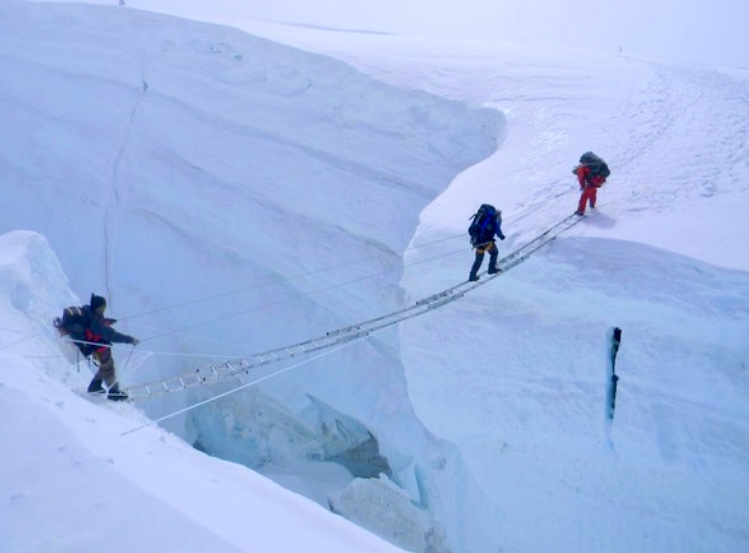
Not just statistics
Three years ago, I saved a photo of a Nepalese sherpa who died on Everest. I still have it, out of respect and appreciation. It is of Lhakpa Nuru, known by his nickname Tate Lhakpa, from Tate in the Khumbu district. He died on May 29, 2021, from acute mountain sickness at 5,350m. Tate Lhakpa was 42 years old.
There is another image that is difficult to forget. On April 14, 2022, 37-year-old sherpa Ngima Tenji was found dead in a sitting position close to an area known as the Football Field, in a relatively safe part of the Khumbu Icefall. He died at about 4 am while carrying loads to Camp 1. There was a photo published at the time of a helicopter recovering the body by longline.
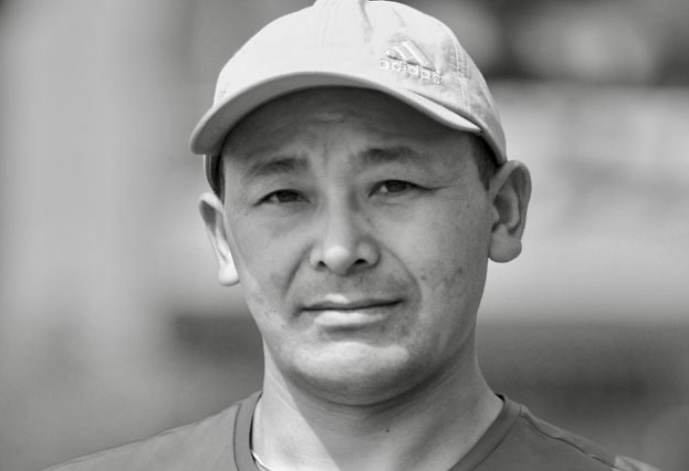
Last year, of the 18 people who died on Everest, one third were sherpas. The figure includes Dawa Chhiri, Lakpa Rita, and Pemba Tenzing Sherpa who died on April 12 at 5,700m in an icefall collapse. Their bodies could not be recovered.
A total of 332 people have died on Everest; 130 of them were working sherpas, more than a third of the total. If we examine the death reports from the last 10 years, between 2013 and 2023, 92 people died on Everest and 47 of them were sherpas.
Not a new phenomenon
The first registered sherpas died on Everest on June 7, 1922. An avalanche at 6,800m killed seven.
The Khumbu Icefall is the most dangerous part of the normal route. Located between Base Camp and Camp 1, hundreds cross it every year. But sherpas cross it more times than clients, every season, year in and year out. Between 1953 and 2023, almost 50 sherpas have died in the Icefall.
On April 5, 1970, six sherpas died in the Icefall from a serac collapse at 5,700m. Another sherpa died four days later in a lower section, at 5,525m.
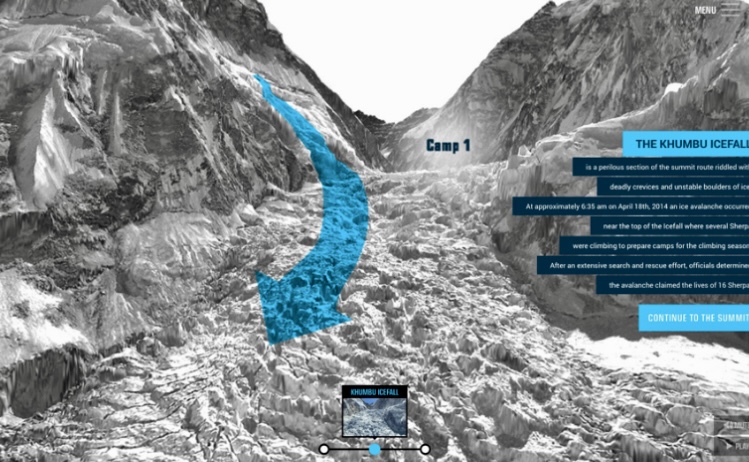
On April 18, 2014, at 6:45 am, a huge ice avalanche caused by a toppled serac killed 16 sherpas in the Icefall. A longline operation recovered 13 bodies. After the accident, the sherpa community threatened to strike because the Nepalese government did not offer enough compensation to the victim's families. Out of respect for their fellow sherpas, they did not continue working that season.
Accidents happen, but unfortunately, it is assumed that some sherpa workers may die every year, as if it were just part of the business. It shouldn’t be normal. Most sherpas now don't want their kids to remain in the business. It is simply too dangerous.
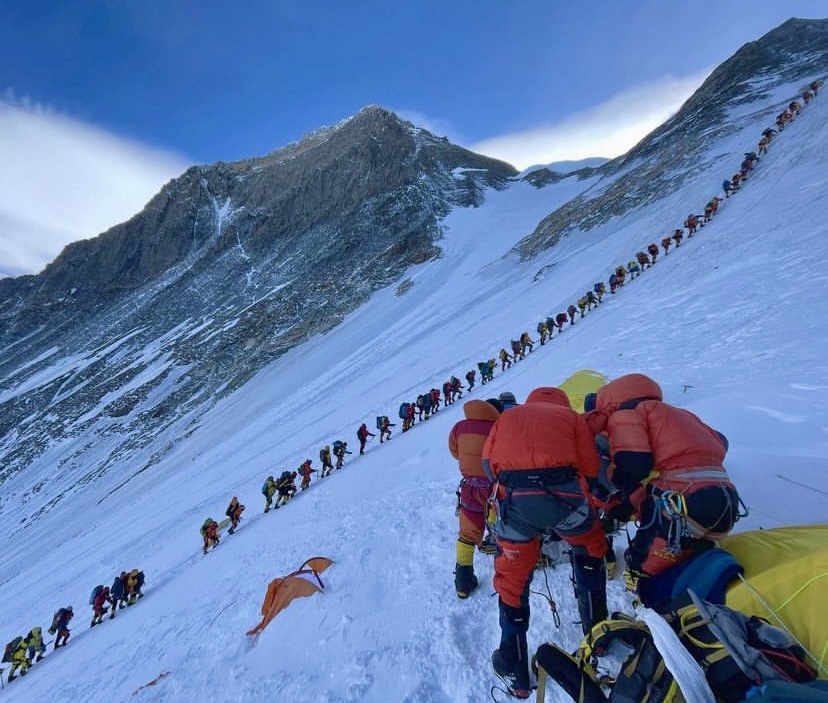
Roger Marshall’s take
In 1986, The New York Times Magazine published "One Man Vs. Everest," sharing the thoughts of the late British-Canadian climber Roger Marshall. In it, Marshall explained why he would never employ sherpas in his expeditions.
Marshall argued that sherpas have worked for Western expeditions for several decades, doing the dirty work, humping loads up the mountain to stock permanent camps used in siege climbing. Marshall and others pointed out that "the system is not only unsupporting, but unethical, and even inhumane."
Marshall highlighted that sherpas must make repeated trips along the most dangerous sections of the route, such as the Khumbu Icefall, which becomes a tomb for countless sherpas. "Having seen all the sherpas who are mutilated, the sherpanis who are without husbands, I would never employ a sherpa," Marshall said.
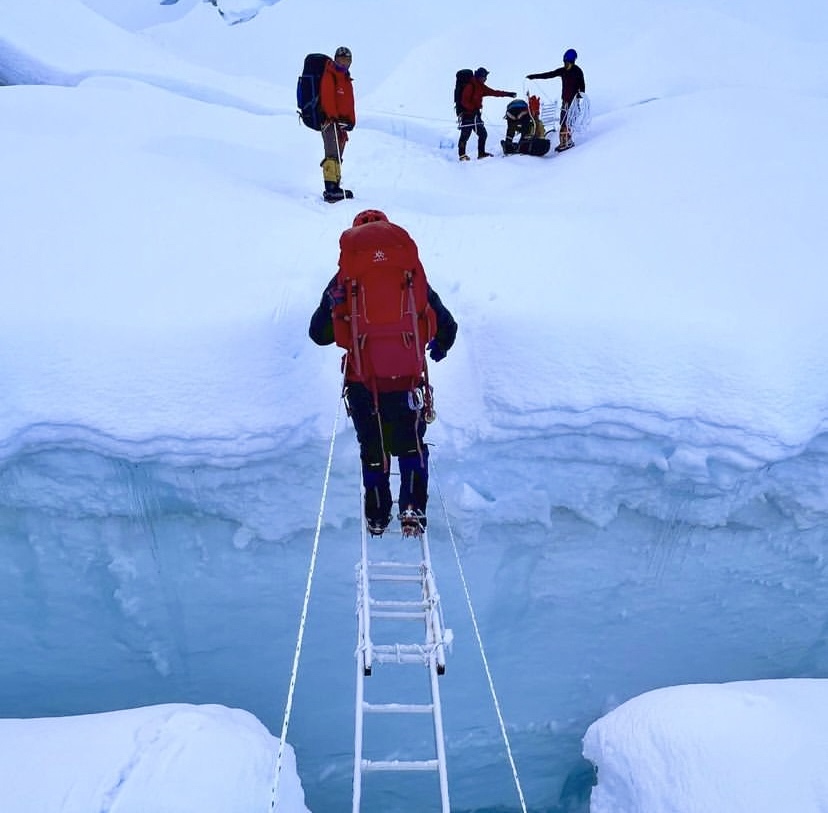
Marshall added that "if it weren’t for the money, sherpas would have no interest in climbing because they are hill farmers and traders by tradition, not adventurers. They’re making a living while we’re having a good time, and no amount of money is enough to justify what they’re asked to do."
Since that article, things have changed. Sherpas have become important businessmen and developed the climbing business, employing many more sherpas than in the 1980s.

As the climbing season starts in the Himalaya, we typically highlight those who attempt some of the 8,000m peaks without supplementary oxygen.
Nowadays, of course, sherpas fix ropes on the normal routes and set up the tents in each camp. Most climbers also enjoy one-on-one sherpa assistance during their climb. All this support counts almost as much as bottled oxygen. However, it’s still enlightening to see a short statistical summary of no-O2 ascents over the years.
On Everest, only a very low percentage of climbers forego bottled oxygen. But there are other, lower 8,000’ers in Nepal. Not too many years ago, the presence of bottled oxygen was a rarity.
Let's examine some data from The Himalayan Database over three time periods: up to 1999, from 2000 to 2023, and then specifically 2018 to 2023. We'll consider three of the 8,000’ers: Dhaulagiri I, Annapurna I, and Makalu. But the trends on those peaks apply to the others too.

Dhaulagiri I
At 8,167m, Dhaulagiri I is the seventh-highest mountain in the world. Until the end of 2023, a total of 669 people ascended Dhaulagiri I, including 392 without supplementary oxygen. Until 1999, a total of 299 climbers summited, 231 of them without O2.
Between 2000 and 2023, 370 people summited, 161 without bottled oxygen. Between 2018 and 2023, of the 123 people who summited Dhaulagiri I, only 22 did so without bottled oxygen. You can see where the trend is going.
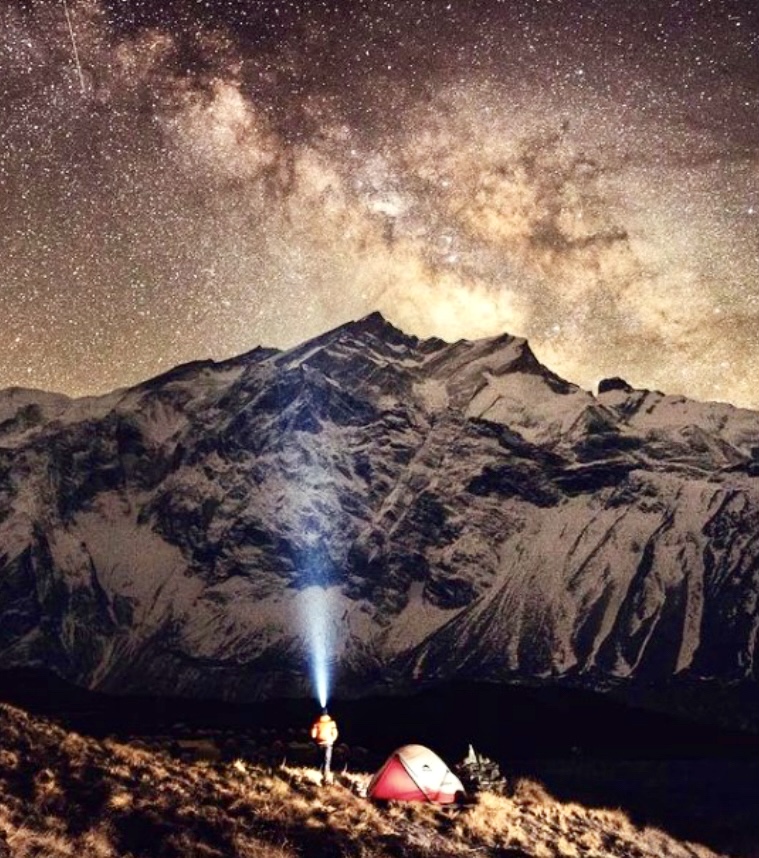
Annapurna I
Another 8,000m mountain where the use of bottled oxygen was rare in the past, 8,091m Annapurna I is the tenth highest peak in the world. The Himalayan Database has registered 476 successful ascents, 228 without bottled oxygen.
Until 1999, of the 107 total summits, 96 were done without O2. Between 2000 and 2023, there were 367 summiters, and 130 of them did not use bottled oxygen. But from 2018 to 2023, of the 215 successful climbers, only 19 did not use O2.
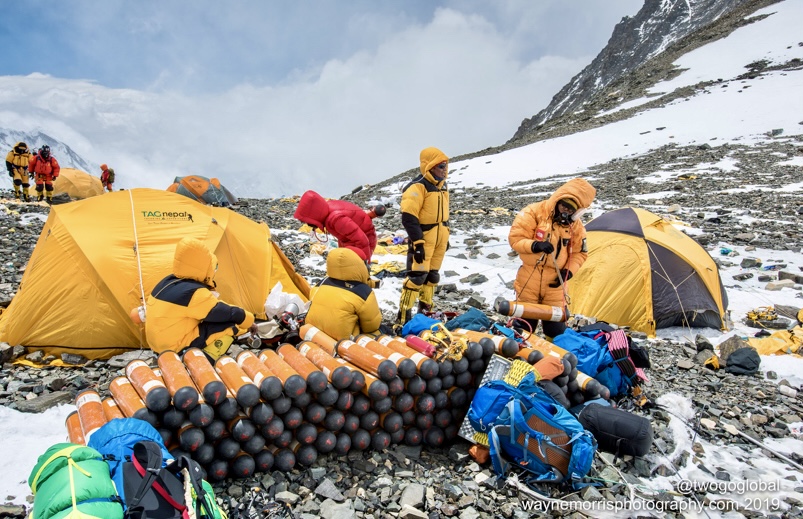
Makalu
Makalu (8,485m), the fifth highest peak in the world, has been climbed by 718 people, including 254 no-O2. Until 1999, of the 156 summiters, 96 did not use oxygen.
Between 2000 and 2023, of 562 summiters, 158 went without O2. Between 2018 and 2023, 254 climbers topped out on Makalu, but only 19 made it without supplementary oxygen.
Note that these statistics may include a few small errors, because some climbers who did not ascend without oxygen may be credited with having done so. Their outfitter could have made a mistake in submitting the report or doubts may exist regarding the veracity of someone’s no-O2 climb.
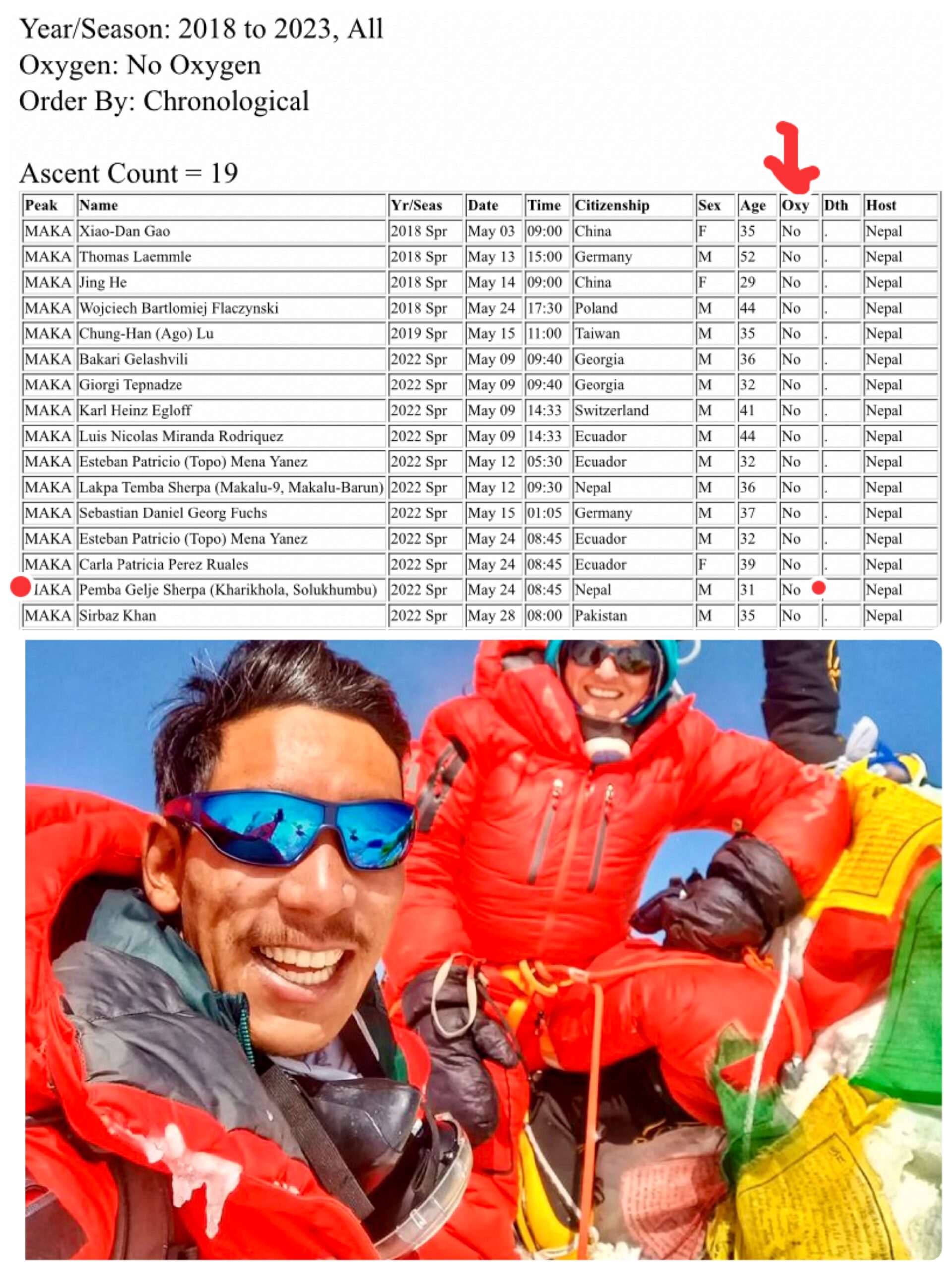
So far, only two teams are definitely heading to Shisha Pangma. Others await and hope but have yet to receive their permits. Several climbers hope to complete their 14x8,000m list on Shisha Pangma.
Others have revealed -- but not detailed -- plans to retrieve the bodies of the four climbers killed in avalanches last fall, adding to the general uncertainty.
Veteran guide Mingma G will likely not be there. That may end his long-time dream of becoming the first Nepalese to summit all 14 8,000'ers without supplementary oxygen.
Season supposedly on
Climbalaya's expedition to Shisha Pangma runs between April 9 and May 19. The company has close contacts with the China-Tibet Mountaineering Association (CMTA), which grants the permits.
"We are expecting to cross the border around the second week of April," a spokesperson told ExplorersWeb.
Climbalaya often pairs up with Seven Summit Treks, but this time, "we will share the workload on the mountain, like rope fixing, but have separate teams."

Several familiar names from recent years hope to finish their 14x8,000m list on Shisha Pangma. Among them Naoko Watanabe of Japan, Grace Tseng of Taiwan (though her Manaslu summit remains questionable), and Mario Vielmo of Italy in the no-O2 category.
Vielmo told ExplorersWeb that Seven Summit Treks has confirmed the rather pricey trip. Although 8,027m Shisha Pangma is the lowest of the 14 big peaks, a commercial climb costs $25,000 to $35,000.
Meanwhile, some companies are on the verge of giving up expeditions to Tibet because of the uncertainty with permits. Among them is Imagine Nepal. Company head Mingma G explained the situation to Explorersweb.
"We are still waiting," said the IFMGA guide. "If they issue the permits late in the season, I'll have no chance to go. I have a big Everest team climbing from the Nepal side and I have to lead them."
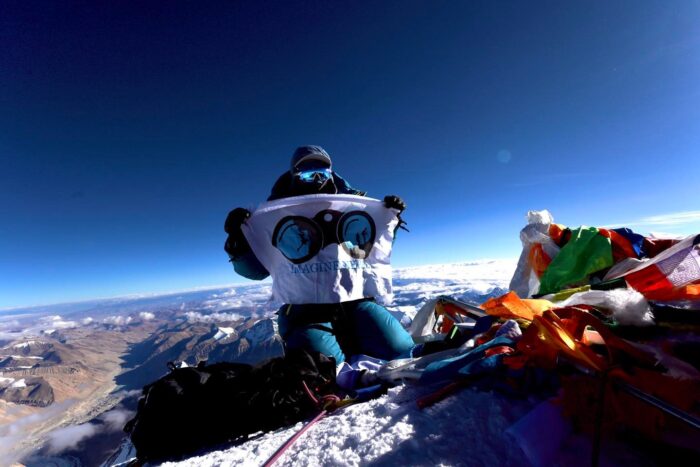
Bottled oxygen compulsory in Tibet
Safety is another reason to go to Shisha Pangma in spring. "Usually Shishapangma is good in April, but as the season advances, there are more avalanches and the crevasses are hidden," Mingma G explained.
Mingma G has only Shisha Pangma left to become the first Nepali to summit all 14 8,000'ers without supplementary oxygen. But even if his group receives its permit in time, Mingma G couldn't climb no-O2. The CMTA has made the use of bottled oxygen compulsory for all three Tibetan 8,000ers (Shisha Pangma, Cho Oyu, and Everest North Side). Mario Vielmo, the Italian no-O2 climber, faces the same barrier.
"We Sherpas have been climbing and guiding for so long, but none of us has completed that challenge, so I thought I could represent my collectivity," Mingma G explained. "Otherwise, I don’t have any interest in climbing 8,000m without oxygen, especially while leading a team."
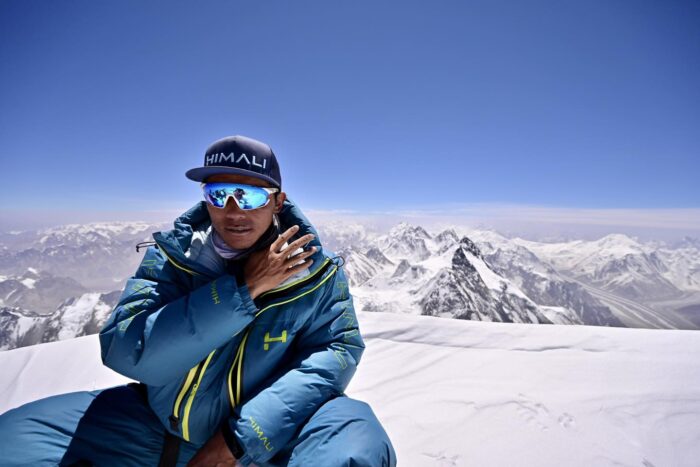
The scars of altitude
Mingma G adds: "The more time we spend at 8,000m, the more damage we get in our brain cells." He admits that he is already suffering from memory loss. "We are not like our foreign friends, who do one or two expeditions in a year, then get enough time to recover. We are mostly on mountains and we keep damaging our bodies without enough time to recover."

Mingma G also denies being in any kind of competition with Nirmal Purja to become the first no-O2 Nepalese. (Purja was born in Nepal but has a UK passport and is not a Sherpa.)
Two recovery missions?
Two expeditions have been announced to recover the bodies from last fall's fatal Shisha Pangma avalanches. Two women and their supporting sherpas died during a reckless race to become the first U.S. female to complete the 14x8,000'ers.
Anna Gutu and Mingmar Sherpa were killed, but not buried, in the first of the two avalanches that day. The bodies were later taken to a tent in Camp 2. Strangely, they are still there.
Two weeks ago, the expedition leader (who was below the climbers when the fatal incident took place) announced on X an upcoming recovery mission.
The mission is on.
It’s been over five months since we lost our dear Anna and Mingmar on Shishapangma.
In that time we have experienced immense grief but also reflected on precious memories we shared together and now so deeply treasure. Now I am heading back with my team to… pic.twitter.com/b9NzDZbnQ5
— Nirmal Purja MBE (@nimsdai) March 15, 2024
"With permission from the CTMA and TMA [Tibet Mountaineering Association], we are ready to go back to their known location at Camp 2 and bring them home to reunite them with their families and loved ones," the statement read. "The U.S. government, Nepalese Embassy in Beijing, and NMA [Nepal Mountaineering Association] have worked closely with the team to secure permits...We have recently been informed our application will be accepted. We will begin the repatriation in April."
There are no details about who will conduct the recovery. Elite Exped has not announced any commercial expeditions for spring.
Second project
As for the mission to recover the other two fatalities, Gina Marie Rudzidlo and Tenjen Lama, Kristin Harila has been trying to raise funds for a recovery mission. The idea is apparently to fly a helicopter over the route in the hope of locating the bodies thanks to the Recco reflectors the climbers wore.
However, the plan will hardly work if the avalanche swept the bodies deep into a crevasse, as witnesses have reported. There is also no confirmation about how a helicopter flight will be permitted in Tibet, where there is no aerial rescue service.
Harila's GoFundMe account has had no donations in the last month, and the total amount raised so far is 91,902 Norwegian Kr ($8,500) out of a proposed budget of 3,190,000 Kr (about $300,000).
Any list of almost-forgotten climbers who deserve to be remembered has to include French alpinist Nicolas Jaeger. Not only was he an outstanding mountaineer, but his disappearance on Lhotse Shar in 1980 was a real mystery.
Born in 1946, Nicolas Jaeger became a mountain guide in 1975, graduating as best in his class. He was also a doctor who specialized in high-altitude physiology.
Jaeger made more than 100 solo ascents in the Alps, with a particular focus on the Mont Blanc massif. These climbs included about 20 long, high-difficulty routes, including first and second ascents. In the Andes, he made eleven solo ascents, nine of them via new routes. In the late 1970s, he also did some new routes with partners.
The first cigarette on Everest's summit
On May 8, 1978, Peter Habeler and Reinhold Messner did the first no-O2 ascent of the highest mountain in the world.
In the autumn of the same year, a French expedition came to Mount Everest. Led by Pierre Mazeaud, the team included French, Austrian, and German climbers. Mazeaud, Jean Afanassieff, Kurt Diemberger, and Jaeger (the expedition's doctor) summited Everest with supplementary oxygen on Oct. 15. It was the first French ascent of Everest.
At the top, they removed their oxygen masks and spent 100 minutes at the summit. In classic Gallic style, Jaeger lit up an unfiltered Gitanes cigarette, possibly becoming the first person to smoke on top of the world. A rather peculiar person, Jaeger wanted to observe the effects of oxygen deprivation at 8,848m. He concluded that it wasn’t that difficult to sit there without an oxygen mask, but whenever he had to move, it was hard because of the hypoxia.
The next day, Jaeger and Afanassieff skied down the mountain from 8,200m to 6,500m in an hour. They continued from Camp 2 (6,500m) to Camp 1 (at 6,000m) in two hours. There, they stayed the night before descending down to Base Camp. At the time, it was a record height for a ski descent.
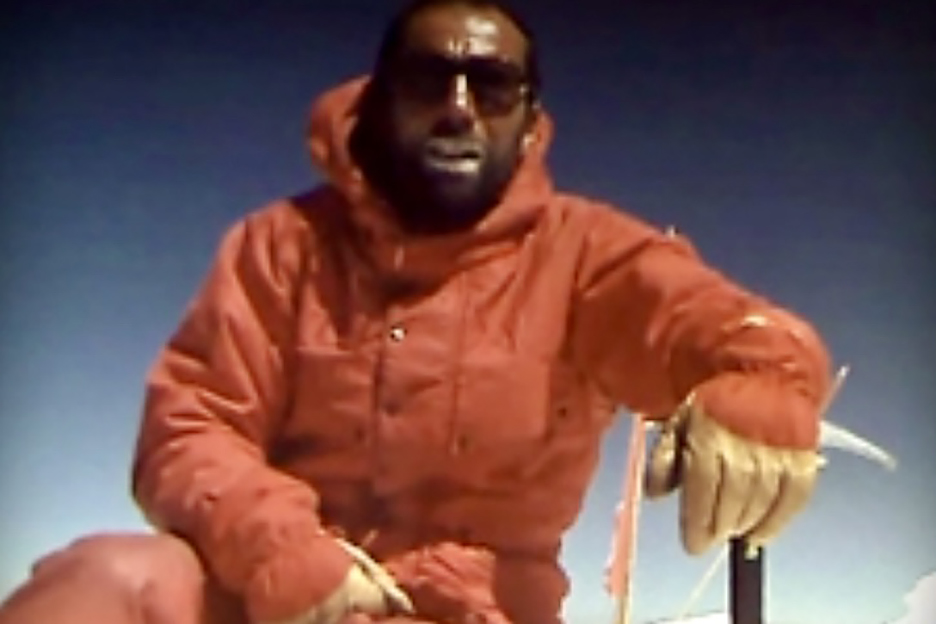
A heavy smoker confronts Nevado Huascaran
In 1979, Jaeger returned to the Andes and made some solo ascents as well as some excellent climbs with Brian Hall, Alan Rouse, and cameraman Philippe Charliat. He also decided to complete a solo survival experiment on Nevado Huascaran to study the body's response to extreme altitudes.
During a two-month stay at 6,700m, Jaeger smoked 70 packs of cigarettes. He had two tents. In one, he took medical measurements and tested his body. He wrote the book Carnets de la Solitude about his experience. At the time, many people regarded his experiment as crazy. They saw no reason to spend 60 days at high altitude. Jaeger was an outsider.

Alpinism's future 'big problem'
During his 1978 Everest ascent, Jaeger admired the South Face of Lhotse. From that moment, the face -- which Messner called a "problem for the year 2000" (in other words, the future’s biggest climbing challenge) -- became lodged in Jaeger's head.
By 1980, Jaeger was ready. According to the American Alpine Journal, his ambitious plan was to make the first ascent of the 3,050m South Face of Lhotse, supported by two friends. He would then climb the West Ridge of Everest alone, without bottled oxygen or sherpa support.
"So far, the major achievement in solo climbing is Messner’s Nanga Parbat in August 1978 by a new route," Jaeger said before his expedition. "The Lhotse Face is higher and more difficult."
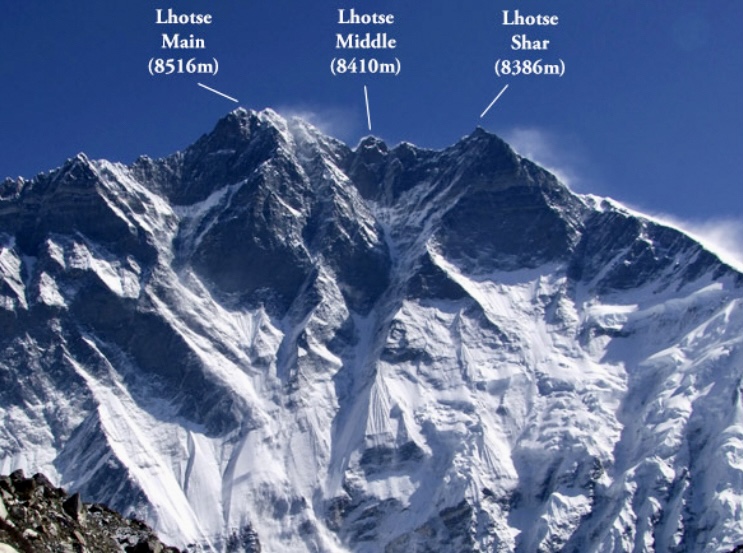
Accompanied by Nicolas Berardini and Brigitte Steinmann, Jaeger arrived in the Himalaya in the spring of 1980. For acclimatization, Berardini and Jaeger first attempted Ama Dablam’s West Face, reaching 300m below the summit.
Next, they went to Baruntse, which Berardini and Jaeger summited on April 7 via the North Face. The Himalayan Database marks both climbs as illegal. From there, Jaeger went to the South Face of Lhotse.

First attempt
On April 16, Jaeger first attempted the South Face direct. He made it to 6,500m but turned around because of avalanche danger. He returned to Base Camp on April 20. On his next attempt, he decided he would go further right on the South Face. That meant ascending via Lhotse Shar.
According to a Himalayan Database report, Jaeger told those in Base Camp that he wanted to attempt a huge traverse. From Lhotse Shar, he would go to Lhotse Main via the then-unclimbed Lhotse Middle, before descending by the Western Cwm. He would even try Everest solo.
The traverse was an extremely committed project with a very low possibility of success. However, Jaeger believed in his strength and was confident he could spend many days at high altitude.
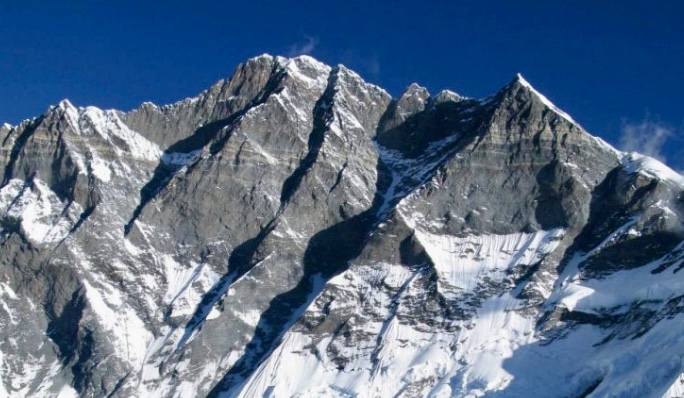
Lhotse Shar
Lhotse Shar (8,382m) is a subsidiary peak of 8,516m Lhotse. It can’t be considered an independent mountain, yet this east peak of Lhotse is difficult to climb and is one of the most dramatic subsidiary peaks in the world.
According to The Himalayan Database, an American-Austrian-Swiss party led by Norman Dyhrenfurth first scouted the peak in 1955. The first serious attempt on Lhotse Shar was in the spring of 1965, by Japanese alpinists from the Waseda University Alpine Club. Hisao Yoshikawa’s team attempted the southeast ridge but had to abandon their attempt at 8,150m because of an impassable gap.
Two members of an Austrian party led by Siegfried Aaberli made the first ascent of Lhotse Shar on May 12, 1970. Using bottled oxygen, Sepp Mayerl and Rolf Walter topped out via the southeast ridge.
Four climbers from Czechoslovakia did the first no-O2 ascent in 1984. Zoltan Demjan, Peter Bozik, Josef Rakoncaj, and Jaromir Stejskal reached the summit on May 20 (Demjan) and May 21 (the other three) by a new route via the south face.
To date, of the 36 teams that have attempted Lhotse Shar, only nine have succeeded, via four routes. Since the first ascent, 24 climbers have summited, including 13 without bottled oxygen.
A rare peak even today, Lhotse Shar was last ascended in 2007. Ten climbers have lost their lives on its slopes. Lhotse Shar’s death rate is quite high.
Jaeger disappears
After his Lhotse South Face attempt, Jaeger started up the southeast ridge of Lhotse Shar on April 25. Alone, he carried sufficient food for 8 to 15 days. Cameraman Bill Rosser filmed the ascent from below.
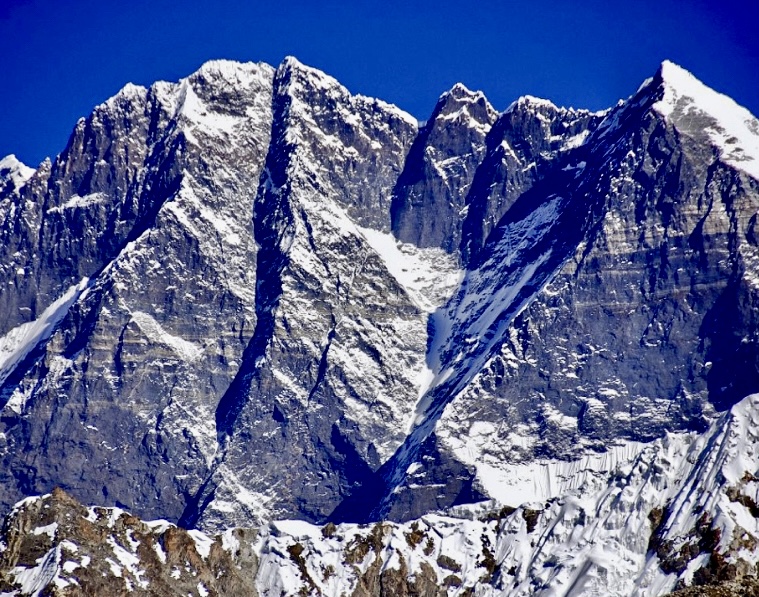
Well-acclimatized, Jaeger ascended relatively fast and bivouacked at about 8,000m on Lhotse Shar, Rosser observed through his telephoto lens. On April 27, Rosser spotted Jaeger at 8,200m climbing at amazing speed.
But the weather turned bad, and strong winds hit the mountain. Rosser did not see Jaeger again.
According to Edward Morgan, author of Lhotse South Face - The Wall of Legends, Berardini, Steinmann, and the rest of the expedition had already moved to Everest Base Camp to wait for Jaeger in case he succeeded in traversing Lhotse. But Jaeger never returned from the heights.
Jaeger had said that if he didn’t come back after 15 days, a search operation shouldn’t be carried out as it would mean he was dead. Bad weather persisted for six days, and a helicopter search found no sign of him. Soon after, the search was stopped per his family’s wishes.
For most, this was the end of the story. Jaeger had disappeared and was never found. For 39 years, even Jaeger's family believed this was all the information they'd ever know about his final climb. But three years after Jaeger’s fatal 1980 expedition, there was a discovery that went under almost everyone's radar.
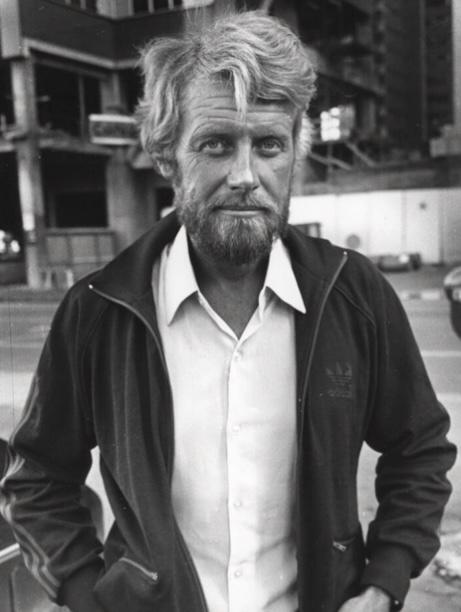
The Canadian clue
While researching the Tomo Cesen case in 2013-2014, mountaineering researcher Rodolphe Popier found a note in The Himalayan Database that mentioned the book Canadians on Everest: The Courageous Expedition of 1982.
The book, published in 2006 and written by Bruce Patterson, one of the Canadian climbers, told the story of the first successful Canadian ascent of Everest. The book mentions that climber Roger Marshall found Nicolas Jaeger's body in 1983 on Lhotse Shar. The body was in a tent less than 500m below the summit.
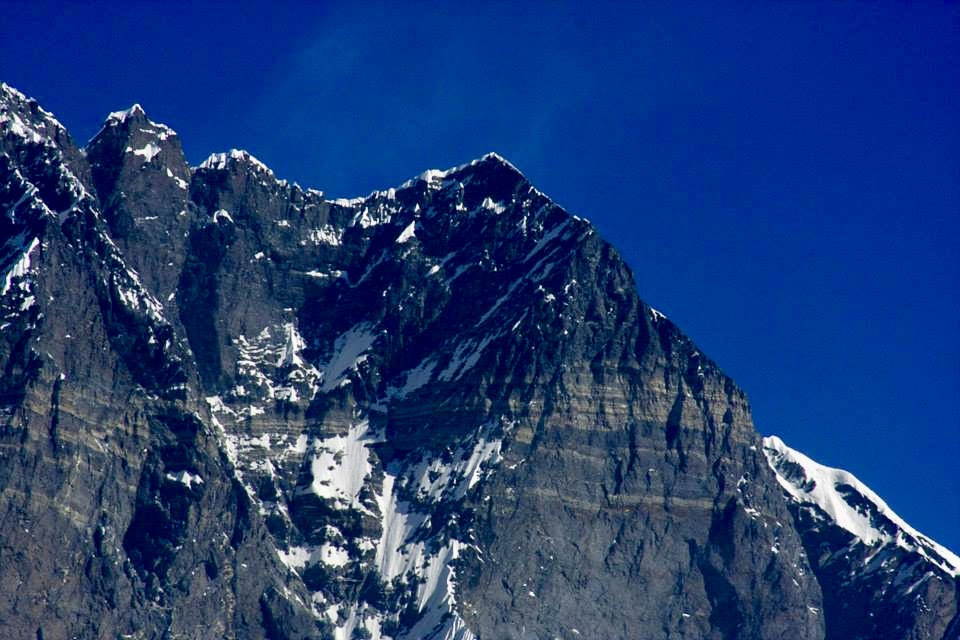
When we asked Popier about this, he said that he asked mountaineering writer Bernadette McDonald for help finding the book. He then checked if the description of the body matched Jaeger.
News of Marshall’s discovery of Jaeger's body didn't make it to France at the time. The internet was still in its early years, and climbing journals weren’t yet digitized. Popier also points out that only a few bilingual readers from Europe read the American Alpine Journal, and alpine communities in each country were still very inward-looking. So news of the discovery went under most people's radar.
In 2019, Helene Jaeger-Defaix, Nicolas Jaeger's daughter, eventually heard about the whole story from a friend of Popier, Charlie Buffet.
More recently, writer Virginie Troussier wrote a book on Jaeger (L’homme qui vivait haut: La passion du Docteur Jaeger). Troussier talks about Marshall's discovery of the body. Edward Morgan also dug into the story for the second edition of the essential Lhotse South Face.
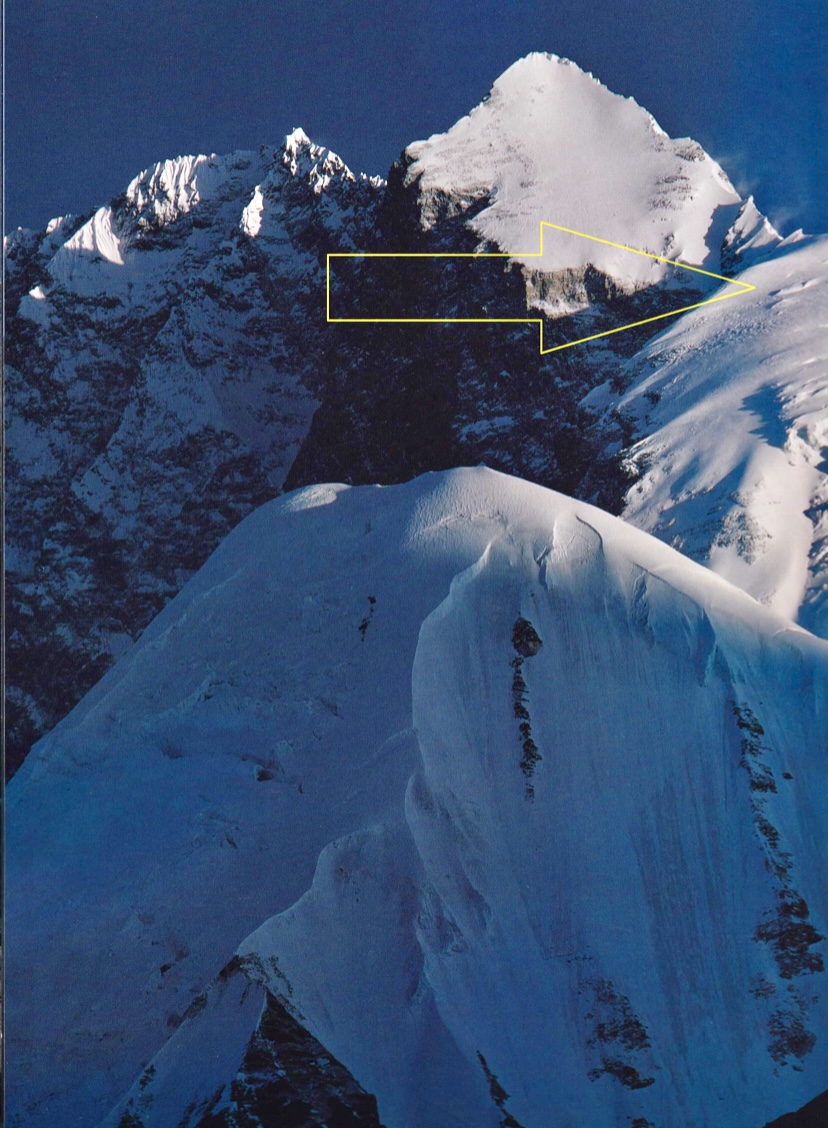
The tent and Jaeger’s body
Popier told ExplorersWeb that Roger Marshall talked about a yellow-blue tent where he found Jaeger’s body. The tent wasn’t Jaeger’s but belonged to a previous expedition, possibly the 1965 Japanese attempt. Alternatively, the tent could be from the 1970 first-ascent team or possibly the 1971 Korean team.
Cameraman Rossner said he spotted Jaeger for the last time at about 8,200m. According to Popier, after checking maps and photos of the upper ridge, there are wide slopes from 7,143m to 8,019m. He believes that the tent was somewhere close to that 8,019m point.
This means that Jaeger could have reached 8,200m, and then turned around to this improvised refuge at about 8,000m. Unfortunately, Marshall died on Everest in 1987 so the theory can't be confirmed.
Jeager's legacy is important for the history of mountaineering. As Gaston Rebuffat wrote in the Alpine Journal UK after Jaeger’s disappearance, Jaeger "was a passionate man, who was at the same time lucid and stable, having great experience of mountains and also of his strengths, a man looking to the future."
You can view some of the last footage of Jaeger here.
It's packing time in Kathmandu for the companies outfitting Everest climbs. They better have plenty of space to store oxygen bottles, ropes, and other hardware. This season may again break an attendance record.
The Himalayan Times already estimates 400 climbers, although we won't know the final figures until the end of the season.
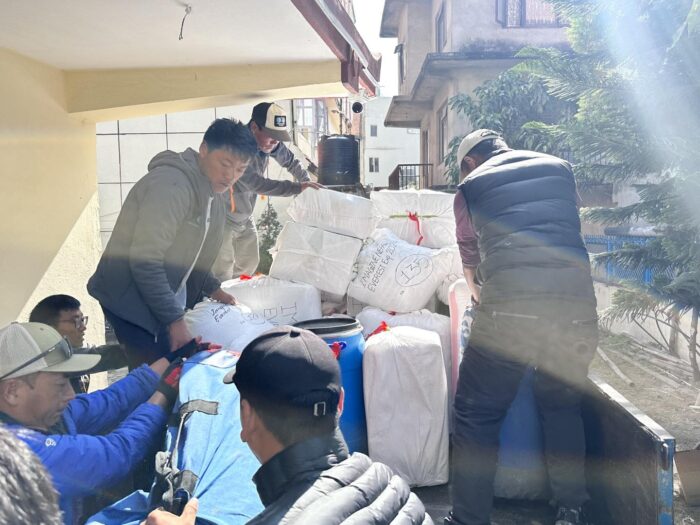
Seven Summit Treks will have the biggest team on Everest, with 65 climbers plus a staff that's even larger than last year, since they are fixing the ropes from Camp 2 to the summit. Other big outfitters report:
- 8K Expeditions: 45 signed climbers
- Furtenbach Adventures: 30
- Imagine Nepal: 35 clients, divided into three groups, according to The Himalayan Times.
The above figures are only for the Nepalese side of Everest. Furtenbach, for example, has another 18 signed up for the North Side.
High percentage
According to The Himalayan Database, Everest had a total of 656 summits in 2023. This includes 263 summits by foreign climbers and 393 by Nepalese staff. Such numbers lead to two conclusions:
First, the impressive percentage of success: Nepal's Department of Tourism granted 454 Everest climbing permits to foreigners, meaning that 58% reached the summit.
It is worth noting that The Himalayan Database has stopped interviewing commercial climbers. Instead, it reproduces the summit lists from Nepal's Ministry of Culture, Tourism, and Civil Aviation. Although there are a few fake summits on Nepal's peaks every year, the numbers accurately reflect expedition success.
The second conclusion concerns the increase of summits from local staff. Nepalese workers were responsible for 60 percent of Everest summits in 2023.
In addition, 16 Nepalese summited Everest twice last spring. Most were part of the rope-fixing team. Typically, they summited again some days later while guiding clients. Lakpa Sona Sherpa of Imagine Nepal even summited three times: on May 13 while fixing ropes and then on May 17 and May 23, accompanying Chinese clients.
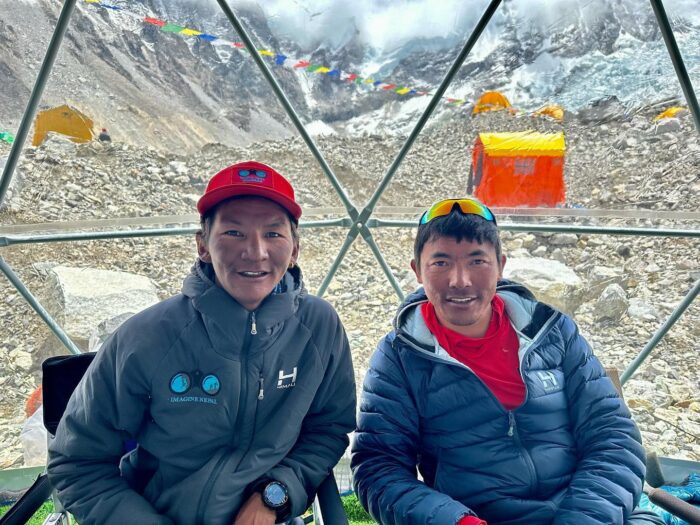
Chinese side finally opens
In 2023, The Himalayan Database reported no known Everest ascents from the Chinese side. Indeed, Everest has been closed to foreigners since the COVID-19 pandemic of 2020.
Last spring, some expeditions received permits for Shisha Pangma and Cho Oyu, but not Everest. One international team planned to ski down Everest's Hornbein Couloir during the post-monsoon season but became entangled in a bureaucratic mess that ended the expedition prematurely. If Chinese expeditions climbed Everest North Side last year, we have no information about them.
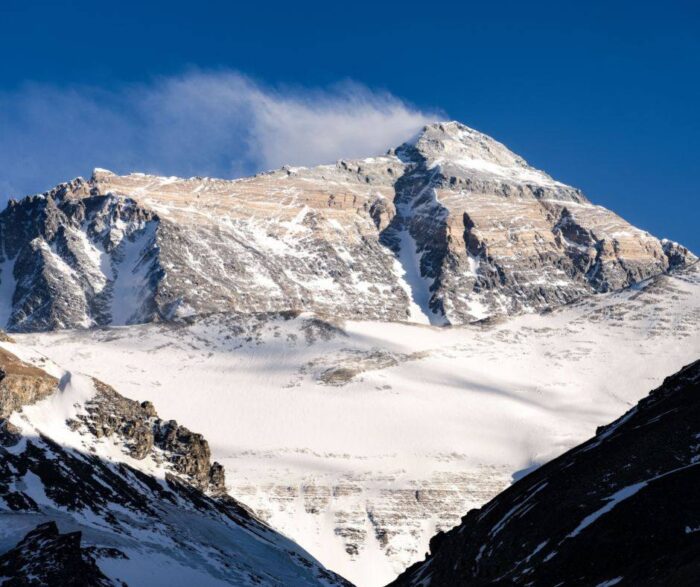
This year, the North Side of Everest is finally open to foreign teams, so the final summit figures will surely increase. The last time that side was open, in 2019, The Himalayan Database listed 216 summits from China.
Also, some clients who have done some other 8,000'er in the spring may decide at the last minute to use their acclimatization on Everest, further increasing the numbers.
No no-O2 this year?
Only three of all last year's Everest summits took place without supplementary O2. The three were Sajid Sadpara of Pakistan on May 14, Mateo Isaza of Colombia on May 15, and reportedly, Muhammad Hawari Hashim of Malaysia on May 18.
Unfortunately, Hashim never made it back. A sherpa supported him up to the top but on the way down, he allegedly left Hashim at Camp 4 and went back up to help another climber in trouble. Hashim, a 22-year-old deaf climber, was never seen again.
Another no-O2 fatality, Suhajda Szilard of Hungary, also climbed without personal sherpa support. He perished without reaching the summit.

So far, no one has announced plans to climb Everest without oxygen this spring.
It is worth noting that climbers intending a no-O2 Everest ascent may do so either self-sufficiently, with no sherpa support above Base Camp, or with the support of sherpa guides who carry the weight, do all the chores in higher camps, and bring spare oxygen systems in case the clients change their minds or need oxygen.
For climbers in Tibet, going without oxygen is no longer allowed. You also need guide support and previous experience on a 7,000m+ mountain.
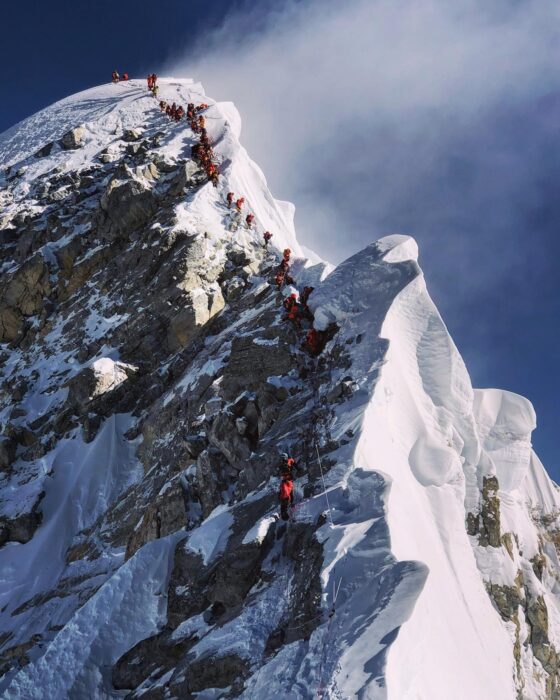
Weather in 2024?
Although it's soon to tell, meteorologist Michael Fagin explained in a recent article that El Niño (above normal ocean temperatures off South America) has had a strong presence since last summer.
"For the Himalayan region, this pattern generally delays the start of the summer monsoon season and brings below-normal precipitation and above-normal temperatures," Fagin wrote. However, "El Niño conditions are currently weakening," he added.
Read more here.
Old rockers never die, they say, and veteran alpinists never stop looking for difficult routes. Peter Hamor of Slovakia is again joining Italian couple Nives Meroi and Romano Benet to try the unclimbed south face of Kangbachen (7,902m). It is the westernmost point of the Kangchenjunga massif.
Meroi and Benet first attempted the huge rock-and-ice face back in 2019, reaching 6,300m.
Peter Hamor plans to trek for a couple of weeks with his wife, then join the Italians for the climb. They will acclimatize on lesser peaks in the Lhumba Shumba Himal area, before climbing Kangbachen in a light style, without sherpas or supplementary oxygen.
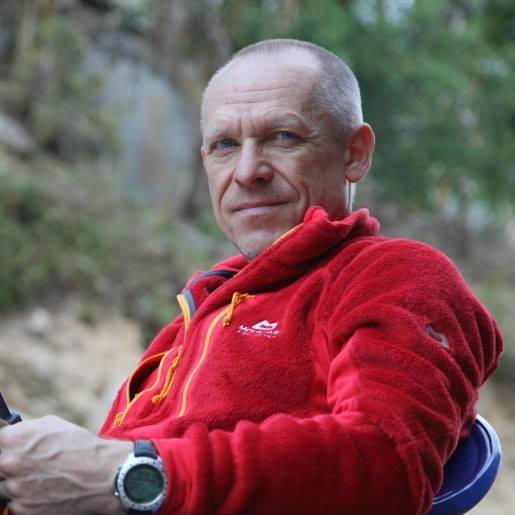
Same old music
The three old friends proved last year that they still work great as a team, despite not climbing together for years. There's also a language barrier. They don't speak each other's language and no one is fluent in English.
"At least we like listening to the same oldies, as we're the same age," Meroi joked in a talk with ExplorersWeb. Meroi is 62, Benet is 61, and Hamor is 59.
Their new route last year on Kabru South, also close to Kangchenjunga, was one of ExplorersWeb's best expeditions of 2023.

All three developed most of their Himalayan skills doing the 14x8,000'ers without oxygen or personal sherpa support. This was the norm at the turn of the 21st century.
None of them is willing to join the crowds on the normal 8,000m routes. When Hamor joined Horia Colibasanu on a no-O2 Kangchenjunga climb in 2022, he was aghast at a mountain he couldn't recognize because of the long lines, the massive use of O2, and the skies buzzing with helicopters. Nives and Romano have considered returning to Manaslu because years before, they stopped slightly short of the highest point.
For now, the three alpinists want to continue enjoying the wild and lonely Himalaya that they remember.
Almost 8,000m
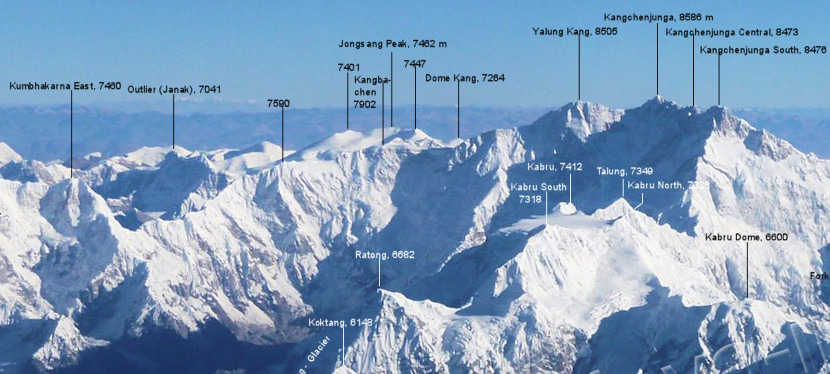
Kangbachen is both the westernmost and the lowest of Kangchenjunga's five points. It is the only one that does not reach 8,000m. It lies completely in Nepal, surrounded by the Kangchenjunga Glacier to the north, the Ramtang Glacier to the northwest, and the Yalung Glacier to the south. After several failed attempts, it was first climbed via the southwest ridge by a Polish expedition in 1974. No one has summited the peak from its south face.
The new regulations aiming at curbing excessive luxury on Everest have proven so troublesome that Khumbu authorities have had to walk back some of their preliminary decisions. In particular, the obligation to use yak convoys instead of helicopters to ferry supplies the last leg to Base Camp has changed.
As we reported earlier this week, outfitters were having problems finding enough yaks in Syanboche, two days away from Base Camp. The loads are so massive and the facilities at BC so expansive that the yaks simply can't keep up. The situation was only going to worsen when climbers started their rotations to higher camps in April. At that time, the need for supplies, especially bottled oxygen, increases.
Helicopters and big tents
We also mentioned that the so-called Base Camp Management Procedure 2024 could be subject to adjustments. This has, in fact, occurred. The new version now allows helicopters to fly to Base Camp, as long as an ad hoc committee of supervisors approves.
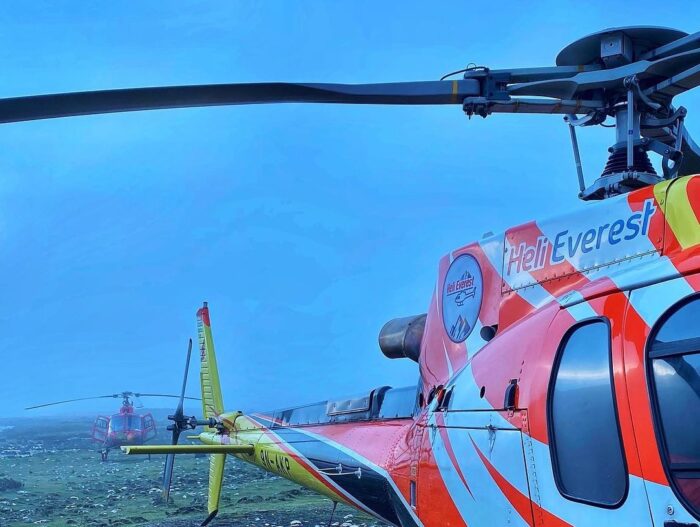
The updated regulations state that companies must still use yaks and porters, if available. The Sherpa mayors of the Khumbu proposed the yak requirement in the hopes of preserving part of the traditional herder's life. Yak dung is also a main source of fuel in high-altitude villages.
As the revised rules now stand, helicopters will land and take off from three helipads in Everest Base Camp. Above that altitude, they can only fly rescue missions.
There are also new, looser limits on the size of the tents in Base Camp. Dining tents may allocate 5.5 square meters (60 square feet) per person. Each sleeping tent can have 7.4 square meters (80 square feet) per person. The previously allotted space was unrealistic and came too late for the companies that had already bought their tents to adjust.
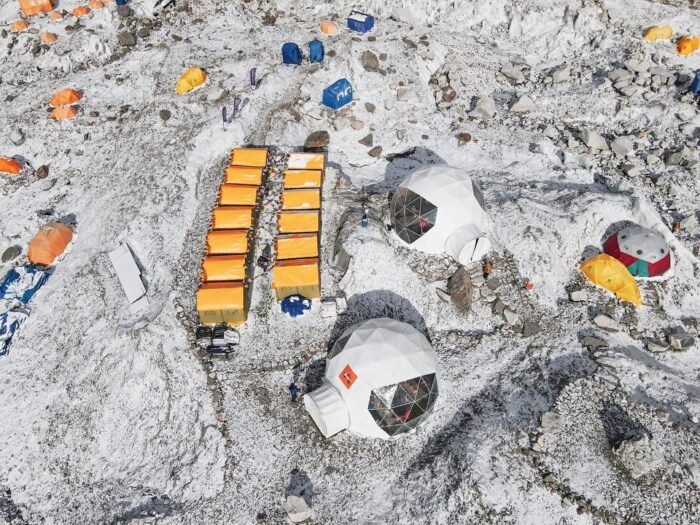
And while trekkers and visitors are still not allowed to spend the night in Base Camp, climbers may still host friends and sponsors. And of course, Base Camp managers, expedition doctors, and non-climbing Base Camp crew can also stay, The Himalayan Times reported.
Above Base Camp
Other measures have not changed. All commercial ventures, such as cafés or massage businesses, are still disallowed in Base Camp. Climbers must still use bags to store and carry down human excrement. Each person must bring back at least 8kg of garbage.
Before setting off toward the Icefall and the upper camps, teams have to submit an inventory of what they are carrying. Officials assigned by the Sagarmatha Pollution Control Committee can then check that everything is brought back down at the end of the expedition.
At least on paper, nothing must remain on the mountain at the end of the climb. That includes dead bodies. If someone dies, the expeditions are responsible for bringing the bodies down.

New ropes
Finally, new ropes must be used for all the fixing. This is pertinent for Seven Summit Treks, which is the company responsible this spring for laying the ropes from Camp 2 to the summit.
Climbing teams were also waiting for Nepal's Department of Tourism to publish further regulations for the 8,000'ers. However, expedition leaders consulted by ExplorersWeb said there will be no last-minute rules from the central government, except for the requirement to wear some kind of location device. In the end, this will be a simple Recco reflector instead of a GPS tracker or "chip," as some sources previously described it.
There is little information about the spring season in the Himalaya yet, but Tibet's Shisha Pangma will certainly be a focus of attention. Here, several record-seekers came away empty because of the tragedy that claimed four lives last fall. The deaths prompted the sudden closure of the mountain.

2023: records and tragedy
Last spring, only a handful of climbers were able to score a permit for Shisha Pangma. But that fall, a large number of climbers signed on to climb a peak that had been closed for years because of COVID-related restrictions. For several of them, it had become the last peak in their 14x8,000m quest.
Moreover, an unprecedented number of those 8,000m collectors were pursuing some kind of record (national, age, or speed). In some cases, two or more contenders had come to Tibet after the same record.
This quest for records ultimately led to the tragedy on Oct. 7, when Gina Marie Rzucidlo and Anna Guttu raced each other to become the first U.S. woman to complete the 14x8000'ers. The pair died in two separate avalanches near the summit, along with their sherpa guides, Tenjen Lama and Mingmar Sherpa.
Other Nepalese were injured in the accidents while expedition leader Mingma G suffered bad injuries during the rescue efforts. Other climbers then decided to wait or retreat because of the dangerous conditions on the mountain. Another group only heard the shocking news when they reached Base Camp that day. Overall, around 50 climbers were on the mountain on Oct. 7.

Forced halt
No one tried to climb Shisha Pangma after that. The China Tibet Mountaineering Association (CMTA) quickly closed the mountain for the rest of the season. Some survivors later shared details about that tragic day. Their words triggered another kind of avalanche: criticism from the worldwide community, including from veteran alpinists who knew the mountain well and who blamed a lack of leadership, little attention to safety and conditions, and poor decision-making for what transpired.
Now time has passed, spring is coming, and the records are still waiting to be broken, many of them by Nepalese nationals.
Leaders, clients after the same goal
Mingma G of Imagine Nepal sustained a broken skull and coccyx after he took a long fall while helping in rescue efforts after the avalanches. Currently training in Europe, he will return to Shisha Pangma in the spring, before heading to Everest's South Side. If Mingma G succeeds on Shisha Pangma without oxygen, he will become the first Nepalese to summit all 14 8,000'ers without supplementary O2.

Last year, Mingma G was also competing with Nirmal Purja, although Purja is a UK citizen. Currently, it is not confirmed -- but still likely -- that Purja's Elite Exped will put a team on the mountain as well. He and Mingma G joined forces last year, but Mingma G confirms that Imagine Nepal will operate independently this time.
We do not yet know whether Imagine Nepal will have Pakistan's Sirbaz Khan on the team. Like compatriot Shehrohze Kashif, Khan is just one peak away from becoming the first Pakistani to complete the 14x8,000'ers. Kashif has confirmed that he is returning to Shisha Pangma this spring.
Young Kashif climbs with full support, while Khan subsidizes his climbs by fixing ropes. He has only used supplementary O2 on three peaks. The video below shows Sirbaz Khan on his 12th 8,000'er, Manaslu.
Young climbers
Climbalaya's Shisha Pangma expedition will start on April 9. They may join forces with their sister companies, Seven Summit Treks and 14 Peaks Expedition. Nima Rinji, the son of Tashi Lakpa Sherpa -- who runs 14 Peaks -- is at age 18 on track to become the youngest-ever 14x8000'er summiter. He has already bagged 10 out of the 14, and was the youngest summiter on all of them except Everest. He will likely want to tick off Shisha Pangma as soon as possible, before turning to Kangchenjunga, Makalu, and Annapurna.
Also trying to become the youngest, however briefly, are Adrianna Brownlee of the UK and Shehrohze Kashif of Pakistan. Both have only Shisha Pangma to go. Brownlee is 23, anad Khashif will turn 22 by springtime. The Pakistani youngster confirmed to ExplorersWeb that he is determined to finish, although he did not confirm that he will try as early as this spring.
Brownlee told ExplorersWeb that she has not yet made up her mind about returning to Shisha Pangma quite so soon. She is currently focused on AGA, the outfitting company she started with Gelje Sherpa.
Gelje Sherpa was one of 2021's Winter K2 summiters and finished his own 14x8,000m quest last year on Cho Oyu. Considered one of the best Sherpa climbers in Nepal, his reputation rose to superstar/superman status on Everest last spring when he found a climber abandoned near the summit and carried the man down to safety on his back.
Full support and a safer season
So far, all Shisha Pangma climbers are clients on commercial expeditions, using sherpa support. Regarding supplementary O2: Mingma G didn't use it on the last few peaks he guided; Adriana Brownlee summited Gasherbrum I last year without it and might try that again.
In the end, though, Chinese authorities will have the last word. On Everest's North Side this year, they are not permitting individual, no-O2 clients. Whether this will also be the case on Shisha Pangma, in light of last year's events, is unclear.
Shisha Pangma's normal route, on the north side of the mountain, is one of the most straightforward climbs on all the 8,000'ers. However, its final slopes are avalanche-prone because of wind slabs formed by the relentless, southern winds. Expert guide and 14x8,000'er summiter Ralf Dujmovits explained the process after the avalanches last year. He wrote:
In spring, the longer, warmer days and the sunshine that hits the slope (even obliquely) help bond the snow and significantly lower the avalanche danger. Of course, there are always exceptional weather conditions at any time of year, but generally speaking, Shisha Pangma is much safer to climb in April-May than it is in September/October. The very cold temperatures of late autumn and the almost complete lack of sunshine on the slope preserve this particular avalanche danger in the snowpack, sometimes for weeks or months.
Tibet not open to everyone
Despite the interest and the relatively easy route, the number of Shisha Pangma permits will be limited. Typically, the CTMA keeps numbers low enough to avoid large crowds. Also, permits and visas are hard to get and involve a complex game of politics and influence that has discouraged some big companies.
One of these is 8K. "There’s a significant Monopoly game involved in getting the China Mountaineering visa and permits," CEO Lakpa Sherpa told ExplorersWeb. "So we are not prioritizing Tibet and instead focus on providing the best service on our Nepal and Pakistan expeditions."
The company had some bitter moments last spring when their main sherpa guides, Dawa Ongchu and Pasdawa Sherpa, (who supported Kristin Harila on her first attempt to speed climb the 14x8,000'ers in 2022) had their visas rejected at the last moment. Lakpa (and Pasdawa Sherpa) averred that some "big companies" hampered their attempts to get visas.
Final note: Recovering the 2023 bodies?
Shortly after the fall 2023 avalanches, Kristin Harila of Norway launched an unusual fundraising campaign. She wanted to raise money to recover the bodies of Gina Rzucidlo and Tenjen Lama by air this spring.
Harila had completed her speed project entirely supported by Tenjen Lama. Reportedly, she had also spoken to Rzudcilo's family, who wanted her body retrieved as well.
However, the initiative was deemed useless or even risky by climbers. Mingma G, who witnessed the avalanches, said that recovery was impossible, as the climbers had been swept into a huge crevasse and buried out of reach.
"It would be better to donate the money to Tenjen's widow," he suggested when ExplorersWeb asked him at the Banff Mountain Film Festival about Harila's plan.
In addition, Harila mentioned that a helicopter would conduct the initial search. This would entail crossing the border into Tibet from Nepal. The idea was that since the deceased climbers had Recco reflectors in their clothing, a helicopter equipped with a Recco detector might pick up the signal.
Few details
There was no further information about how or if the China Tibet Mountaineering Association would allow such flights or any other details about the proposed recovery attempt if a signal was picked up. At the time, Harila's GoFundMe campaign collected very little money.
Some weeks ago, Harila posted an update: "In spring of this year, weather conditions will be more favorable for a search and repatriate mission," she wrote. "I have gathered a team, and we are ready to go."
Still, there are no details about that potential team, any rescue plans or permissions acquired, or a realistic estimate of how possible such a recovery might be. Harila has asked for donations amounting to nearly $300,000. As of today, her campaign has raised about $8,500.
Note that the bodies of the other two fatalities, Anna Gutu and Migmar Sherpa, were not buried in the avalanche that killed them. Their remains were taken to some high camp, and there has been no public information about them since.
Individual tents with furniture and ensuite bathrooms, huge lounge domes, bakeries, and massage parlors, all thriving on the Khumbu Glacier while helicopters going up and down constantly...
Welcome to Everest Base Camp. Or at least an exclusive corner of it.
A frantic race is on to offer all kinds of luxuries to premium clients. Now, the Sherpa mayors of the Khumbu Valley are trying to curb the growth of Base Camp infrastructures with new rules. The idea is to ease the environmental impact of expeditions, as well as try to preserve local culture, lifestyle, and economy.
As we mentioned earlier this week, the obligation for climbers to carry wag bags and bring down their excrement from the mountain is just one of a new set of regulations established by the Khumbu-Pasang Lhamu village municipality. Their jurisdiction includes most base camps in the region, including Everest's.
Yesterday, they made public a document entitled Base Camp Management Procedure 2024. While some technical issues need fine-tuning, the basis of the document has been approved for the upcoming spring season. Some of these measures may be a pain for the biggest outfitters.
Stop the extravagance
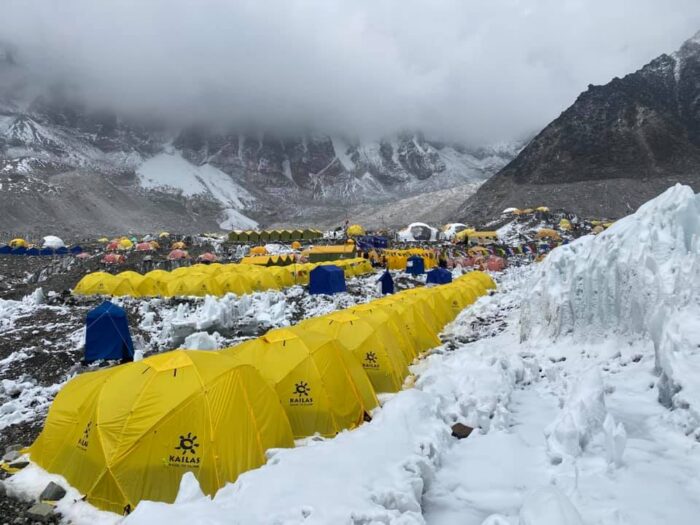
The Khumbu authorities have coordinated with the Sagarmatha Pollution Control Committee (SPCC), Nepal's Department of Tourism, and the Army. But theirs are not the only new regulations in the making. A new tourism bill will be tabled in Parliament soon, Dawa Steven Sherpa told ExplorersWeb.
The expedition leader of Asian Trekking and climate activist has advised on both projects. Dawa Steven is also secretary of the Expedition Operators Association, and a Khumbu Sherpa himself. "I share the local's concern for the future of the Everest region," he said. "The Khumbu region leaders are trying to reign in the extravagance at Base Camps," he explained.
We asked him about some of the regulations that may specifically affect commercial expeditions.
Goodbye to the big domes
One of the main changes limits the size of tents, especially the huge dining tents. Toilets attached to individual tents will disappear, the number of tents per camp will be reduced, and the use of flashing lights will cease.
The document, though well-meaning, is not perfect. One problem is that the original document establishes 10 sq ft (less than 1 sq meter) per person in the dining tent.
"This is an error and not practical," Dawa Steven said, "as it barely accommodates one chair. 50 sq ft (4.6 sq. m) would be adequate, taking into account seating, table, walkway, and serving space."
Still, the huge domes that dominate every team's Base Camp, with their comfy armchairs, spacious tables, jumbo screens, and great views of the mountains will hardly meet the new requirements. Yet clients coming this season are expecting them, and have already paid for them. In fact, some of the high-end expeditions offer luxury dome tents for individuals, elaborately furnished.

Visitors not welcome?
Another controversial part of the new regs defines "tourists" as those neither intending to climb nor part of the local staff. According to the document we had access to, these tourists will not be allowed to stay the night in Base Camp. Yet a significant number of climbers bring friends or relatives with them or at least visit for a couple of days.
"This is a concern that we have also put forward," Dawa Steven said. "It's not just friends and family. Teams also bring essential non-climbing members such as doctors, communications officers, and base camp managers."
All commercial activity other than the expeditions themselves will not be permitted in Base Camp. Some years ago, there was a bakery and at least one massage parlor. However, the sophisticated Base Camps of today have baking ovens in their own kitchens, as well as espresso machines, yoga equipment, etc.
(Some) limits to helicopters
A third point of interest refers to an increasingly controversial issue: the use of helicopters to supply the higher camps. Flights to Camp 2 and even Camp 3 are becoming a common sight on the normal route of Everest from Nepal. While few speak about it, it is also an open secret that a few climbers in recent seasons have jumped in the helicopters to cover the section between Base Camp and Camp 2 and thereby avoid the dangerous Khumbu Icefall.
According to the document, flights above Base Camp will only be permitted for rescues and emergency evacuations of sick climbers, not for shuttling equipment or supplies. This measure might face opposition from outfitters who advocate for aerial resupplies to Camp 2. They consider it safer than having heavily laden staff trudge through the Khumbu Icefall several times. Last year, three sherpas died when a section collapsed.

Moreover: gear and supplies cannot be airlifted all the way to Base Camp. Helicopters will have to leave their loads at Syanboche, above Namche Bazaar, a day and a half away. From that point, yaks will have to carry the loads.
"The idea here is to spread economic benefit to the local yak herders and porters," explained Dawa Steven. "The practice of yak herding is slowly dying out because of a lack of incentives. It also creates other problems, like having less yak dung for cooking and heating." Yak dung is the main source of fuel above tree line, located at around 4,000m.
Waste management
Regarding waste management, the idea is "to leave no trace." Besides the new mandatory use of wag bags for human waste, expeditions will need to submit a list of the items that they will carry to higher camps. This inventory will make it easier to ensure that they bring them back down afterward, The Himalayan Times reported.
In addition, all teams need to return from Everest and/or Lhotse with at least eight kilos of garbage per member, and three kilos on Ama Dablam.
A final issue relates to a more sensitive kind of leftover on the mountain: the bodies of those who perish. "Tour and expedition agencies will be responsible for retrieving the bodies of their respective high altitude professionals, including mountain guides, porters, and trekking guides," The Himalayan Times wrote. "They will be given the 'Garbage Clearance Letter' only after the bodies are recovered and wastes are disposed of."

Where are these measures applied?
There is still time for modifications, but so far these plans will apply this season at the base camps in Khumbu Pasang Lhamu Village Municipality. That means Everest/Lhotse/Nuptse, Pumori, Ama Dablam, Taboche, Cholatse, Cho Oyu (south side), Island Peak, and Lobuche.
Note that the local Khumbu authorities' jurisdiction only reaches up to Base Camp. Whatever happens higher on the mountains remains the responsibility of Nepal's Ministry of Tourism.
In 1992, Wanda Rutkiewicz, one of history's best female alpinists, disappeared on 8,586m Kangchenjunga, the world’s third highest mountain. Had she survived, she would have turned 81 this month.
Rutkiewicz’s legacy is well-known through several articles and books about her life. However, today we will tell her story with some new details from that 1992 Kangchenjunga climb.
In July 2022, I interviewed one of the members of that expedition, Elsa Avila of Mexico. She shared her memories of that spring in 1992. The interview first appeared on Elsa Avila’s podcast in Spanish, under the title Carawana de Suenos ("Caravan of Dreams"). Here, we share Avila's observations and, at the same time, put together the chronology of the expedition with the help of official reports published later in The Himalayan Database and the American Alpine Journal.

Kangchenjunga ascents until the end of 1991
Kangchenjunga was first climbed on May 25-26, 1955 by four members of a UK-New Zealand party led by Charles Evans. They ascended via the southwest face, using supplemental oxygen. Pete Boardman, Doug Scott, and Joe Tasker of the UK made the first no-O2 ascent on May 16, 1979.
From its first ascent until the end of 1991, a total of 113 mountaineers climbed Kangchenjunga, including 51 without bottled oxygen. All the summiters were men, so at the end of 1991, the peak still awaited its first female ascent.
Between 1955 and 1991, 15 climbers died on the peak. Twelve of the victims did not use bottled oxygen.
In the spring of 1992, two separate expeditions headed to Kangchenjunga. Both wanted to climb it from the north.

Spring 1992 teams
The Mexican Kangchenjunga Expedition arrived at Base Camp very early in the spring, on March 11. The party consisted of six members: Carlos Carsolio (leader), Elsa Avila, Alfredo Carsolio, and Andres Delgado, all from Mexico, and Wanda Rutkiewicz and Arkadiusz Gasienica-Jozkowy from Poland.
Gasienica-Jozkowy was better known by his nickname, Arek, and we will refer to him that way in the story.
Carlos Carsolio was one of the strongest climbers of his generation. His friend Jerzy Kukuczka called him The Mexican Bull. The four Mexicans knew each other very well, and they had already carried out several expeditions together before 1992.
Rutkiewicz, meanwhile, was doing her Caravan of Dreams project. It consisted of climbing all 14 8,000m peaks. No woman had yet done all of them. Before Kangchenjunga, Rutkiewicz had already climbed eight of the 8,000’ers.

The two Poles join the Mexican expedition
According to Avila, Rutkiewicz had called Carlos Carsolio to ask him to allow her and her climbing partner Arek to join the 1992 team. The Mexicans already knew Rutkiewicz from her 1987 Shisha Pangma climb. They had also met other Polish teams on 8,000m peaks since 1985 and were familiar with their skill.
Carsolio told Rutkiewicz that she and Arek could join the Mexican team, but insisted that the first female mountaineer to summit Kangchenjunga should be Avila, if possible. Avila wanted this accomplishment very much because she planned to become a mother afterward.
Rutkiewicz told Carsolio that that request was not a problem. She did not want to be the first woman to climb Kangchenjunga but just to continue her 14x8,000m project.

So the two Polish mountaineers joined the Mexican team. The plan was that each small group would make its own ascent in a kind of joint venture.
The Mexicans arrived first at the head of the glacier to set up Base Camp. Then Arek arrived, and a few days later, Rutkiewicz showed up. She seemed to be affected by poor acclimatization and had edema on her face for the first few days.
Avila says that it was very very cold on the mountain. All of them had difficulties even leaving the tents in the morning because of freezing temperatures and harsh wind.

A second Kangchenjunga expedition arrives
On March 18, one week after Carsolio’s party reached Base Camp, a German expedition arrived. The 10-member German team, led by Wolfgang Sinnwell, consisted of seven German mountaineers and three sherpas. This team, on bottled oxygen, interacted only slightly with the Mexican-Polish team. Although both parties would be on the same (north) face of the mountain, both operated independently from each other. Neither realized that both teams would face tragedy on the mountain.

The first summit push of the Mexican-Polish party

Carsolio and partners, including Rutkiewicz and Arek, (on a separate rope but part of the Mexican team) established Camp 2 at 6,890m on March 30. They did not use Camp 1 during the expedition. On April 22, they set up Camp 4 at 7,900m in a very strong wind. The camp platform was too narrow for a tent so they had to dig a cave.
The Mexicans spent a horrible night in the cave, sitting instead of lying in that cramped space and covering the entrance of the improvised refuge with their backpacks. Meanwhile, Rutkiewicz and Arek had to bivouac at 7,800m on the long traverse section that led to Camp 4, because she was very slow.
The Mexicans spent another night in the cave, but on April 24, the whole team, including the Polish climbers, aborted the summit push. Avila and Alfredo Carsolio were already frostbitten.
The team met at Camp 2 during the descent to discover that the tents had disappeared beneath a huge dump of snow. Avila started to dig out the tent but realized that her fingers were already blue. They did not want to spend another night there, so they continued down to Base Camp.
Avila remembers that Rutkiewicz was with them. Avila did not want to take any medicine before descending to Base Camp, as she wanted to have a clear mind on her way down the wall.
Happy and positive
"I remember it was snowing that day and Wanda [Rutkiewicz]’s hair was covered with snow," Avila recalled. "She was happy and positive, and told me that the falling snow reminded her of the Alps."
Despite Rutkiewicz's competitive nature, which sometimes included rivalry with other female climbers, Avila says that at one moment during the descent, Rutkiewicz told Avila, "You are the strongest woman I know." Avila still cherishes Rutkiewicz's generous words today.

Alfredo Carsolio had frostbitten his feet, and Avila her fingers. That was the end of the expedition for both of them. They trekked to Ghunsa, from which they finally were taken to the hospital. From there, Avila flew back to Mexico.
Meanwhile, the German team...
At the same time that the Mexican-Polish party was hoping to launch their first summit push from Camp 4 (7,900m), tragedy struck Sinwell’s party. We have to remember that the two teams had no contact on the mountain, so didn't know what was happening with the other party.
The Germans originally planned a different route (the 1983 Warth line). But on April 5, one of their members fell and broke his ankle. After he was helicoptered off the mountain, they changed to the Messner route on the North Face.
Two members of the German team, Gerhard Reif and Karl Schrag, reached 7,000m on the Messner route on April 22. The next day, sirdar Ang Phurba Sherpa fell unconscious while cooking in a closed tent, but a dose of oxygen revived him.
Tragedy at Camp 2
Two days later, two German members and two sherpas climbed up to Camp 2 at 6,600m, hoping to establish Camps 3 and 4 in the following days. That night, however, tragedy struck. The two sherpas, Lhakpa Nuru Sherpa and Ang Dorje Sherpa, suddenly became silent in their tent. When the two Germans opened the sherpas' tent to see what was happening, they discovered that the two sherpas had died from carbon monoxide poisoning. Despite the previous warnings, the sherpas had continued to cook in closed tents.
They were buried in a crevasse. This tragedy and health problems with some of the Germans prompted them to call off the expedition. They left Base Camp on May 1. Before leaving, however, the German expedition doctor attended to Carlos Carsolio, who had suffered a ligament injury during the descent.

The second summit push
After Avila and Alfredo Carsolio left the expedition, the other four members of the team remained on the mountain: Carlos Carsolio, Andres Delgado, Arek, and Wanda Rutkiewicz. However, Delgado and Arek had health issues and could not launch a second summit push.
Only Carlos Carsolio and Wanda Rutkiewicz were fit to start a second attempt. Both agreed that each one would climb at her/his own pace and style and would make separate summit attacks.
Starting the ascent
Carsolio and Rutkiewicz started from Camp 1 at 5,630m together, to help each other on the glacier, which was full of hidden crevasses. Carsolio reached Camp 2 four hours faster than Rutkiewicz. However, it was her best time on the expedition.
On May 10, they started at their own pace toward Camp 3. At 3:15 pm, they left Camp 3 together in deep snow. After two hours, Rutkiewicz shouted to Carsolio that she was very tired and she would stop and bivouac at 7,450m.
Carsolio continued climbing during the night through deep snow mixed with snow slabs. He wanted to make Camp 4 (7,900m) by midnight but only managed to reach it at 6:30 am the following day, May 11.
The weather was again bad. It was snowing and windy. Carsolio stayed at Camp 4 all day. He had a sleeping bag, a little fuel, and some food. That day, Rutkiewicz joined him at Camp 4 at 7 pm. She was unhappy because her stove had stopped working and she was dehydrated. However, at Camp 4 she drank only a little because she didn’t want to vomit later.

The summit push from Camp 4
On May 12 at 3:30 am, Carsolio and Rutkiewicz left Camp 4 toward the summit of Kangchenjunga. Rutkiewicz was slower than Carsolio and immediately fell behind. Carsolio fixed ropes in two couloirs for their descent.
Progress through the deep snow was difficult for both. Carsolio nevertheless summited late that day, at 5 pm. He stayed 50 minutes on top, then began to descend in good weather.
On the way down, he met Rutkiewicz at 8,250m at 8 pm. Rutkiewicz was still on her way to the summit. She carried 20m of 5mm rope, a bivy sack, headlamp, extra gloves and goggles, one small camera, and some water. During the 10 minutes they were together, Carsolio tried to convince her to turn back. But Rutkiewicz was determined to continue.
At the time, she was sitting, preparing her bivouac in a kind of cave that the wind had carved out of snow. The night was not windy but was very cold. Rutkiewicz had no stove, no fuel, and no food. Her mind was clear, according to Carsolio. It was the last time that Carsolio saw Rutkiewicz.
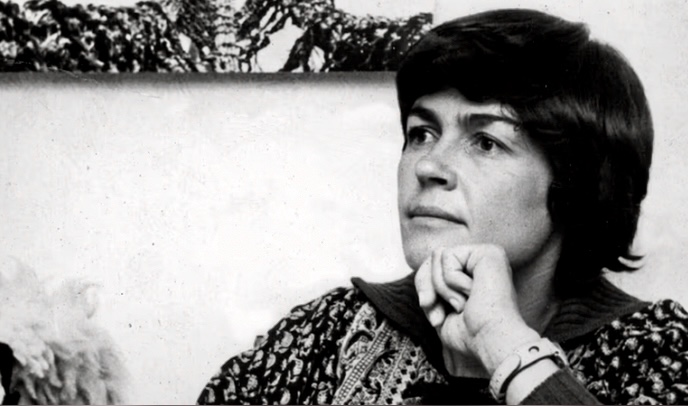
No more news
Before continuing his descent, Carsolio told Rutkiewicz that he would wait for her at Camp 2. Carsolio reached Camp 4 after 10 pm on May 12. He waited for her but when she did not show up, he left supplies for her, and on May 13 at noon, he continued down to Camp 2.
There was no more news from Rutkiewicz. On May 12 and 13, Delgado scoped the mountain from Camp 2 with binoculars to try to see the light from her headlamp. Nothing. Carsolio waited at Camp 2 for her for three more days, but she didn’t arrive.
On May 14, the wind rose, and it started to snow. On May 16, Carsolio left Rutkiewicz some food, fuel, water in a thermos, a walkie-talkie, some medicine, and emergency oxygen in the tent at Camp 2. Then he started to descend, arriving at Base Camp on May 17.
Carsolio points out in his report for The Himalayan Database that Rutkiewicz was very slow from Camp 1. However, she was a strong and determined climber who survived on K2 in 1986 for four nights in great difficulties around 8,000m. Carsolio also pointed out that Rutkiewicz wasn’t comfortable with her crampons during the second summit push. At the bivy of May 12, she told Carsolio that her down suit was not warm enough so she wore her bivy bag around her shoulders.
Avila says that at the bivy place at 8,250m, Rutkiewicz asked Carsolio if he thought that she was technically able to reach the summit. Carsolio answered yes and that he had left rope for her in the summit section.
A sad loss
The team finally left Base Camp on May 21, in very bad weather. ”It’s a very sad loss for all of us and the mountaineering world,” wrote Carsolio in his HDB report.
All members of the team, including Arek, were in their 20s, while Rutkiewicz was 49. Although she was 20 years older than her partners, she was determined to complete her so-called Caravan of Dreams. Rutkiewicz always said that she wouldn’t die lying in bed at home.

Avila received a fax in Mexico in May 1992. The first sentence was that Carlos Carsolio summited. The news made her very happy, but the fax continued printing. Although the letters were distorted, she eventually realized that the text said that Rutkiewicz was missing.
Aftermath
Three years later, in 1995, Avila received a call from Elizabeth Hawley. She asked Avila what color Rutkiewicz's down suit had been on Kangchenjunga. Hawley did not say more at the time.
But that spring, three years after Rutkiewicz had gone missing, a six-person Italian-Czech team attempted Kangchenjunga by the southwest face.
On April 29, 1995, Fausto de Stefani, Marco Galezzi, and Silvio Mondinelli found a woman's body at 7,700m to the left of the classical southwest route, under a serac. Mondinelli recalled that it seemed that the woman had fallen from some height. The body was not complete. The down suit was yellow, matching Rutkiewicz's. They thought that it could be her body if indeed she had fallen from the summit down the southwest face.
However, there were other two possibilities too. The body might have belonged to Iordanka Dimitrova, a 41-year-old Bulgarian climber who disappeared in the autumn of 1994, or that of a Russian woman, Ekaterina Ivanova, who disappeared in an avalanche that same season. The Italian mountaineers found a pill in the suit's chest pocket with Bulgarian lettering, so the body likely belonged to Dmitrova. The Italians put her body in a crevasse.
"Wanda lives"
It remains unclear if Rutkiewicz summited Kangchenjunga or not. One theory suggests that after summiting, she may have descended via the southwest face. Avila says that this made no sense, however, because Rutkiewicz knew that Carsolio was waiting for her at the high camp and at Camp 2. That surely would have prompted her to go down their North Face ascent route.
Years later, some mountaineers allegedly saw a woman from behind in a Buddhist monastery who looked like Wanda Rutkiewicz. This rumor proved nothing, of course, although even 20 years after her disappearance, Rutkiewicz's mother believed that her daughter was alive somewhere. She always said, Wanda lives.

Fresh from climbing three alpine North Faces in three days, French ace Benjamin Vedrines is turning to ski-mountaineering for the rest of the winter and spring. He wants to get as fit as possible to prepare for a major high-altitude challenge in July. Vedrines plans to climb K2 without oxygen, in a one-day speed ascent. He will then paraglide from near the summit.
"It's not the number of mountains I climb, it's more about the journey on each of them," Vedrines wrote some weeks ago. "With K2, I have a special relationship."

Lessons learned
"I want to climb K2 again because the mountain forced me to turn around in 2022 at 8,400m," Vedrines told ExplorersWeb. "I had just climbed Broad Peak twice, once in a whopping 7 hours, 19 minutes from Base Camp to summit. When I went up K2 immediately afterward, I suffered severe hypoxia because of fatigue."
Indeed, other climbers on the spot found him nearly unconscious and gave him oxygen. Vedrines recovered almost immediately thanks to the bottled gas and started descending on his own. At a certain point, he just paraglided back to Base Camp.
"This time, I will learn from this previous expedition, and try to do things well while limiting risk as much as possible," said Vedrines. "The goal is to climb the mountain in a day. If conditions are good enough [they must be excellent, he noted], I will take off near the summit with my paraglider."
Growing experience
Vedrines told ExplorersWeb that he is looking forward to reaching above 8,600m for the first time. "It would be a big step for me to reach that symbolic altitude, and it will also be a big evolution in the way I train. This will be a good test for future high-altitude projects.
"I'll have to train a lot, It's going to be demanding but spreading my paraglider up there and taking off, my feet above all these 8,000m giants...would be amazing," he posted recently on social media.

As with the recent alpine trilogy, Vedrines understands his climbs as stages in an endless process of acquiring ever more experience.
"There's always more to explore beyond the act of climbing," Vedrines wrote. "Physical preparation is crucial, but so is mental preparation. Records are excuses to grow as a human. It's not just the summit that matters, but also the long-term quest. A quest is necessary to trigger motivation because it takes a lot to get up there."
Broad Peak
Vedrines' Fastest Known Time on Broad Peak in 2022 was his first experience on an 8,000'er. His record overshadowed other speed ascents that season, including one by Denis Urubko. However, it was far from his first high-class Himalayan expedition. Vedrines had previously bagged the first ascent of the Northeast Face of Chamlang Middle (7,240m) with Nicolas Jean in 2019, and a new route on the North Face of Chamlang Main (7,319m) with Charles Dubouloz in 2021.
In 2023, Vedrines and partner David Goettler launched a remarkable alpine-style attempt on Nanga Parbat's Schell route from the Rupal side. Although he felt strong and was just 600m from the summit, Vedrines turned around when Goettler decided to retreat.
Vedrines considered a solo attempt the following day but ultimately refused to leave his companion. “I can neither hide my pain nor blame David,” he admitted.
He prepared for Nanga Parbat by completing some mind-blowingly fast ascents and ski traverses in the Alps, such as the famous Chamonix-Zermatt route in 15 hours, a 138km-long, 12,000 vertical-meter ski tour in two days, and the Gousseault-Desmaison route up the north face of the Grandes Jorasses in nine hours.
An ambitious 2024
This year couldn't have started better for Vedrines. Paired with Leo Billon, he onsighted the three North Faces of the Dru, the Droites, and the Grandes Jorasses in winter in just three days, all free climbing in one push without bivouacs on the wall.
On K2, Vedrines may well target another record. Fellow French climber Benoit Chamoux completed the fastest ascent of K2 (without supplementary oxygen) in 23 hours in 1986, via the Abruzzi Spur (normal) route. Chamoux had also acclimatized by climbing Broad Peak two weeks earlier.
Denis Urubko reached the Gasherbrums base camp on Jan. 20. Each day, he sends short messages via a satellite device to his partner back in Spain, Pipi Cardell.
Journalist Laszlo Pinter received some interesting information from Urubko, via Cardell:
"After eight days of trekking, we arrived at the base camp at 5,000m. Several porters fell ill, the loads were heavy. There was about 30cm of snow on the trail at 4,400m. Fortunately, there was no serious wind. The temperature was -15°C during the day and about -30°C at night. Gasherbrum I is shrouded in clouds, not visible, but I can feel its power. A special giant, its past is extreme, with many tragedies and triumphs. But our summer success with Maria Jose Cardell will help me plan the winter ascent."
Gradual progress
Urubko mentioned that the base camp stands on a secure platform, protected from stormy winds. He has started to scout ahead, taking a look at the descent route on the glacier. On Jan. 22, he planned to find a way through the icefall.
The next step is to find the route to Camp 2 at 6,400m. "Pakistani climber Hassan Shigri is very strong, Ibrahim the cook is a real specialist, liaison officer Shahzeib is positive, assistant Nizar is attentive. The team is ready," Urubko said.

On Jan. 21, a few further details from Urubko were posted on Cardell’s social media. Urubko reported that they broke trail in 30-80cm of snow and made it through the icefall to 5,150m. They deposited some gear before returning to base camp.
On Jan. 22, Urubko reported that he was back in base camp after reaching 5,400m.
"[There are] many crevasses, lots of snow, fixed ropes," he wrote. Today, Urubko and Shigri will try to reach Camp 1.
As the last days of a busy 2023 tick down, it is time to reflect on the evolution of high-altitude mountaineering and our values and priorities in the face of growing commercialization.
While adventure is alive and well, there is also concern. The real success of an expedition is not the summit but the safe return home. There have been many summits this year, but also far too many avoidable deaths.
The winter 8,000'ers
It was an exciting winter on the 8,000'ers. David Goettler and Herbe Barmasse made an alpine-style attempt on Dhaulagiri, Alex Txikon and a Seven Summit Treks sherpa team tried Manaslu, and Gelje Sherpa, Adriana Brownlee, and record-chaser Kristin Harila attempted Cho Oyu from Nepal.
Only Txikon's team succeeded. Barmasse and Goettler insisted on climbing in good style, and bad weather prevented that, so they went home. High winds likewise pushed back the team on Cho Oyu's south face.
A powerful Russian group attempted the same Cho Oyu challenge in October, and while they made good progress, they ran out of time before they could open the route from the long SSW ridge to the summit.

Another winter climb, far from the Himalaya, was Jost Kobusch's solo ascent of Denali. The German climber became one of the few to complete the feat.
Meanwhile, Marcin Tomaszewski and Pavel Haldas opened the first big-wall route in Greenland during winter.
Harila's record 2.0
Determined to break Nirmal Purja's speed record for the 14x8,000'ers, but unable to snag permits for Cho Oyu and Shishapangma in Tibet in 2022, Kristin Harila made a radical decision. She would start her project again from scratch, in a million-dollar quest that used the considerable resources of Seven Summit Treks -- and not insignificantly, their contacts with the Tibet Mountaineering Association. On April 26, Harila reset her counter in Tibet and summited Shishapangma.

Some of the company's strongest sherpas, including Tenjen Lama Sherpa, supported her. The team was willing to push in tough conditions, as demonstrated on Manaslu and K2.
Their quest had a remarkable impact on the record-seeking crowd. It demonstrated how logistics, determination, remarkable physical and mental strength, and plenty of resources (including helicopters, even in Pakistan) are all crucial to ticking off summits at that pace.
Harila's record also spurred a bitter debate when a Pakistani porter died on K2 on the same day she finished her quest.
Other record seekers, perhaps motivated by Harila's success, paid a high price for their dreams. On Shishapangma, a crazy race to become the first American woman to finish the 14x8,000'ers ended in tragedy. Guiding one of the competitors, Tenjen Lama did not live to see the end of the year.
A difficult Patagonia season
Sadly, climate change played a major role in mountaineering this year. In both Patagonia and on Aconcagua, there were accidents and long spells of bad weather.
Despite a fruitful season during which Matteo de la Bordella and Leo Gheza opened a new route on Mermoz with Sean Villanueva O’Driscoll, the talented pair couldn't finish their ambitious Fitz Roy traverse.
Winter was strange in the Alps, with very dry conditions and then loads of spring snow. Local climbers did their best to adapt to the variable conditions.

The Annapurna miracle
The spring Himalayan season started ominously with annoying new regulations. Trekkers were not allowed to go on their own through most of Nepal.
As usual, Everest was king, but perhaps the most amazing news of the year came from Annapurna, with the spectacular rescue of Anurag Maloo. When Maloo fell into a crevasse on the riskiest part of the route, family and friends energetically mobilized a rescue.
Three days had passed when Adam Bielecki and Mariusz Hatala, who were in the area to attempt the peak's northwest face, volunteered for a complex rescue inside the crevasse. Supported by a sherpa team, Bielecki descended over 60m into the crevasse and found Maloo's body. To Bielecki's astonishment, Maloo showed signs of life.

Maloo's miracle run of luck continued when doctors in Pokhara kept him alive by practicing CPR for nearly four hours. He was then transferred to a bigger hospital in Kathmandu, then to another in Delhi, India. Finally, he was released from the hospital in November and is learning to walk again. He was even able to speak with us in a moving interview.
Annapurna saw at least six more rescues and the death of guide Noel Hanna. Several rescues were required when no-O2 climbers did not turn around before their situations became dire. This was the case for Baljeet Kaur on Annapurna and Piyali Basak on Makalu.
Some have argued that publications should stop covering these expeditions. We explained why we continue to report on 8,000m expeditions.
The saddest Everest record
Everest triggered the usual debate about the overuse of helicopters, inexperienced climbers, and crowds. A handful of clients claimed that they would try for the summit without O2, but most of them were heavily supported.
Yet some were willing to climb in elegant style. Russians Vitali Lazo and Anton Pugovkin tried to climb without O2 and then descend on skis. Suhajda Szilard of Hungary climbed alone, carrying his tent and gear. (He only used the fixed ropes.) Unfortunately, his climb ended tragically. Szilard died, possibly of exhaustion, just before the summit.
Szilard's death was not the only tragedy. As summit waves continued in very good conditions, videos started appearing online showing climbers collapsed in the snow, some of them abandoned by their teams. There were reports of climbers missing, a strange situation among such crowds.
In the end, Everest broke the worst possible record. A record 18 people died, only three of them in mountain accidents.

Meanwhile, a few alpine-style teams quietly made some of the most remarkable ascents of the year. Mathieu Mainadier, Roger Schaeli, and Simon Gietl completed a new route on Meru South. Czech Mare Holecek finished a "simply beautiful" line up Sura Peak with Matej Bernat, and veterans Peter Hamor, Nives Meroi, and Romano Benet climbed Kabru South, a virgin 7,000'er in the Kangchenjunga region.
Polish skiers
Also worth mentioning are the Polish high-altitude climbing and skiing expeditions. Bartek Ziemski, filmed by Oswald Rodrigo Pereira, completed flawless no-O2 ascents on Annapurna and Dhaulagiri, followed by complete ski descents.
Ziemski then helped rescue Carlos Soria, who was injured during his summit push. At 84 years old and on his 12th attempt at a peak that has eluded him for decades, Soria had to be carried down from above Camp 3 with a broken leg.
In Pakistan, Andrzej Bargiel skied down Gasherbrum I and II, and Anna Tybor skied from the summit of Broad Peak.

Pakistan
As usual for the last few years, the last climbs in Nepal merged with news of those heading to Pakistan.
Denis Urubko and Pipi Cardell attempted to open a new route in alpine style on Gasherbrum I. The couple spent almost the entire season there, fixing a good part of the normal route and summiting that way for acclimatization. Yet they were unable to complete their new route because of poor conditions.
Benjamine Vedrines and David Goettler attempted Nanga Parbat's Rupal Face but didn't summit. A Czech team returned to Muchu Chhish and made a solid attempt that ended without success
Elsewhere, Jeff and Priti Wright couldn't make the summit on K7 Central, and relentless bad weather stopped Francois Cazzanelli, Matteo Della Bordella, Silvan Schupbach, and Symon Welfringer on the formidable Baintha Brakk, also known as The Ogre (7,285m), in Gilgit-Baltistan.

Fortune (helped by a great deal of courage) smiled on Japanese climbers Kazuya Hiraide and Kenro Nakajima. The pair traveled to Tirich Mir and achieved the first ascent of its north face.
Simon Messner and Martin Sieberer made the first ascent in alpine style of Yermanendu Kangri, a secondary peak of Masherbrum.
Drama moves to Nanga Parbat
When the summer season started in June, attention quickly shifted to the earliest of Pakistan's 8000'ers: Nanga Parbat.
Bad weather grounded everyone in Base Camp, and some grew impatient. Ropes were not fixed and everybody seemed to be secretly waiting for someone else to break trail.
That someone was Harila and her sherpas. They summited on June 26 but didn't fix ropes to the summit. Crucially, they didn't set up a Camp 4 either. For those following some days later, some of whom were without O2, this created problems.

On the subsequent summit push, the long slog between Camp 3 and the summit exhausted many climbers, especially on their descent. Azif Bhatti of Pakistan refused to turn around and became snowblind on the way down. He owes his life to Israfil Ashurli of Azerbaijan, who sacrificed his push to help him down over several days.
Pawel Kopec of Poland was not so lucky. He died barely 200m from a tent. Ashurli's partners, Saulius Damulevicius of Lithuania and Volodymyr Lanko of Ukraine (one of the two expeditions that carried a tent to Camp 4) helped several people, but couldn't reach Kopec in time.
The situation was confusing, and blame initially pointed to a team led by Mario Vielmo of Italy. Vielmo and his climbing partners later offered their side of the story. Both the Polish team and Ashurli declined to speak out about the episode. The whole situation remains unclear, with contradictory reports and a whiff of selfishness and chaos that taints the expeditions.
K2, the longest day
Meanwhile, Harila had been ticking off peak after peak list at an amazing speed, always on the first attempt. Yet, among the rising applause, there was criticism.
In some cases, the use of helicopters to airlift the rope fixers partway up the mountain led to criticism, as on Manaslu.
Nevertheless, the speed of Harila's team created a recurring situation: an increasing number of commercial climbers followed her team's trail and fresh ropes to each summit.
Harila's group was so fast that instead of aiming to equal Purja's initial six-month record (it later emerged that Purja didn't reach the main summits on a couple of peaks), Harila announced she would try to summit the 14 8,000'ers in just three!
At the end of July, she reached her last peak, K2. However, conditions were not promising and had not been any better for the entire season. No one had summited and time was running out.

On July 25, Harila rushed up the mountain but couldn't go beyond Camp 2 because of high winds. This meant she couldn't meet her planned three-month deadline on July 26. Yet she did move to Camp 3 and that night, set off for the summit. Harila, Tenjen Lama, and the rope-fixing team summited in risky conditions. Almost everyone on the mountain followed, and confusion reigned for the next two days.
Rumors of avalanches, traffic jams at the infamous Bottleneck, someone dying, dozens of climbers retreating, and of others pushing ahead swirled. It took us a week, the brave report and drone footage of Philip Flaemig, and comments from expedition partner Willhem Steindl, to find out what had happened.
Flaemig and Steindl climbed with Furtenbach Adventures. They retreated after two avalanches swept the route, and the long line up the ropes stopped for hours. Before heading back, Flaemig flew his drone at dawn along the Bottleneck. When he reviewed the images back in Base Camp, he discovered over a hundred climbers stepping over a dying man on their way to the summit. The following day, a second wave of summiters passed the frozen body.

The story we published about Muhammad Hassan's death went viral. Harila had traveled back to Norway to celebrate her and Tenjen Lama's speed record. Her triumph, already the subject of some debate because of her methods, soon drew negative feedback.
Two weeks later, Harila published a report justifying her actions. As with events on Nanga Parbat, some key people declined to speak, and so the story remains incomplete. But at least the story made climbers reflect. The K2 summiters kept a cautiously low profile, and Pakistan authorities took some action.
Steindl started a fundraiser to help Hassan's family that eventually totaled over $100,000.
Gasherbrum IV
At the end of the season, Russian climbers Sergey Nilov and Dmitry Golovchenko announced they would attempt the unclimbed (and unexplored) southeast ridge of Gasherbrum IV.
It had all the ingredients to be the climb of the year and they were the right people for the task. However, the bold attempt ended in tragedy when Golovchenko fell to his death. Nilov miraculously managed to downclimb most of the route alone.

Alpinists and record-seekers
If K2's lessons weren't bitter enough, more bad news was to come during the autumn season.
September was promising, with a remarkable number of small teams heading for new routes on Nepal's 6,000'ers and 7,000'ers. Quietly, an American team finally solved a decades-long problem by climbing the mighty north face of Jannu (7,710m) in alpine style. They summited but sustained some frostbite.
Wadim Jablonski and Maciej Kimel of Poland opened a cool new route on Chobutse. Russians Lonchinski and Koshelenko made it to the top of Rolwaling Kang Shar. Meanwhile, Czechs Zdenek Hak and Radoslav Groh washed away the bitter aftertaste of Muchu Chhish with a vertiginous new route on Cholatse.

Pemba Sherpa smashed the FKT on Manaslu, climbing the peak in 12 hours. A Russian team launched a meritable attempt on the long, difficult SSW ridge of Cho Oyu. They left this unclimbed route from Nepal incomplete because of lack of time.

Races to nowhere
China opened Tibet's borders to a restricted number of outfitters and all those pursuing a record rushed in. The race was on, not only among clients looking for national and/or age records on the 14x8,000'ers but also with some team leaders.
Nirmal Purja was determined to complete the 14x8,000'ers without the use of O2. Mingma G, collaborating with Purja, had the same goal. They climbed Cho Oyu in extreme cold during a whiteout. (A similar problem had occurred during Cho Oyu's huge summit push.)
But all went well, and back in Base Camp with the summit under their belts, Purja exclaimed: "Who cares for conditions?" when asked by an Austrian climber. A few days later, his brash words came back to haunt him, and others.

Anna Guttu, a member of Purja's team, wanted to become the first American woman to summit the 14x8,000'ers. But she had a competitor for the record, Gina Marie Rudlizo.
Rudlizo had climbed for some time on commercial expeditions but had fairly recently turned her focus to the record. She had summited Cho Oyu just before Guttu and was running to Shishapangma. For this last challenge, she hired someone she considered the "strongest sherpa guide" in Nepal: none other than Tenjen Lama, fresh off his record with Harila.
Guttu, climbing with Mingma G and Purja's team, rushed to Shishapangma too. They didn't even wait for the yaks carrying their gear from Cho Oyu. They traveled to Shishapangma with their high-altitude equipment on. With only a short break in Camp 1 (where Rudzilo was waiting before rapidly setting off with Tenjen Lama), they rushed up the mountain.
On October 7, two separate avalanches buried and killed Guttu and Rudlizo, along with their respective sherpa guides, Mingmar Sherpa and Tenjen Lama. Three others were seriously injured, among them Mingma G, who took a serious fall while trying to rescue the climbers. Nirmal Purja, climbing without O2, was well below Guttu.
Check out this video by Lakpa Dendi Sherpa on Instagram:
Chinese authorities subsequently closed the mountain for the rest of the season. The mountaineering community was appalled but not surprised. Many spoke out. From veteran alpinists to clients, climbers said conditions were extremely risky on the avalanche-prone north side of Shishapangma.
Expedition leaders and sherpas called for a reflection on priorities and safety measures. The news was a sobering reminder to many clients with limited experience that wanting a summit is not enough. The mountains don't care for the climbers' determination, strength, or ambitions, and mountaineering leadership is not about pushing people forward like soldiers in a war. It's about bringing them home safely.
Will the sad events on Shishapangma set new standards? Or will we be reporting on similar tragedies in upcoming seasons?

The Himalayan Database has updated its spring 2023 statistics. The Everest figures confirmed our sad suspicion: that the figure of 17 deaths was not the whole tally. The final figure, confirmed by Nepal authorities, adds one more to the tally. Not exactly great news to celebrate International Mountain Day.
Preliminary data at the end of the Everest season showed 17 people dead on the mountain. But all the information wasn't in, and we feared that 2023 might beat all previous records. This included 2014 (in which 17 perished, including 14 in a serac collapse near Camp 1).
Until now, 2015 had the most deaths. That year, a major earthquake triggered an avalanche on Pumori that partly buried Everest Base Camp. A total of 18 people died that spring.
List of casualties
The Himalayan Database compiled the list of casualties below. It indicates (when available) the time of death and the altitude at which the climbers died. The three first Sherpas on the list perished while fixing the route, in a serac accident in the Khumbu Icefall. All the other climbers died after their health deteriorated from altitude, exhaustion, and cold.
| Apr 12 | 04:00 | 5700 | Dawa Chhiri (Da Chhiri) Sherpa (Phurte, Nepal) | ||||
| Apr 12 | 04:00 | 5700 | Lakpa Rita Sherpa (Tesho, Nepal) | ||||
| Apr 12 | 04:00 | 5700 | Pemba Tenzing Sherpa (Tesho, Nepal) | ||||
| May 1 | 6400 | Jonathan Reuel Sugarman (USA) | |||||
| May 16 | 7200 | Phurba (Furba) Sherpa (Makalu-9, Nepal) | |||||
| May 17 | 7900 | Victor Brinza (Moldova) | |||||
| May 18 | 8750 | Xue-Bin Chen (China) | |||||
| May 18 | 2860 | Ms. Suzanne Leopoldina Jesus (India) | |||||
| May 19 | 8750 | Awang Askandar Ampuan Yaacub (Malaysia) | |||||
| May 19 | 8500 | Shrinivas Sainis Dattatraya (Singapore) | |||||
| May 19 | 7900 | Muhammad Hawari Hashim (Malaysia) | |||||
| May 19 | 8400 | Jason Bernard Kennison (Australia) | |||||
| May 23 | 6400 | Ang Kami Sherpa (Patle-1, Nepal) | |||||
| May 24 | 7300 | Swapnil Adinath Garad (India) | |||||
| May 24 | 7500 | Petrus Albertyn Swart (Canada) | |||||
| May 25 | 01:00 | 8750 | Ranjit Kumar Shah (Nepal) | ||||
| May 25 | 01:00 | 8750 | Lhakpa Nuru Sherpa (Phakding, Nepal) | ||||
| May 25 | 8760 | Szilard Suhajda (Hungary) |

Summits, no-O2, and prices
The final count shows a 2023 total of 479 Everest permits and 656 summits. Of these, 393 were Nepalese climbers, mostly porters and guides, who needed no permit.
Only three people summited without supplementary oxygen -- Sajid Sadpara of Pakistan on May 14, Mateo Isaza of Colombia one day later, and Muhammad Hawari bin Hashim of Malaysia on May 18.
Unfortunately, Hawari bin Hashim went missing after heading back up from Camp 4 to help an expedition partner, another Malayasian, in trouble. That partner ultimately died, and Hawari bin Hashim was left for dead. Mateo Isaza also told ExplorersWeb that he saw Phurba, a sherpa member of a cleaning expedition, in dire trouble a couple of days later as he descended from the summit.
Prices are expected to increase sharply in 2025, from the current $11,000 per person to $15,000. Nepal's Ministry of Tourism said it would help to discourage some climbers to prevent crowding. However, the growing success of luxury expeditions ranging from $100,000 to $300,000 suggests that an increase of $4,000 to the base permit cost will hardly make a difference.
Tyler Andrews is currently relaxing on Thailand's beaches after bagging six FKTs in 26 days in Nepal.
Just before submitting them to Fastestknowntime.org, the American sky-runner shared his thoughts about the potential of FKTs in the Himalaya.
Andrews set the fastest known times on the Three Passes Tour, Ama Dablam from Pangboche, Lobuche East, Nangkartshang Peak, Chukkung Ri, and Island Peak. Ueli Steck, the late, great Swiss Machine, held three of them, but Andrews was quite surprised to find little competition on the others.
"FKT pursuers (at least in the U.S.) mostly come from the running scene and they think they're going to freak out with the altitude and its potential dangers," he said. "In my case, I've always done well at altitude so it didn't bother me. Anyway, I think FKTs have already spread to the Alps, the Rockies, and the Andes. We'll see more and more speedsters in the Himalaya, which is kind of the next level."
He suspects that not only professionals will come to break prominent records. Amateurs too will target times on the iconic trekking routes, once they realize that a trip that usually takes a week can be done in a single day by running.

A growing trend
Andrews says the FKT culture is growing exponentially, especially since the COVID-19 pandemic. Since all competitions were canceled, many runners went for individual challenges like FKTs instead.
Andrews understands that Himalayan peaks are not typical terrain for this sort of activity.
"It's not even like Aconcagua, where you can walk/run more than climb. Peaks here are more complex, and objective risks have kept most people from going too fast. But commercialization has made the mountains more accessible and that has set the groundwork for quicker ascents."
As an example, Andrews admits that his FKT on Ama Dablam would have been impossible without fixed ropes.

In fact, other recent ascents have also highlighted the growing trend. Pemba Gelje Sherpa summited Manaslu in 12 hours from Base Camp, shattering the previous best time by an hour, Matheo Jacquemoud did 6 hours 23 minutes for the round trip on Ama Dablam, and Benedikt Boehm and Prakash Sherpa summited Cho Oyu in 12 hours and 35 minutes.
Changeable conditions
Many experienced climbers state that speed records make little sense on big mountains because conditions change so dramatically. In an interview with ExplorersWeb, Kilian Jornet said that because of this, the term FKT was more accurate than the traditional "speed ascent."
"Conditions have a great impact on how fast can one move," admits Andrews. "I experienced that on several speed ascents on Cotopaxi. But the thing is, conditions affect any outdoor sports competition. Temperature affects a marathon, which makes the competition even more interesting. A marathon runner who completes the race in high humidity is probably stronger than the one who made the fastest mark ever, but a world record is a world record."
As for the correct term, Andrews says he uses both interchangeably. "Not everybody knows what an FKT means," he says, "but everyone understands speed record."
Support on Manaslu
Andrews climbed Manaslu with the support of Asian Trekking's Sonam Sherpa. He started on his own from the town of Pangboche and met Sonam at Camp 2. From Camp 3, the sherpa switched on his oxygen so that he could keep pace with the runner. Andrews didn't feel well above Camp 3 and eventually turned around without summiting, although he had summited a week earlier at a more relaxed pace.
"I was never short-roped, we were both on fixed lines, but Sonam was there in case something went wrong," Andrews said. "I'm more of a sky-runner than a technical climber, so I wanted to have that support on my first 8,000er," he said.
Certification and categories
Fastestknowntime.org has specific guidelines for records and an independent body of people who review claims. FKTs have three different styles: unsupported, self-supported (generally related to some preparation, such as cached supplies), and supported.
Supported means you had any kind of outside aid, whether it was a sherpa short-roping you or someone who handled your water bottle. Every item of aid must be noted, from the use of fixed ropes to help carrying loads. Information should be backed with photos and videos. All ascents are live-tracked, and the tracks must be submitted.
The use of O2 must be noted as well, "but I just wonder whether a fast ascent with supplementary oxygen makes sense at all," Andrews said. "Likewise, I don't think that [short-roping] would be allowed under the FKT criteria. A rope team would be okay, but not being pulled by someone else."

Andrews' marks in Nepal
I ended up setting 6 FKTs/Speed Records in 26 days, starting w/ the 3 Passes Loop and finishing up with Island Peak a few days ago. Here's a quick summary:
Three Passes Loop - (three high points of 5,300m to 5,500m)
85km, 5,000m+
19 hours 40 minutes 55 seconds
Previous record: 36 hours by Pemba Sherpa
Ama Dablam (6,814m)
Pangboche to summit (and round trip)
16km, 3,000m+
7 hours 4 minutes 10 seconds (to summit)
Previous record: 10 hours by Pemba Sherpa
Round trip: 32km, 3,000m+
13 hours 18 minutes 33 seconds
Lobuche East (6,119m)
Dzongla to summit
8km, 1,300m+
1 hour 36 minutes 33 seconds
Previous record: 1 hour 49 minutes by Ueli Steck
Nangkartshang Peak (5,089m)
Dingboche to Summit
3km, 773m+
36 minutes 26 seconds
Previous record: 43 minutes 6 seconds by Olivier Robelin
Chukkung Ri (5,572m)
Chukkung to Summit
3.1km, 828m+
45 minutes 28 seconds
Previous record: 53 minutes 21 seconds by Ueli Steck
Island Peak (6,189m) Chukkung to summit (and round trip)
11km, 1,600m+
3 hours, 6 minutes, 38 seconds
Previous record: 3h29 by Ueli Steck
Round trip: 22km, 1,600m+
5 hours 29 minutes 23 seconds
Previous record: 6 hours 15 minutes by Ueli Steck
Anurag Maloo's smile is the result of a series of miracles. The Indian climber fell into a crevasse at the most dangerous section of Annapurna, the most dangerous mountain in Nepal. Witnesses considered the plunge deadly. When rescuers reached the site of the accident three days later, they were surprised to find him alive.
Then there was a journey through several hospitals where doctors managed to keep him alive against all odds.
Maloo awoke in the hospital but still faced months of recovery and many surgeries. Yesterday, he finally saw his family home in Kishangarh, Rajasthan again. He has a unique story to share.
"The mountain protected me"
Anurag Maloo only has words of gratefulness -- to his rescuers, to his family, to the doctors in the Manipal hospital in Pokhara, Mediciti hospital in Kathmandu and Delhi's AIIMS hospital, to those who retained hope, and not least of all, to Annapurna itself.

"The mountain kept me safe, sheltered from avalanches and the freezing winds in its womb of ice, and then put Adam Bielecki on the way," he says. "She sent me back home, the mother mountain protected me...they found me resting on my right side, in a fetal position."

He does not remember the fall and the three days spent inside the crevasse, but he knows that he eventually moved his limbs. He discovered this after the rescue when he saw the images recorded by his head camera while the battery lasted.
"My brother recovered the camera and found out I had recorded the inside of the crevasse," Maloo said.

Hints of life
He was unconscious when Adam Bielecki rappelled 70m (the full length of his rope) down to him in the crevasse and found that Maloo showed some hints of life.
"Later, during my stay in the hospital, I watched the footage of the rescue time after time, and I was amazed at the complexity of the techniques required," he said. "I also read all I could find about my accident and rescue, my own story."
During this time, Maloo had a chance to thank Bielecki in person and he kept in touch with the Polish climber.
"He is an amazing person with a pure sense of mountaineering," Maloo said. "I asked him why. Why had he saved me? And Adam [Bielecki] replied: 'I was there and you needed help. Another time I could be the one in need.' "
After nearly seven months in the hospital, Anurag is midway through a very long journey to recovery. However, given the starting point, his progress is amazing. Anurag has lost all the fingertips on his right hand, which he can barely move. He has also lost the muscle memory of his legs, so he is in the process of learning how to stand and walk again. But, surprisingly, his internal organs are all working properly, even his lungs and kidneys, which were non-functional for a long time.

The most problematic recovery process now is the huge areas of transplanted skin. Most of this is on his right side, which was in contact with the ice and was completely frostbitten when he was rescued. He needed skin transplants from his thighs and calves, and the new skin needed a long time to adapt and become flexible.
Why Annapurna?
Annapurna was Maloo's first 8,000'er, quite a hard choice for a first experience. Yet he was not a mountaineering newbie. On the contrary, he had followed a logical progression, from an expedition in Antarctica to some trekking in Nepal, several 6,000'ers in Ladakh, then climbed 7,135m Nun (check the IG video below), and finally Ama Dablam (6,812m), before heading for a big 8,000'er. Nevertheless, we asked him: Why Annapurna? Why not start with something easier?
Maloo admitted that in Base Camp, only one other climber (Alina Pekova from Russia) was on their first 8,000m experience among those on the Seven Summit Treks team. "Everyone was surprised because Annapurna is usually among the last peaks to climb among the 14," Maloo said.
"However, Annapurna was special for me, I have always looked at it as the mother mountain. I know that this is a very illogical answer, but it is how I feel. I started climbing mountains for my grandmother, who passed away one and a half years ago. She was my favorite person in the world. Every mountaintop I reached, I felt her presence around me, next to me.
A deliberate choice
"I had always wanted Annapurna to be my first 8,000'er precisely because it is the hardest, the deadliest. If I could climb Annapurna, I believed I could climb any mountain. I know it is irrational, but that is what I honestly thought. After Annapurna, I planned to climb Everest, Lhotse, and Makalu. That was my plan for 2023."
Asked about what he should have done differently on his expedition, he said, "I should have made sure my sherpa descended in front of me, next to me, close to me, and not behind. Probably I wouldn't have made the mistake I made with the rope."
During the descent, at a snow anchor with two ropes hanging from it, Maloo took the wrong rope. It was too short and had no knot at the end, so he rapped off and fell into the crevasse directly below.
"I was sure I was fit to climb Annapurna, and I was sensible and careful enough to turn around without reaching the summit when I considered it was getting too late. I planned to try again a few days later, but I am not a self-sufficient climber on 8,000'ers. I am not an alpinist, I need guiding and support."

Anurag started climbing intensively during COVID. Before that, he traveled most of the year for professional reasons. He is an international development consultant for emerging markets.
Professional rescue team needed
After his close call, Maloo has been following the expeditions on the Himalayan peaks, and reflected on the current state of commercial climbing and what could be done to avoid accidents like his.
"I have had plenty of time to reflect, and I think it is essential to have a dedicated, trained rescue team," he said. "I was saved because Adam Bielecki and Maiusz Hatala were there. The rescue involved complex techniques, skills, and mindset. Otherwise, I wouldn't be alive now."
A sherpa team also helped in the rescue, but it was the Polish pair who managed the rope operation.

"These rescue teams should be ready to help mountaineers in trouble, especially at 6,000 and 7,000 meters," Maloo added. "I am aware rescues above 8,000m are so difficult, but somehow lower down, there is a lot a well-trained rescue team could do."
He adds:
"And mountaineers also must get to the mountain equipped not only with gear but also with training and skills needed, not just show up at an 8,000'er with no previous experience."
Anurag Maloo has gone through a long journey home and still has a long way to go in terms of recovery. Yet he is well on the way to walk again. And the question is: If all goes well, would he like to return to the mountains, even consider Annapurna again?
"Yes, definitely," he replied. "There is no question, I will be back to Annapurna and other mountains. But I will not go if I am not fully recovered and ready. I will listen carefully to my body and my recovery process. If I am ready, I will climb again."

Everything went well, just not fast enough. The Russian team has called off their expedition to the south side of Cho Oyu. They have simply run out of time, and the weather is not due to improve anytime soon.
The climbers have tickets to fly back to Moscow on Nov. 5. "They did consider changing their tickets to a later date, but the weather showed no signs of improving," Irina Morozova of the Russian Alpine Federation told ExplorersWeb. "On the contrary, winds are expected to increase even more."
As soon as possible, they will climb up to retrieve their equipment and ropes from the route.
Slow progress on difficult terrain
Andrey Vasiliev, Vitaly Shipilov, and Sergey Kondrashkin reached 7,350m on their latest foray up the SSW ridge on Oct. 25. They gained only 250 meters of altitude from their previous push, but the progress was significant given the difficulties. They faced a technical ridge with several gendarmes leading to the summit headwall at 7,700m.

That same day, they retreated to 7,200m, where they dug a snow cave for the night. It proved to be a great idea. On the following morning, high winds prevented them from moving. They spent the entire day in the cave waiting for better conditions, which didn't come.
On Oct. 27, summit winds were about 100kph, so the climbers retreated to their camp at 6,600m. The following day, they returned to Gokyo village to ponder difficult decisions. (Videos: Alexander Pyatnitsin/RAF)
High point so far on the SSW Ridge
Vasiliev's team has done a great job finding and fixing the route up the SSW Ridge. Previous parties made it even higher before having to retreat as well. The Nepalese team in winter 2021-22 reportedly reached 7,600m, but they weren't on a new route.
A 1990 expedition, also from Russia, managed to get just 100 meters from the summit. That nine-person team set up four camps, and two members, Sergey Arsentiev and Valery Karpenko, continued up to 7,800m. Here, they spent the night inside a tent, without sleeping bags. The next morning, they tried to continue but high winds eventually forced them back. Expedition documents report that the climbers reached 8,050-8,100m, Irina Morozova told ExplorersWeb.
Some pictures to compare
The difficult and extremely long SSW Ridge of Cho Oyu is doable in the proper conditions, according to those who attempted it. It lingers as a tantalizing challenge to future teams. Below, some pictures shot by different expeditions.




Last month, Guinness World Records (GWR) kicked up a media storm when it decided to alter the record books and relegate Reinhold Messner's achievement of being the first person to climb all the 8,000m peaks to that of a "legacy" record. Based on extensive research on summit topography by the expert team at 8000ers.com, Guinness now states that the first person to summit all of them was American Ed Viesturs.
Guinness has never held much sway in the mountaineering world, and Viesturs himself dismissed the record change as "ridiculous." So did much of the wider climbing community. But for the general public, achievements from Messner and many others climbing luminaries have now been thrown into doubt.
Historically, Guinness has done a reasonable job at cataloguing major exploration records, such as the first to climb notable mountains, cross deserts, or ski to the Poles. But in recent years, as guided adventure tourism has allowed relative beginners to take on more extreme challenges, the record chronicling organization has begun rubber stamping an endless number of adventure records, many of which are tenuous and contrived.
See, for example, the fastest ascent of the top three highest mountains with supplementary oxygen (female) or fastest time to climb the Seven Summits and ski the polar last degrees (male).
When did the contrived records begin?
Before changing its name to Guinness World Records, the organization began as the Guinness Book of Records from 1955-1999, with a primary focus on its famous reference book. Over the years, GWR has become an international franchise that is considered the global authority for chronicling and verifying world records of the human and natural world, as well as creating museums and even television series.
In 2008, the franchise was bought out by the Jim Pattison Group, which also owns the Ripley's Believe It or Not! museums. Some media sources have suggested that since 2008, GWR has moved its business model toward helping individuals and companies create records to garner attention, while the company generates income via a consulting fee for would-be record breakers.

Seven Summits
It's hard to pinpoint exactly when the rash of contrived adventure records linked to Guinness started, but it may have its roots in the wider commodification of adventure. In the 1980s, American businessman Dick Bass dreamed up and completed the Seven Summits. Bass's quest helped kick-start commercial guiding of rich amateurs on major peaks such as Everest and Mt. Vinson in Antarctica.
A decade later, British businessman David Hempleman-Adams ushered in the era of the Explorers Grand Slam in 1998. These listicle records were at the time considered second best to a true polar first or an unclimbed line on a Himalayan wall, but they were still thought of as significant challenges.
In hindsight, however, they were a means for adventurers to create a record and a claim of originality that may have paved the way for feats that included increasing numbers of qualifiers. This became common in the early noughts e.g. Fastest time to climb the Seven Summits (both lists) by a married couple.
Looking back at early versions of the Guinness Book of Records, you can find references to adventure and exploration. For example, in the 1984 edition, Ranulph Fiennes was rather grandiosely proclaimed as "the greatest living explorer." And the 1985 edition (see below) details key mountaineering records on major peaks such as Everest.

Not a mountaineering authority
Historically though, Guinness was never a reference for serious mountaineers. Instead, preference was placed on The Himalayan Database or nowadays, 8000ers.com. Yet in the last five to ten years, mountaineering -- particularly on the 8,000m peaks -- has become infested with contrived records by commercial climbers. It could be argued that climbers such as Nirmal Purja and his 14x8,000m speed record, and the associated glut of GWR certificates, started this trend. See for example his record for the "fastest triple header of 3x8000m peaks."
Himalayan outfitters have latched onto this, and both Sherpas and guided clients have ticked off everything from the youngest female to climb Everest and K2 to the most ascents of Makalu in a season.
It's not just mountaineering and polar travel that are affected. In 2010, British TV presenter Helen Skelton broke the Guinness World Record for the longest distance kayaked by a woman in 24 hours (75 miles). Seasoned kayakers dismissed this claim as a "long training run," and Katie Pfefferkorn-Mansker promptly more than doubled the distance in the same year.
Get famous-quick-adventurers
Many adventurers now clamor for their own framed GWR certificate, in the hope it will lead to greater publicity. These are ready-baked for the Instagram generation of heavily guided climbers or polar skiers to wave aloft. If you can dream up a record, Guinness will likely endorse it, as long as you can prove you did it. This is a problem for several reasons. First, it creates the perfect conditions for get-famous-quick adventurers.
That is someone who is a relative beginner in his or her discipline and who targets a record -- usually low-hanging fruit that has not been previously attempted often, if at all. Typically, they get a lot of guided help. The more canny marketers are able to leverage significant publicity for commercial gain. Rarely do the guides get much credit. Often, this diminishes the credit of those adventurers who are truly on the cutting edge. This happened with Borge Ousland after Colin O'Brady's partial crossing of Antarctica.
Unfortunately, the growing focus on creating shallow records for those preoccupied with marketing their originality, no matter how diluted with qualifiers, overshadows the real value of adventurous experiences. These include personal growth, scientific or geographic learning, rarely-seen imagery, cultural accounts, and the simple joy of traveling through sublime natural landscapes.

Outfitters' business model
This model of record-generating is unlikely to vanish any time soon. Outfitters and logistics operators have begun using it as part of their business model. They often tantalize potential clients by pointing out which records they have a chance to break. While they are not all Guinness records, the influence of Guinness has arguably promoted the wider practice of creating records with increasing numbers of qualifiers (youngest, of certain ethnicity, gender, or nationality).
For example, when independent traveler Anja Blacha (who is not a get-famous-quick type) completed a solo unsupported ski expedition from Berkner Island to the South Pole in Antarctica in 2020, her certification letter from Antarctic Logistics and Expeditions (ALE) listed no more than seven potential records, including “the first woman under 30 to ski solo, unsupported, & unassisted to the South Pole.”
Records beget business for adventure outfitters, and the attention the record-setters get inspires others to get out their magnifying glasses to hunt for even more obscure records.
A good example of this symbiotic relationship between outfitter and record pursuer is controversial adventurer Colin O'Brady, who was drawn in by ALE with the prospect of a world first in Antarctica in 2018. In subsequent years (and this coming season), further adventurers have targeted similar partial crossings of Antarctica. This includes Preet Chandi: Despite a solid effort, she fell just short of a partial crossing last season but bagged a number of largely irrelevant Guinness World Records in the process.

Shishapangma from near Base Camp. Photo: Sasko Kedev
Ethical issues
Some more ethically focused issues are also worth considering. The pursuit of a world record can lead to unhealthy competition. In recent weeks, we have seen the argument that competition to become the first American woman to climb the 8000'ers may have contributed to the deaths of four climbers on Shishapangma, the world's fourteenth-highest mountain. Likewise, there are many other examples of climbers risking "hair-raising conditions" to keep pace for a speed record -- see Kristin Harila's 2022 Manaslu climb, for example.
The pursuit of these speed records in the high mountains also comes at an environmental cost. Both Nirmal Purja and Kristin Harila used helicopters to speed between base camps, as well as ferry equipment higher up the mountain. This practice runs in stark contrast to environmental principles for many in the adventure community.
Slipping past fact-checkers
In 2018, Polish adventurer Marcin Gienieczko claimed to have completed a 5,986km solo canoe descent of the Amazon. Gienieczko said he completed it alone in an open canoe. Guinness quickly certified Gienieczko's expedition as the “Longest Journey by Canoe (Kayak) Solo.”
A subsequent investigation by Canoe & Kayak revealed that it was not the longest, nor was it solo. Gienieczko caught a ride on a motorized boat and forced his Peruvian fixer to paddle hundreds of kilometers with him, according to the magazine. In addition, several adventurers have paddled a great deal farther solo.
It's clearly hard for Guinness to keep up with the minutia of all the sub-disciplines of adventure, and some false or dubious records are bound to slip through the net. Recently, Guinness has partnered with experts for more robust record adjudication. For polar records, they work with the Polar Expeditions Classification Scheme (PECS), and for mountaineering, they consult mountain chronicler Eberhard Jurgalski of 8000ers.com.
Even these consultations are not infallible, though. Guinness used Jurgalski's excellent work to tarnish Reinhold Messner while handing out tenuous climbing records like confetti to commercial climbers. And while PECS started precisely to ensure consistency on polar record claims, it still allows some hair-splitting "records." It could also face conflict-of-interest accusations since at least one of its members also works for Antarctic Logistics and Expeditions.
Enduring prestige
For the general public, Guinness records still carry prestige. Flash one of their certificates in a corporate meeting and you may score funding for your next adventure, even if you can't put on your own crampons without help. Flash one of their certificates to the press and you might make it into your country's national newspaper.
But if the adventure community continues to encourage Guinness to legitimize contrived records, public skepticism will grow and interest will diminish. That may have consequences for those who seek to make a living from their passion, through guiding, speaking, photography and film, or journalism. Like the boy who cried wolf, who will be left to listen?
Stick to gimmicks

Many of us seek adventure for deeply personal reasons. Concepts like style, difficulty, and the connection with nature matter most. They certainly trump the external validation of a dubious first. The adventure community should consider if they want the very same organization that hands out absurd records to wacky dictators such as Gurbanguly Berdimuhamedov (skip to 12:30), to preside in any way over the annals of adventure. Perhaps Guinness is better left sticking to what first made it so charming, overseeing gimmick records by, for example, those who paddle a giant pumpkin boat.
Full disclosure
In 2015, I took part in a GWR attempt for the most people bouncing on trampolines at the same time. It was fun and we may have held the record for a short time.